Quick filters:
3rd millennium bc Stock Photos and Images
 Rock weight, Jiroft, 3rd millennium BC, Azerbaijan Museum, Tabriz, East Azerbaijan province, Iran Stock Photohttps://www.alamy.com/image-license-details/?v=1https://www.alamy.com/rock-weight-jiroft-3rd-millennium-bc-azerbaijan-museum-tabriz-east-azerbaijan-province-iran-image271814426.html
Rock weight, Jiroft, 3rd millennium BC, Azerbaijan Museum, Tabriz, East Azerbaijan province, Iran Stock Photohttps://www.alamy.com/image-license-details/?v=1https://www.alamy.com/rock-weight-jiroft-3rd-millennium-bc-azerbaijan-museum-tabriz-east-azerbaijan-province-iran-image271814426.htmlRMWP6622–Rock weight, Jiroft, 3rd millennium BC, Azerbaijan Museum, Tabriz, East Azerbaijan province, Iran
 Statues from the 3rd Millennium BC, Egypt, Africa Stock Photohttps://www.alamy.com/image-license-details/?v=1https://www.alamy.com/stock-photo-statues-from-the-3rd-millennium-bc-egypt-africa-57359861.html
Statues from the 3rd Millennium BC, Egypt, Africa Stock Photohttps://www.alamy.com/image-license-details/?v=1https://www.alamy.com/stock-photo-statues-from-the-3rd-millennium-bc-egypt-africa-57359861.htmlRMD98Y2D–Statues from the 3rd Millennium BC, Egypt, Africa
 Pottery Early Bronze Age 3rd Millennium BC Antalya Bolgesi Region Turkey Turkish Stock Photohttps://www.alamy.com/image-license-details/?v=1https://www.alamy.com/stock-photo-pottery-early-bronze-age-3rd-millennium-bc-antalya-bolgesi-region-38112493.html
Pottery Early Bronze Age 3rd Millennium BC Antalya Bolgesi Region Turkey Turkish Stock Photohttps://www.alamy.com/image-license-details/?v=1https://www.alamy.com/stock-photo-pottery-early-bronze-age-3rd-millennium-bc-antalya-bolgesi-region-38112493.htmlRMC604TD–Pottery Early Bronze Age 3rd Millennium BC Antalya Bolgesi Region Turkey Turkish
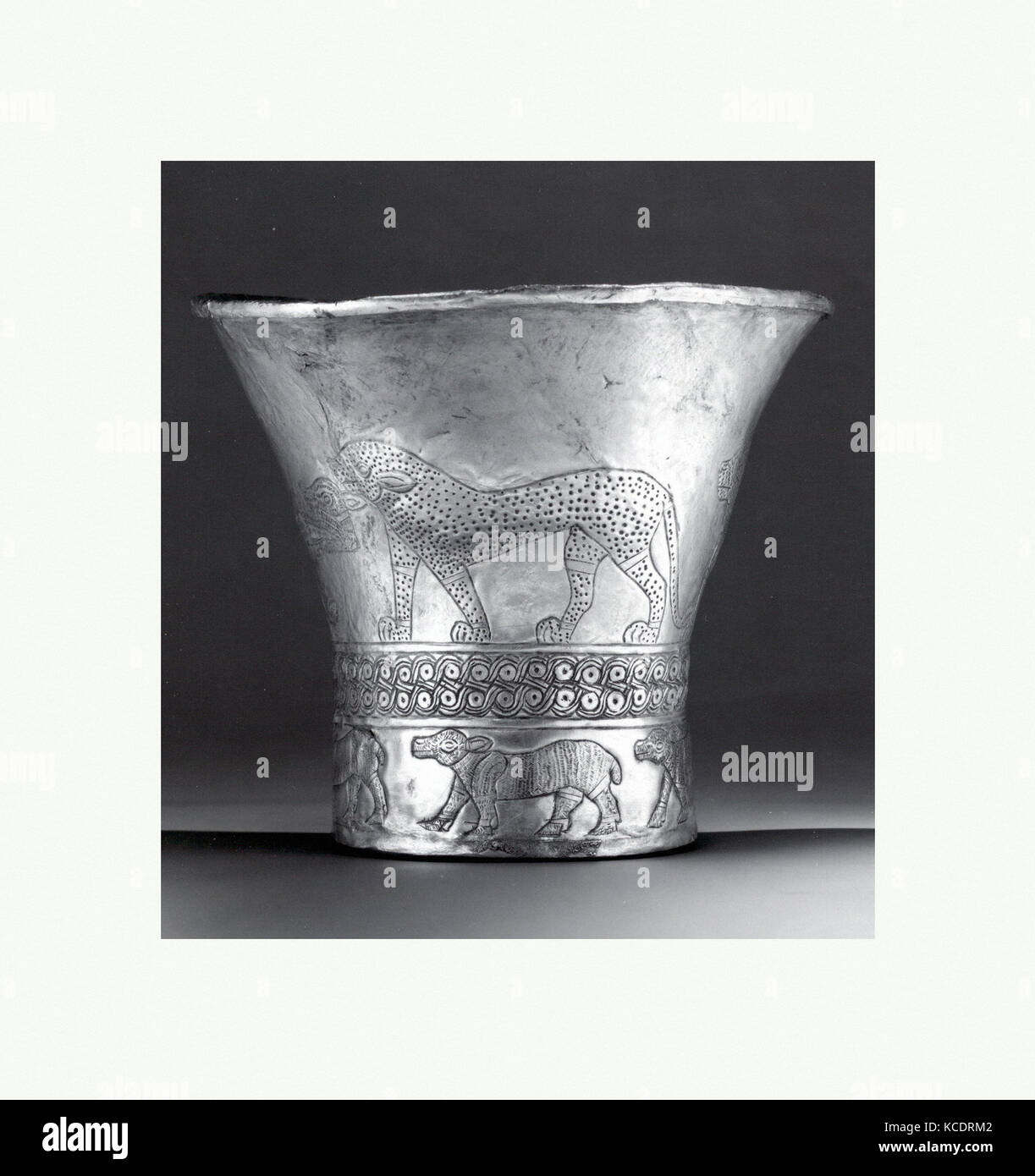 Cup, Early Bronze Age (?), 3rd Millennium BC (?), Syria, Silver, 4.04 in. (10.26 cm), Metalwork-Vessels-Inscribed Stock Photohttps://www.alamy.com/image-license-details/?v=1https://www.alamy.com/stock-image-cup-early-bronze-age-3rd-millennium-bc-syria-silver-404-in-1026-cm-162573154.html
Cup, Early Bronze Age (?), 3rd Millennium BC (?), Syria, Silver, 4.04 in. (10.26 cm), Metalwork-Vessels-Inscribed Stock Photohttps://www.alamy.com/image-license-details/?v=1https://www.alamy.com/stock-image-cup-early-bronze-age-3rd-millennium-bc-syria-silver-404-in-1026-cm-162573154.htmlRMKCDRM2–Cup, Early Bronze Age (?), 3rd Millennium BC (?), Syria, Silver, 4.04 in. (10.26 cm), Metalwork-Vessels-Inscribed
 bull's Head bronze Origin unknown Second Half of the 3rd Millennium BC Stock Photohttps://www.alamy.com/image-license-details/?v=1https://www.alamy.com/stock-photo-bulls-head-bronze-origin-unknown-second-half-of-the-3rd-millennium-57317669.html
bull's Head bronze Origin unknown Second Half of the 3rd Millennium BC Stock Photohttps://www.alamy.com/image-license-details/?v=1https://www.alamy.com/stock-photo-bulls-head-bronze-origin-unknown-second-half-of-the-3rd-millennium-57317669.htmlRMD9717H–bull's Head bronze Origin unknown Second Half of the 3rd Millennium BC
 Art inspired by Cup, Early Bronze Age (?), 3rd Millennium BC (?), Syria, Silver, 4.04 in. (10.26 cm), Metalwork-Vessels-Inscribed, Classic works modernized by Artotop with a splash of modernity. Shapes, color and value, eye-catching visual impact on art. Emotions through freedom of artworks in a contemporary way. A timeless message pursuing a wildly creative new direction. Artists turning to the digital medium and creating the Artotop NFT Stock Photohttps://www.alamy.com/image-license-details/?v=1https://www.alamy.com/art-inspired-by-cup-early-bronze-age-3rd-millennium-bc-syria-silver-404-in-1026-cm-metalwork-vessels-inscribed-classic-works-modernized-by-artotop-with-a-splash-of-modernity-shapes-color-and-value-eye-catching-visual-impact-on-art-emotions-through-freedom-of-artworks-in-a-contemporary-way-a-timeless-message-pursuing-a-wildly-creative-new-direction-artists-turning-to-the-digital-medium-and-creating-the-artotop-nft-image462799398.html
Art inspired by Cup, Early Bronze Age (?), 3rd Millennium BC (?), Syria, Silver, 4.04 in. (10.26 cm), Metalwork-Vessels-Inscribed, Classic works modernized by Artotop with a splash of modernity. Shapes, color and value, eye-catching visual impact on art. Emotions through freedom of artworks in a contemporary way. A timeless message pursuing a wildly creative new direction. Artists turning to the digital medium and creating the Artotop NFT Stock Photohttps://www.alamy.com/image-license-details/?v=1https://www.alamy.com/art-inspired-by-cup-early-bronze-age-3rd-millennium-bc-syria-silver-404-in-1026-cm-metalwork-vessels-inscribed-classic-works-modernized-by-artotop-with-a-splash-of-modernity-shapes-color-and-value-eye-catching-visual-impact-on-art-emotions-through-freedom-of-artworks-in-a-contemporary-way-a-timeless-message-pursuing-a-wildly-creative-new-direction-artists-turning-to-the-digital-medium-and-creating-the-artotop-nft-image462799398.htmlRF2HTX99X–Art inspired by Cup, Early Bronze Age (?), 3rd Millennium BC (?), Syria, Silver, 4.04 in. (10.26 cm), Metalwork-Vessels-Inscribed, Classic works modernized by Artotop with a splash of modernity. Shapes, color and value, eye-catching visual impact on art. Emotions through freedom of artworks in a contemporary way. A timeless message pursuing a wildly creative new direction. Artists turning to the digital medium and creating the Artotop NFT
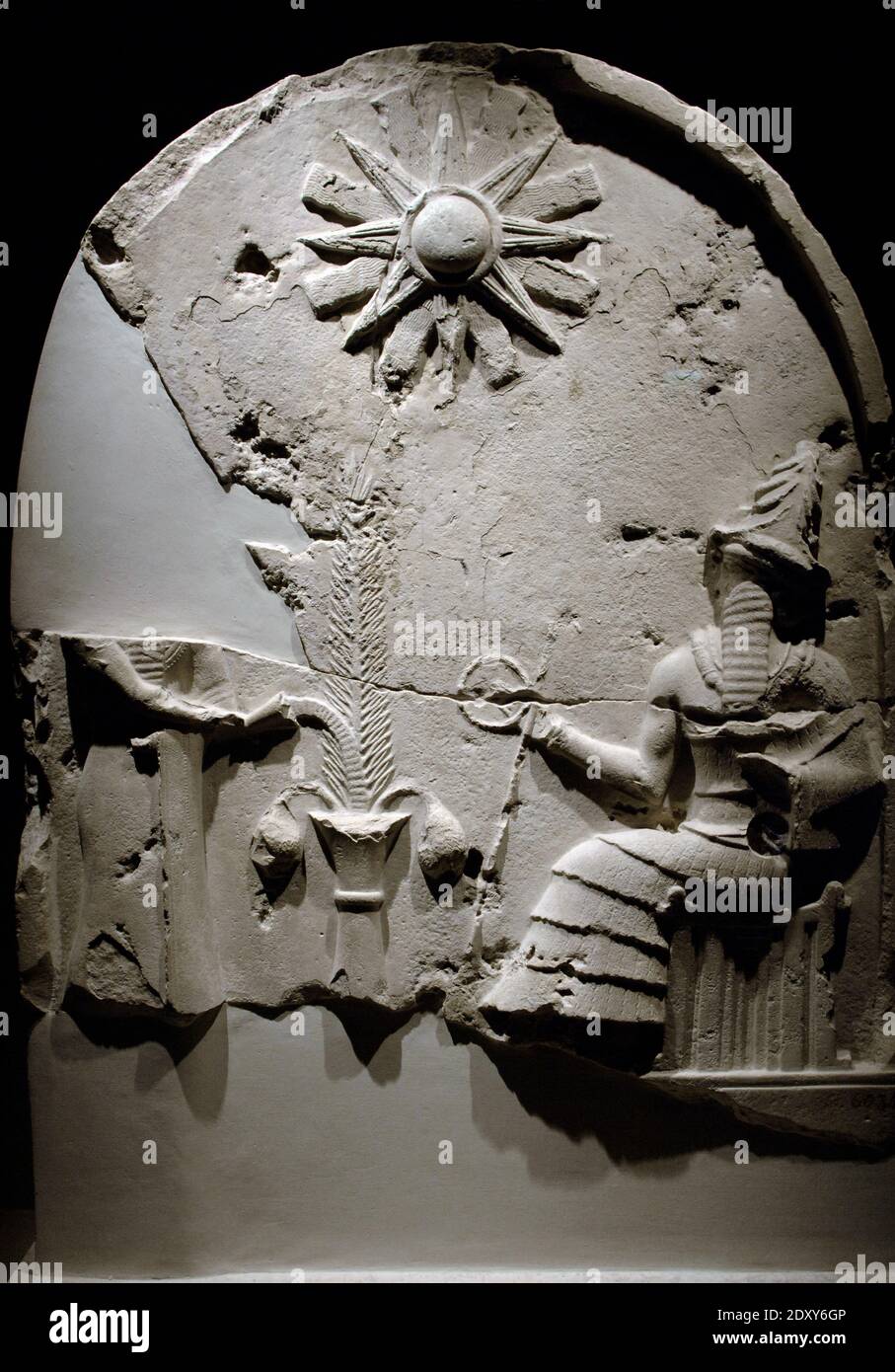 Upper section of a stele with depiction of a libation scene before a seated god. Late 3rd millennium BC. White limestone. On the left, a figure whose head is missing, probably a king, pours a libation at an altar adorned with a palm leaf. Southern Mesopotamian style. Susa. Third Dynasty of Ur. Louvre Museum. Paris, France. Stock Photohttps://www.alamy.com/image-license-details/?v=1https://www.alamy.com/upper-section-of-a-stele-with-depiction-of-a-libation-scene-before-a-seated-god-late-3rd-millennium-bc-white-limestone-on-the-left-a-figure-whose-head-is-missing-probably-a-king-pours-a-libation-at-an-altar-adorned-with-a-palm-leaf-southern-mesopotamian-style-susa-third-dynasty-of-ur-louvre-museum-paris-france-image395207030.html
Upper section of a stele with depiction of a libation scene before a seated god. Late 3rd millennium BC. White limestone. On the left, a figure whose head is missing, probably a king, pours a libation at an altar adorned with a palm leaf. Southern Mesopotamian style. Susa. Third Dynasty of Ur. Louvre Museum. Paris, France. Stock Photohttps://www.alamy.com/image-license-details/?v=1https://www.alamy.com/upper-section-of-a-stele-with-depiction-of-a-libation-scene-before-a-seated-god-late-3rd-millennium-bc-white-limestone-on-the-left-a-figure-whose-head-is-missing-probably-a-king-pours-a-libation-at-an-altar-adorned-with-a-palm-leaf-southern-mesopotamian-style-susa-third-dynasty-of-ur-louvre-museum-paris-france-image395207030.htmlRM2DXY6GP–Upper section of a stele with depiction of a libation scene before a seated god. Late 3rd millennium BC. White limestone. On the left, a figure whose head is missing, probably a king, pours a libation at an altar adorned with a palm leaf. Southern Mesopotamian style. Susa. Third Dynasty of Ur. Louvre Museum. Paris, France.
 A white and ginger cat blends with the color of the stone in the ruins in ancient Jbeil aka Byblos, Lebanon. 3rd millennium BC Stock Photohttps://www.alamy.com/image-license-details/?v=1https://www.alamy.com/stock-photo-a-white-and-ginger-cat-blends-with-the-color-of-the-stone-in-the-ruins-41475606.html
A white and ginger cat blends with the color of the stone in the ruins in ancient Jbeil aka Byblos, Lebanon. 3rd millennium BC Stock Photohttps://www.alamy.com/image-license-details/?v=1https://www.alamy.com/stock-photo-a-white-and-ginger-cat-blends-with-the-color-of-the-stone-in-the-ruins-41475606.htmlRMCBDAFJ–A white and ginger cat blends with the color of the stone in the ruins in ancient Jbeil aka Byblos, Lebanon. 3rd millennium BC
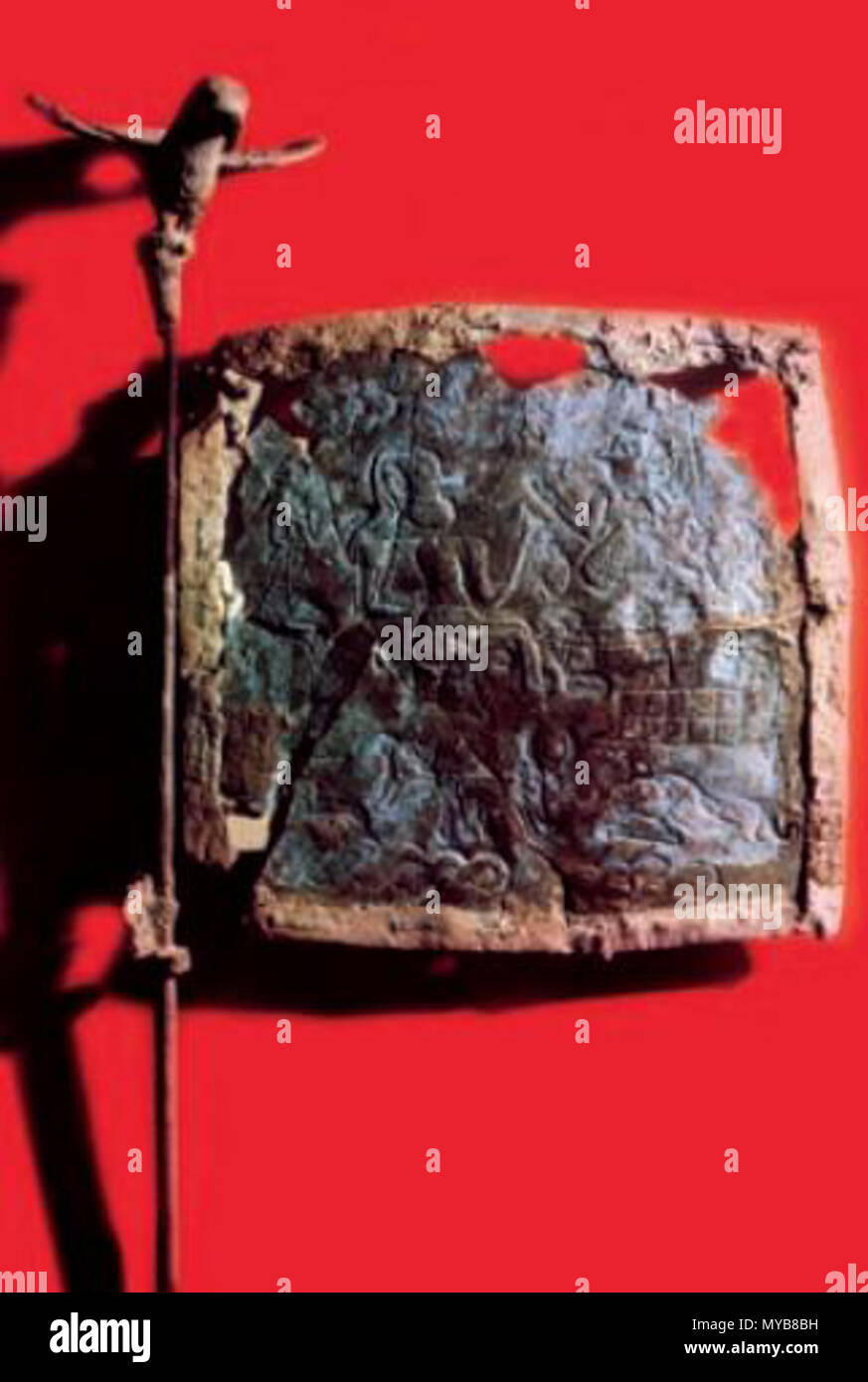 . English: Bronze flag, Shahdad Kerman, Iran فارسی: پرچم برنزی کشف شده در منطقه شهداد نزدیک کرمان، ایران . 3rd millennium BC. Unknown 87 Bronze flag, Shadad Kerman, Iran Stock Photohttps://www.alamy.com/image-license-details/?v=1https://www.alamy.com/english-bronze-flag-shahdad-kerman-iran-3rd-millennium-bc-unknown-87-bronze-flag-shadad-kerman-iran-image188947461.html
. English: Bronze flag, Shahdad Kerman, Iran فارسی: پرچم برنزی کشف شده در منطقه شهداد نزدیک کرمان، ایران . 3rd millennium BC. Unknown 87 Bronze flag, Shadad Kerman, Iran Stock Photohttps://www.alamy.com/image-license-details/?v=1https://www.alamy.com/english-bronze-flag-shahdad-kerman-iran-3rd-millennium-bc-unknown-87-bronze-flag-shadad-kerman-iran-image188947461.htmlRMMYB8BH–. English: Bronze flag, Shahdad Kerman, Iran فارسی: پرچم برنزی کشف شده در منطقه شهداد نزدیک کرمان، ایران . 3rd millennium BC. Unknown 87 Bronze flag, Shadad Kerman, Iran
 Pre-Nuragic Sardinia. From Paleolithic till the middle Bronze age. Stone stele. Representation of the Mediterranean Sea. 2nd- 3rd millennium BC. From San Vero Milis. Archeological Museum. Cagliari. Sardinia, Italy. Stock Photohttps://www.alamy.com/image-license-details/?v=1https://www.alamy.com/pre-nuragic-sardinia-from-paleolithic-till-the-middle-bronze-age-stone-stele-representation-of-the-mediterranean-sea-2nd-3rd-millennium-bc-from-san-vero-milis-archeological-museum-cagliari-sardinia-italy-image211160570.html
Pre-Nuragic Sardinia. From Paleolithic till the middle Bronze age. Stone stele. Representation of the Mediterranean Sea. 2nd- 3rd millennium BC. From San Vero Milis. Archeological Museum. Cagliari. Sardinia, Italy. Stock Photohttps://www.alamy.com/image-license-details/?v=1https://www.alamy.com/pre-nuragic-sardinia-from-paleolithic-till-the-middle-bronze-age-stone-stele-representation-of-the-mediterranean-sea-2nd-3rd-millennium-bc-from-san-vero-milis-archeological-museum-cagliari-sardinia-italy-image211160570.htmlRMP7F5CX–Pre-Nuragic Sardinia. From Paleolithic till the middle Bronze age. Stone stele. Representation of the Mediterranean Sea. 2nd- 3rd millennium BC. From San Vero Milis. Archeological Museum. Cagliari. Sardinia, Italy.
 The site of Babylon, Al Hillah - Iraq Babylon, city-state of ancient Mesopotamia, founded early in the 3rd millennium BC. Stock Photohttps://www.alamy.com/image-license-details/?v=1https://www.alamy.com/stock-photo-the-site-of-babylon-al-hillah-iraq-babylon-city-state-of-ancient-mesopotamia-135676865.html
The site of Babylon, Al Hillah - Iraq Babylon, city-state of ancient Mesopotamia, founded early in the 3rd millennium BC. Stock Photohttps://www.alamy.com/image-license-details/?v=1https://www.alamy.com/stock-photo-the-site-of-babylon-al-hillah-iraq-babylon-city-state-of-ancient-mesopotamia-135676865.htmlRMHTMH69–The site of Babylon, Al Hillah - Iraq Babylon, city-state of ancient Mesopotamia, founded early in the 3rd millennium BC.
 Iraq. Roya. cementery. Ur. Early Dynastic III. Gold ribbon from a head-dress. Female. 2600 BC. British Museum. London. Stock Photohttps://www.alamy.com/image-license-details/?v=1https://www.alamy.com/stock-photo-iraq-roya-cementery-ur-early-dynastic-iii-gold-ribbon-from-a-head-147889002.html
Iraq. Roya. cementery. Ur. Early Dynastic III. Gold ribbon from a head-dress. Female. 2600 BC. British Museum. London. Stock Photohttps://www.alamy.com/image-license-details/?v=1https://www.alamy.com/stock-photo-iraq-roya-cementery-ur-early-dynastic-iii-gold-ribbon-from-a-head-147889002.htmlRMJGGWX2–Iraq. Roya. cementery. Ur. Early Dynastic III. Gold ribbon from a head-dress. Female. 2600 BC. British Museum. London.
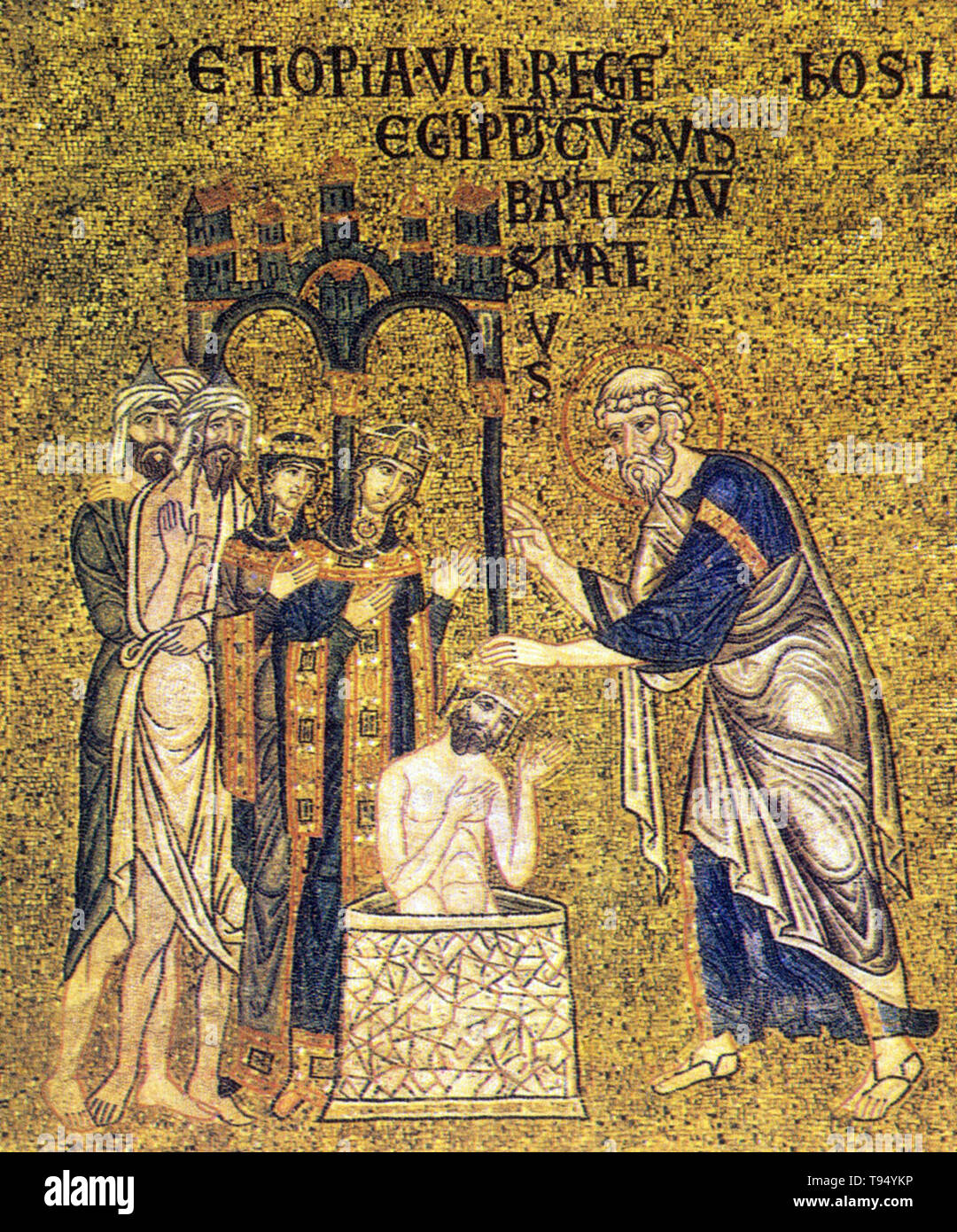 Detail of the mosaic of the dome over the baptismal font: an apostle in the act of baptizing. Mosaic work commissioned by Andrea Dandolo the 54th doge of Venice. Mosaics have a long history, starting in Mesopotamia in the 3rd millennium BC. Pebble mosaics were made in Tiryns in Mycenean Greece; mosaics with patterns and pictures became widespread in classical times, both in Ancient Greece and Ancient Rome. Stock Photohttps://www.alamy.com/image-license-details/?v=1https://www.alamy.com/detail-of-the-mosaic-of-the-dome-over-the-baptismal-font-an-apostle-in-the-act-of-baptizing-mosaic-work-commissioned-by-andrea-dandolo-the-54th-doge-of-venice-mosaics-have-a-long-history-starting-in-mesopotamia-in-the-3rd-millennium-bc-pebble-mosaics-were-made-in-tiryns-in-mycenean-greece-mosaics-with-patterns-and-pictures-became-widespread-in-classical-times-both-in-ancient-greece-and-ancient-rome-image246586586.html
Detail of the mosaic of the dome over the baptismal font: an apostle in the act of baptizing. Mosaic work commissioned by Andrea Dandolo the 54th doge of Venice. Mosaics have a long history, starting in Mesopotamia in the 3rd millennium BC. Pebble mosaics were made in Tiryns in Mycenean Greece; mosaics with patterns and pictures became widespread in classical times, both in Ancient Greece and Ancient Rome. Stock Photohttps://www.alamy.com/image-license-details/?v=1https://www.alamy.com/detail-of-the-mosaic-of-the-dome-over-the-baptismal-font-an-apostle-in-the-act-of-baptizing-mosaic-work-commissioned-by-andrea-dandolo-the-54th-doge-of-venice-mosaics-have-a-long-history-starting-in-mesopotamia-in-the-3rd-millennium-bc-pebble-mosaics-were-made-in-tiryns-in-mycenean-greece-mosaics-with-patterns-and-pictures-became-widespread-in-classical-times-both-in-ancient-greece-and-ancient-rome-image246586586.htmlRMT94YKP–Detail of the mosaic of the dome over the baptismal font: an apostle in the act of baptizing. Mosaic work commissioned by Andrea Dandolo the 54th doge of Venice. Mosaics have a long history, starting in Mesopotamia in the 3rd millennium BC. Pebble mosaics were made in Tiryns in Mycenean Greece; mosaics with patterns and pictures became widespread in classical times, both in Ancient Greece and Ancient Rome.
 Priest-King or Deity, c. 1600 BC. The Hittites migrated into Anatolia in the 3rd millennium BC and spoke an Indo-European language, a group that includes Greek, Latin, Persian, Sanskrit, English, and most modern European languages. They were the first ancient people to use iron for weapons. From about 1600-1200 BC their empire was at its peak, extending from central Anatolia to Syria, and south along the eastern Mediterranean. Their vast empire and interest in commerce enabled the Hittites to spread Mesopotamian ideas and culture throughout the ancient Mediterranean world. This large basalt sc Stock Photohttps://www.alamy.com/image-license-details/?v=1https://www.alamy.com/priest-king-or-deity-c-1600-bc-the-hittites-migrated-into-anatolia-in-the-3rd-millennium-bc-and-spoke-an-indo-european-language-a-group-that-includes-greek-latin-persian-sanskrit-english-and-most-modern-european-languages-they-were-the-first-ancient-people-to-use-iron-for-weapons-from-about-1600-1200-bc-their-empire-was-at-its-peak-extending-from-central-anatolia-to-syria-and-south-along-the-eastern-mediterranean-their-vast-empire-and-interest-in-commerce-enabled-the-hittites-to-spread-mesopotamian-ideas-and-culture-throughout-the-ancient-mediterranean-world-this-large-basalt-sc-image330114277.html
Priest-King or Deity, c. 1600 BC. The Hittites migrated into Anatolia in the 3rd millennium BC and spoke an Indo-European language, a group that includes Greek, Latin, Persian, Sanskrit, English, and most modern European languages. They were the first ancient people to use iron for weapons. From about 1600-1200 BC their empire was at its peak, extending from central Anatolia to Syria, and south along the eastern Mediterranean. Their vast empire and interest in commerce enabled the Hittites to spread Mesopotamian ideas and culture throughout the ancient Mediterranean world. This large basalt sc Stock Photohttps://www.alamy.com/image-license-details/?v=1https://www.alamy.com/priest-king-or-deity-c-1600-bc-the-hittites-migrated-into-anatolia-in-the-3rd-millennium-bc-and-spoke-an-indo-european-language-a-group-that-includes-greek-latin-persian-sanskrit-english-and-most-modern-european-languages-they-were-the-first-ancient-people-to-use-iron-for-weapons-from-about-1600-1200-bc-their-empire-was-at-its-peak-extending-from-central-anatolia-to-syria-and-south-along-the-eastern-mediterranean-their-vast-empire-and-interest-in-commerce-enabled-the-hittites-to-spread-mesopotamian-ideas-and-culture-throughout-the-ancient-mediterranean-world-this-large-basalt-sc-image330114277.htmlRM2A5203H–Priest-King or Deity, c. 1600 BC. The Hittites migrated into Anatolia in the 3rd millennium BC and spoke an Indo-European language, a group that includes Greek, Latin, Persian, Sanskrit, English, and most modern European languages. They were the first ancient people to use iron for weapons. From about 1600-1200 BC their empire was at its peak, extending from central Anatolia to Syria, and south along the eastern Mediterranean. Their vast empire and interest in commerce enabled the Hittites to spread Mesopotamian ideas and culture throughout the ancient Mediterranean world. This large basalt sc
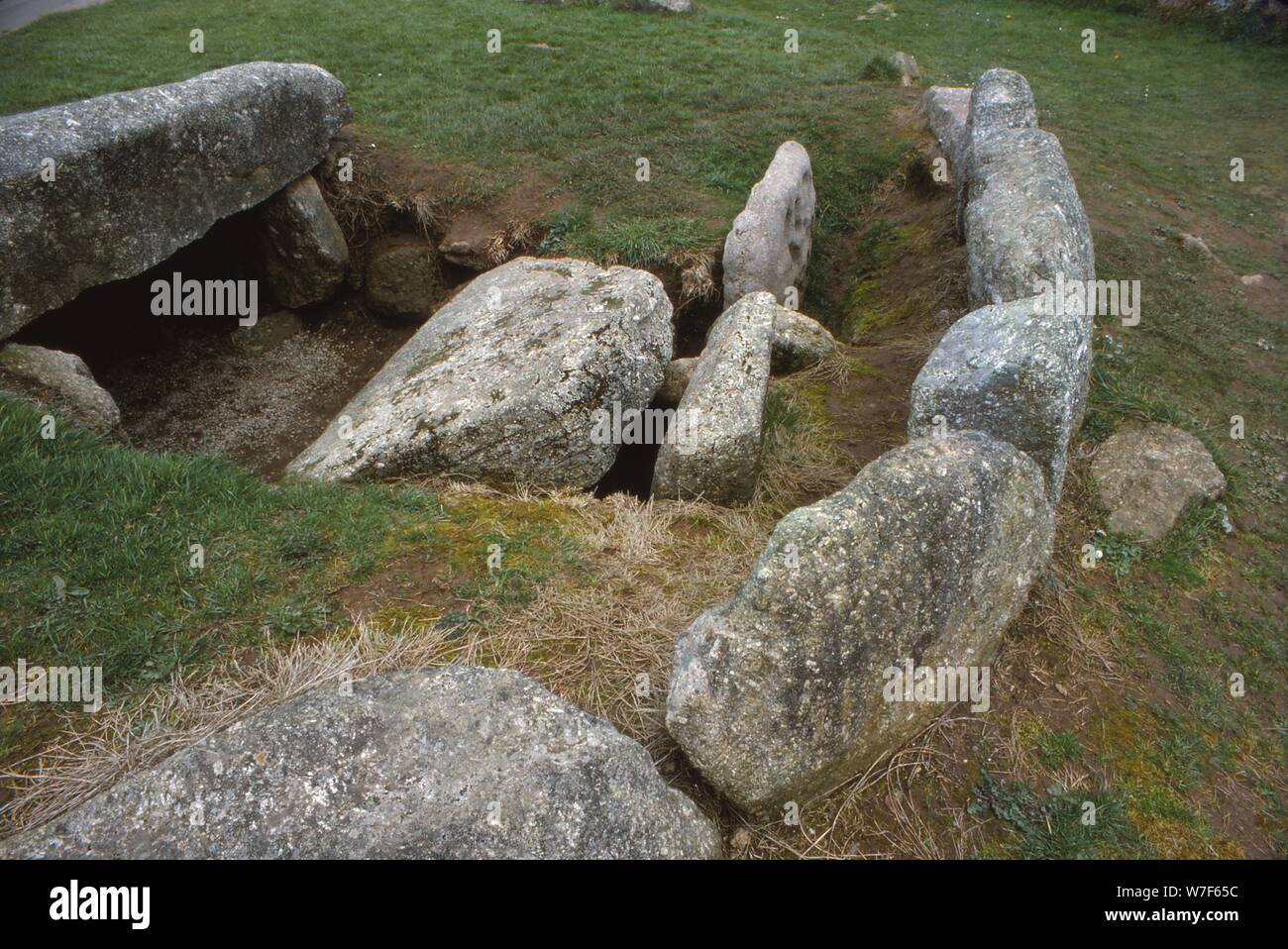 Tregiffian Barrow, Neolithic tomb, 3rd Millennium BC, Penwith, Cornwall, 20th century. Artist: CM Dixon. Stock Photohttps://www.alamy.com/image-license-details/?v=1https://www.alamy.com/tregiffian-barrow-neolithic-tomb-3rd-millennium-bc-penwith-cornwall-20th-century-artist-cm-dixon-image262792248.html
Tregiffian Barrow, Neolithic tomb, 3rd Millennium BC, Penwith, Cornwall, 20th century. Artist: CM Dixon. Stock Photohttps://www.alamy.com/image-license-details/?v=1https://www.alamy.com/tregiffian-barrow-neolithic-tomb-3rd-millennium-bc-penwith-cornwall-20th-century-artist-cm-dixon-image262792248.htmlRMW7F65C–Tregiffian Barrow, Neolithic tomb, 3rd Millennium BC, Penwith, Cornwall, 20th century. Artist: CM Dixon.
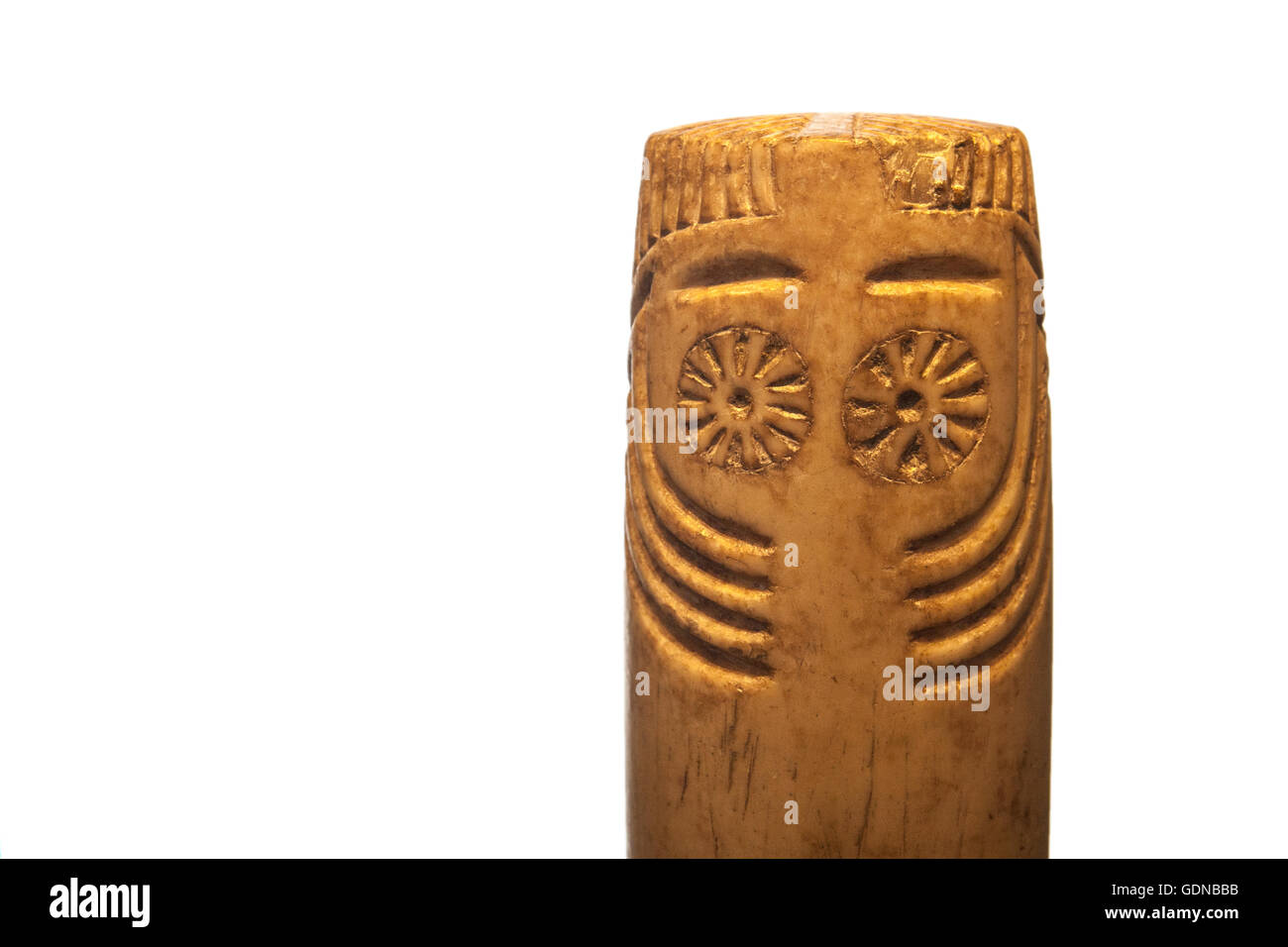 Prehistorical Eye idol belong to Chalcolithic period, 3rd millennium BC. Isolated over white background Stock Photohttps://www.alamy.com/image-license-details/?v=1https://www.alamy.com/stock-photo-prehistorical-eye-idol-belong-to-chalcolithic-period-3rd-millennium-111722671.html
Prehistorical Eye idol belong to Chalcolithic period, 3rd millennium BC. Isolated over white background Stock Photohttps://www.alamy.com/image-license-details/?v=1https://www.alamy.com/stock-photo-prehistorical-eye-idol-belong-to-chalcolithic-period-3rd-millennium-111722671.htmlRMGDNBBB–Prehistorical Eye idol belong to Chalcolithic period, 3rd millennium BC. Isolated over white background
 Dark clouds after hailstorm over the circular burial site of Poemmelte, ritual site from the 3rd millennium BC, Saxony-Anhalt, Germany Stock Photohttps://www.alamy.com/image-license-details/?v=1https://www.alamy.com/dark-clouds-after-hailstorm-over-the-circular-burial-site-of-poemmelte-ritual-site-from-the-3rd-millennium-bc-saxony-anhalt-germany-image546659936.html
Dark clouds after hailstorm over the circular burial site of Poemmelte, ritual site from the 3rd millennium BC, Saxony-Anhalt, Germany Stock Photohttps://www.alamy.com/image-license-details/?v=1https://www.alamy.com/dark-clouds-after-hailstorm-over-the-circular-burial-site-of-poemmelte-ritual-site-from-the-3rd-millennium-bc-saxony-anhalt-germany-image546659936.htmlRM2PNAE94–Dark clouds after hailstorm over the circular burial site of Poemmelte, ritual site from the 3rd millennium BC, Saxony-Anhalt, Germany
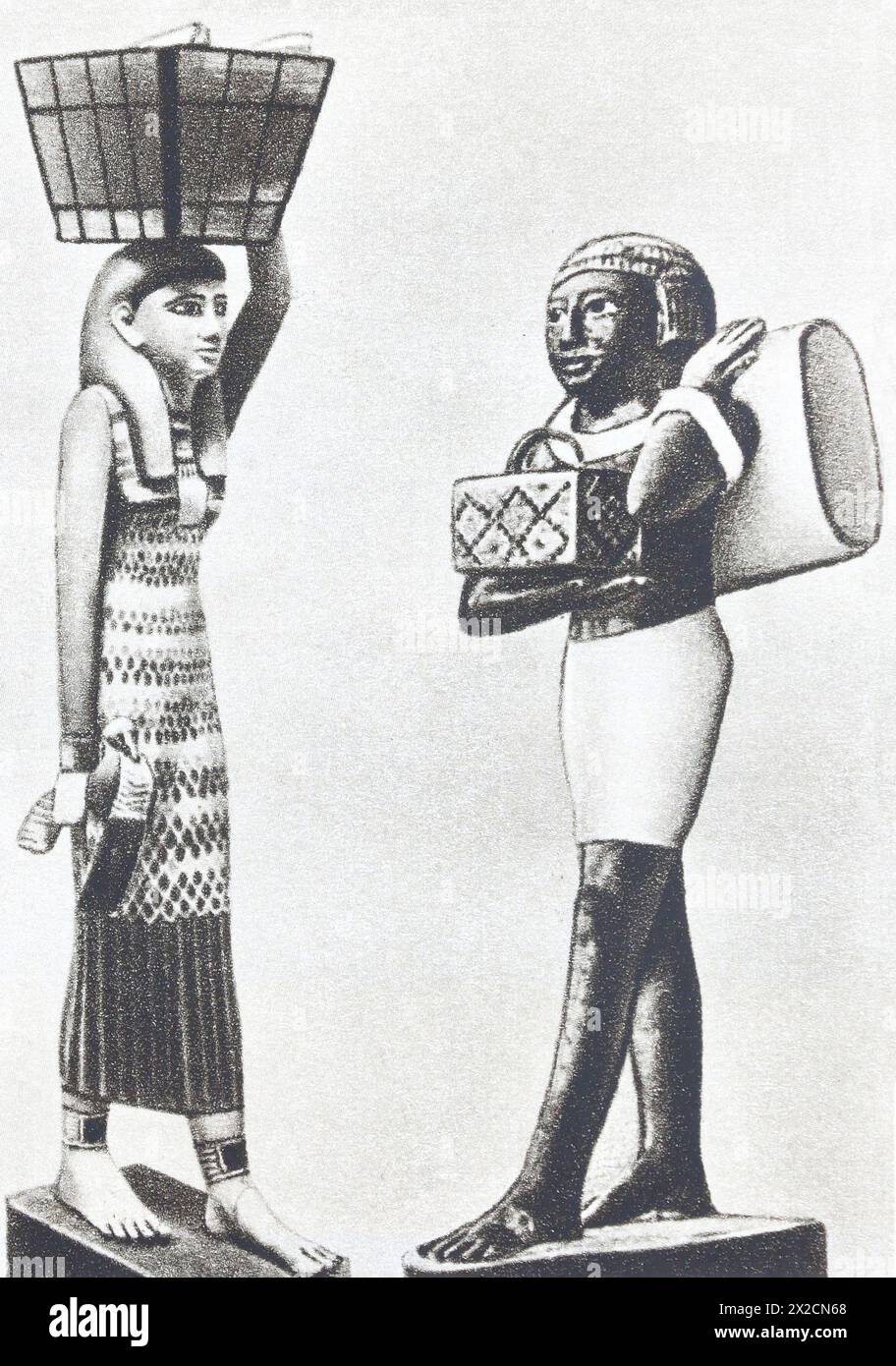 Ancient Egyptian wooden figurines depicting servants from a rich house of the 3rd millennium BC. Photo from the mid-20th century. Stock Photohttps://www.alamy.com/image-license-details/?v=1https://www.alamy.com/ancient-egyptian-wooden-figurines-depicting-servants-from-a-rich-house-of-the-3rd-millennium-bc-photo-from-the-mid-20th-century-image603872256.html
Ancient Egyptian wooden figurines depicting servants from a rich house of the 3rd millennium BC. Photo from the mid-20th century. Stock Photohttps://www.alamy.com/image-license-details/?v=1https://www.alamy.com/ancient-egyptian-wooden-figurines-depicting-servants-from-a-rich-house-of-the-3rd-millennium-bc-photo-from-the-mid-20th-century-image603872256.htmlRM2X2CN68–Ancient Egyptian wooden figurines depicting servants from a rich house of the 3rd millennium BC. Photo from the mid-20th century.
 The beehive tombs from the 3rd millennium BC, Al Ayn, Oman, UNESCO Stock Photohttps://www.alamy.com/image-license-details/?v=1https://www.alamy.com/the-beehive-tombs-from-the-3rd-millennium-bc-al-ayn-oman-unesco-image5901447.html
The beehive tombs from the 3rd millennium BC, Al Ayn, Oman, UNESCO Stock Photohttps://www.alamy.com/image-license-details/?v=1https://www.alamy.com/the-beehive-tombs-from-the-3rd-millennium-bc-al-ayn-oman-unesco-image5901447.htmlRMA1TBM8–The beehive tombs from the 3rd millennium BC, Al Ayn, Oman, UNESCO
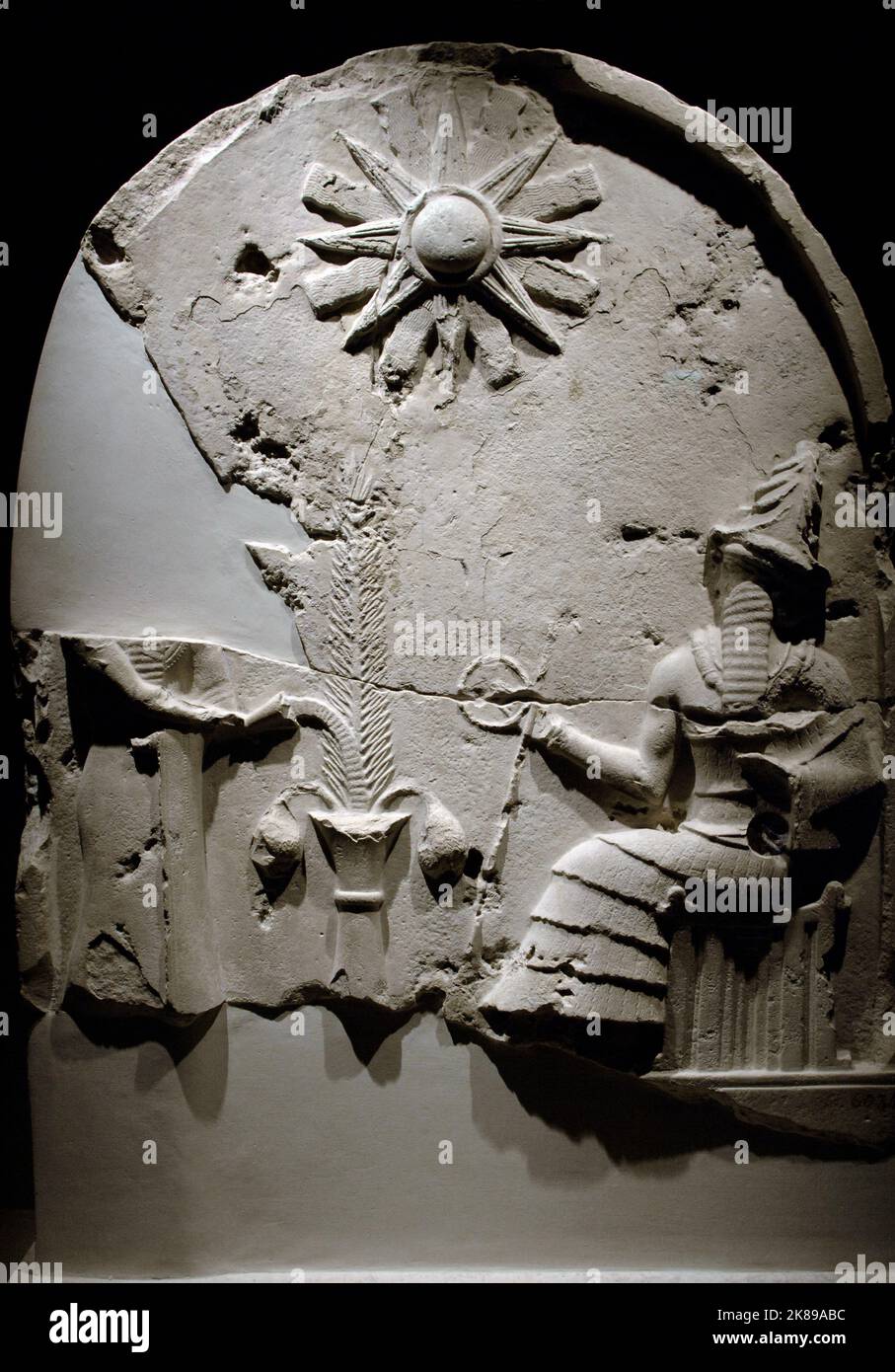 Stele with depiction of a libation scene before a seated god. Stock Photohttps://www.alamy.com/image-license-details/?v=1https://www.alamy.com/stele-with-depiction-of-a-libation-scene-before-a-seated-god-image487013280.html
Stele with depiction of a libation scene before a seated god. Stock Photohttps://www.alamy.com/image-license-details/?v=1https://www.alamy.com/stele-with-depiction-of-a-libation-scene-before-a-seated-god-image487013280.htmlRM2K89ABC–Stele with depiction of a libation scene before a seated god.
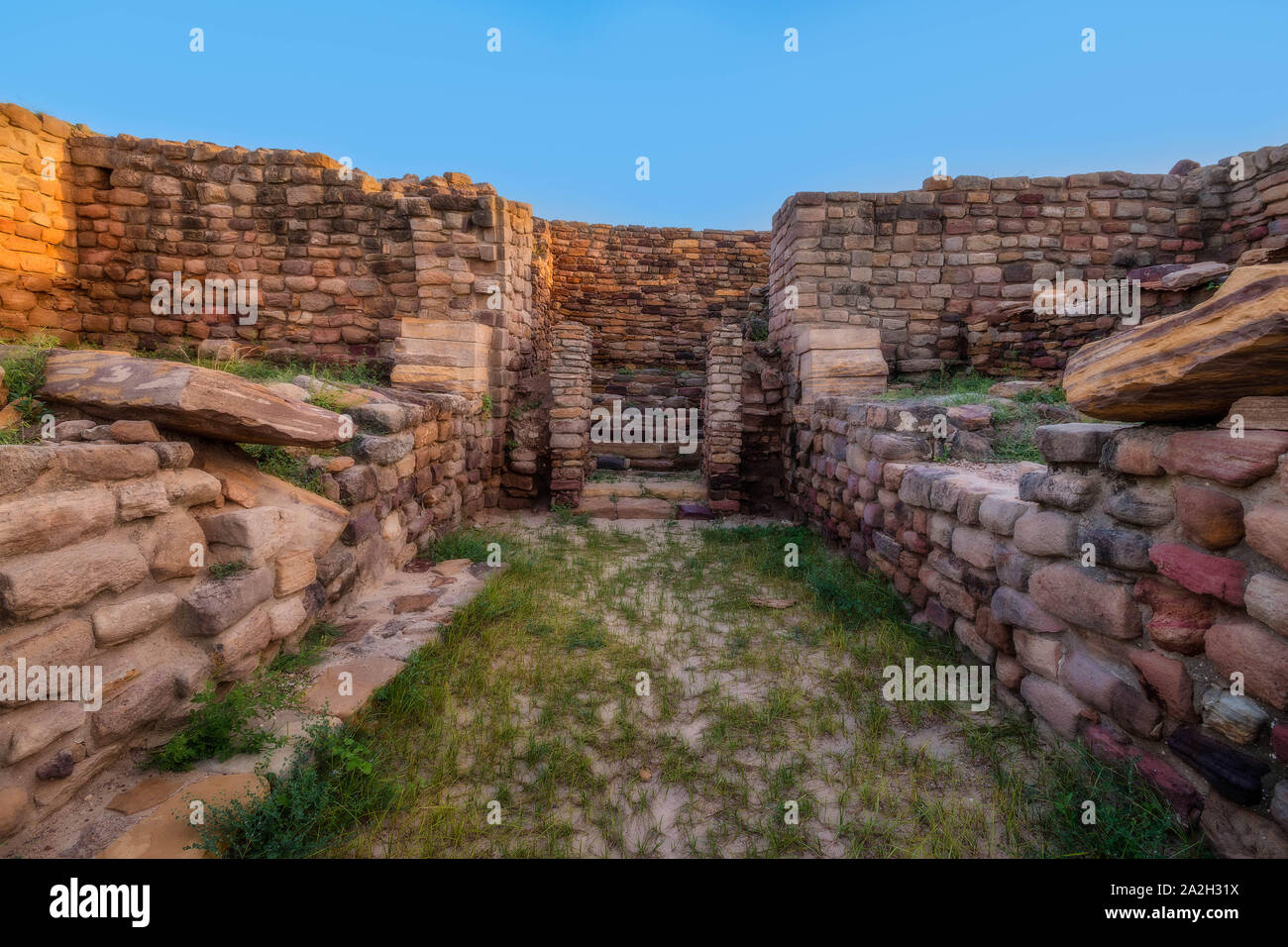 Dholavira Stock Photohttps://www.alamy.com/image-license-details/?v=1https://www.alamy.com/dholavira-image328601894.html
Dholavira Stock Photohttps://www.alamy.com/image-license-details/?v=1https://www.alamy.com/dholavira-image328601894.htmlRF2A2H31X–Dholavira
 Pottery Early Bronze Age 3rd Millennium BC Antalya Bolgesi Region Turkey Turkish Stock Photohttps://www.alamy.com/image-license-details/?v=1https://www.alamy.com/stock-photo-pottery-early-bronze-age-3rd-millennium-bc-antalya-bolgesi-region-38112502.html
Pottery Early Bronze Age 3rd Millennium BC Antalya Bolgesi Region Turkey Turkish Stock Photohttps://www.alamy.com/image-license-details/?v=1https://www.alamy.com/stock-photo-pottery-early-bronze-age-3rd-millennium-bc-antalya-bolgesi-region-38112502.htmlRMC604TP–Pottery Early Bronze Age 3rd Millennium BC Antalya Bolgesi Region Turkey Turkish
 Spiral, Early Bronze Age (?), Date 3rd Millennium BC (?), Syria, Silver, 11/16 in. (1.8 cm), Metalwork-Ornaments Stock Photohttps://www.alamy.com/image-license-details/?v=1https://www.alamy.com/spiral-early-bronze-age-date-3rd-millennium-bc-syria-silver-1116-in-18-cm-metalwork-ornaments-image344674704.html
Spiral, Early Bronze Age (?), Date 3rd Millennium BC (?), Syria, Silver, 11/16 in. (1.8 cm), Metalwork-Ornaments Stock Photohttps://www.alamy.com/image-license-details/?v=1https://www.alamy.com/spiral-early-bronze-age-date-3rd-millennium-bc-syria-silver-1116-in-18-cm-metalwork-ornaments-image344674704.htmlRM2B0N82T–Spiral, Early Bronze Age (?), Date 3rd Millennium BC (?), Syria, Silver, 11/16 in. (1.8 cm), Metalwork-Ornaments
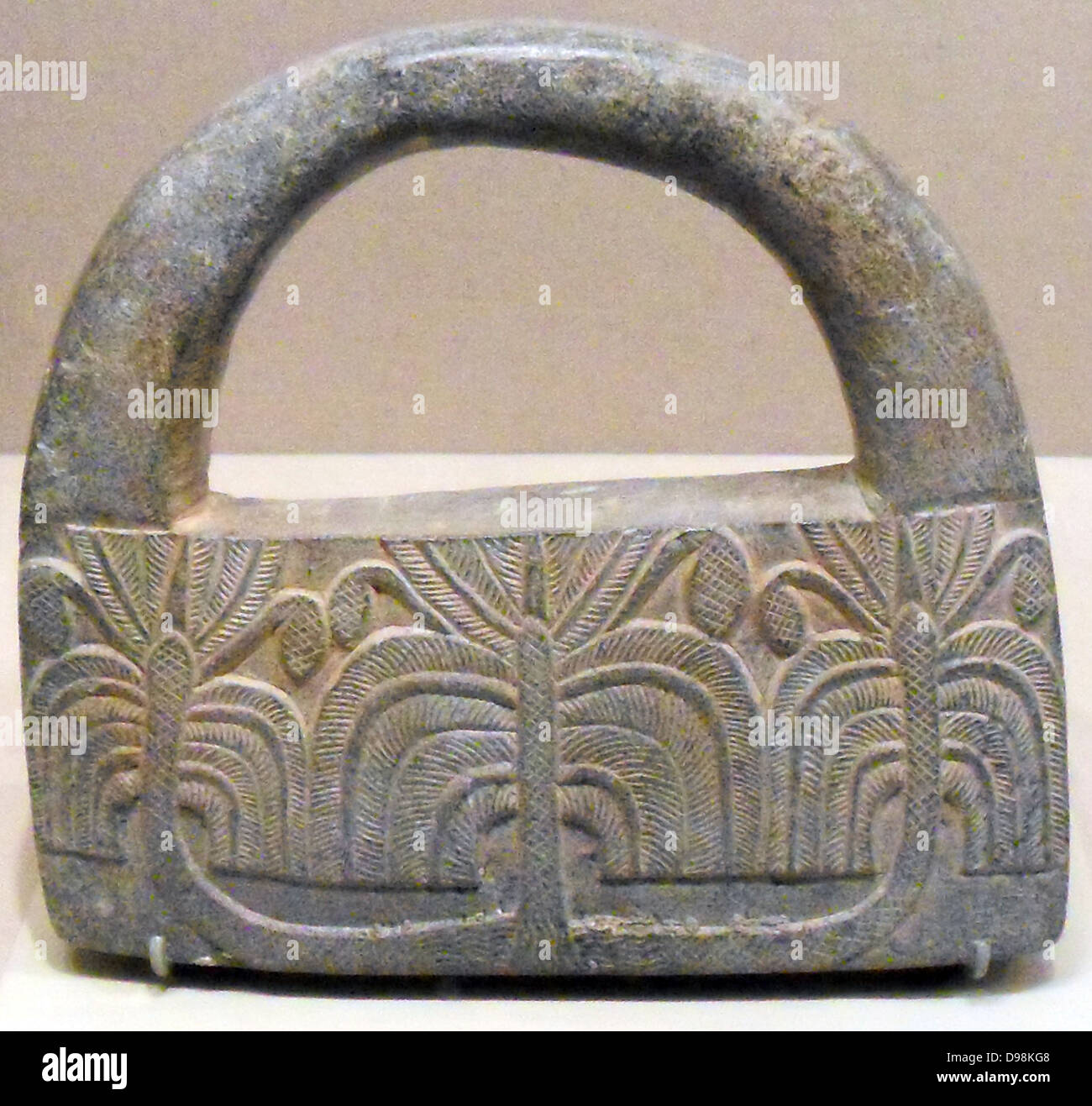 Object made from chlorite schist. Possibly used as a paperweight. Iranian, Persian 3rd millennium BC Stock Photohttps://www.alamy.com/image-license-details/?v=1https://www.alamy.com/stock-photo-object-made-from-chlorite-schist-possibly-used-as-a-paperweight-iranian-57353976.html
Object made from chlorite schist. Possibly used as a paperweight. Iranian, Persian 3rd millennium BC Stock Photohttps://www.alamy.com/image-license-details/?v=1https://www.alamy.com/stock-photo-object-made-from-chlorite-schist-possibly-used-as-a-paperweight-iranian-57353976.htmlRMD98KG8–Object made from chlorite schist. Possibly used as a paperweight. Iranian, Persian 3rd millennium BC
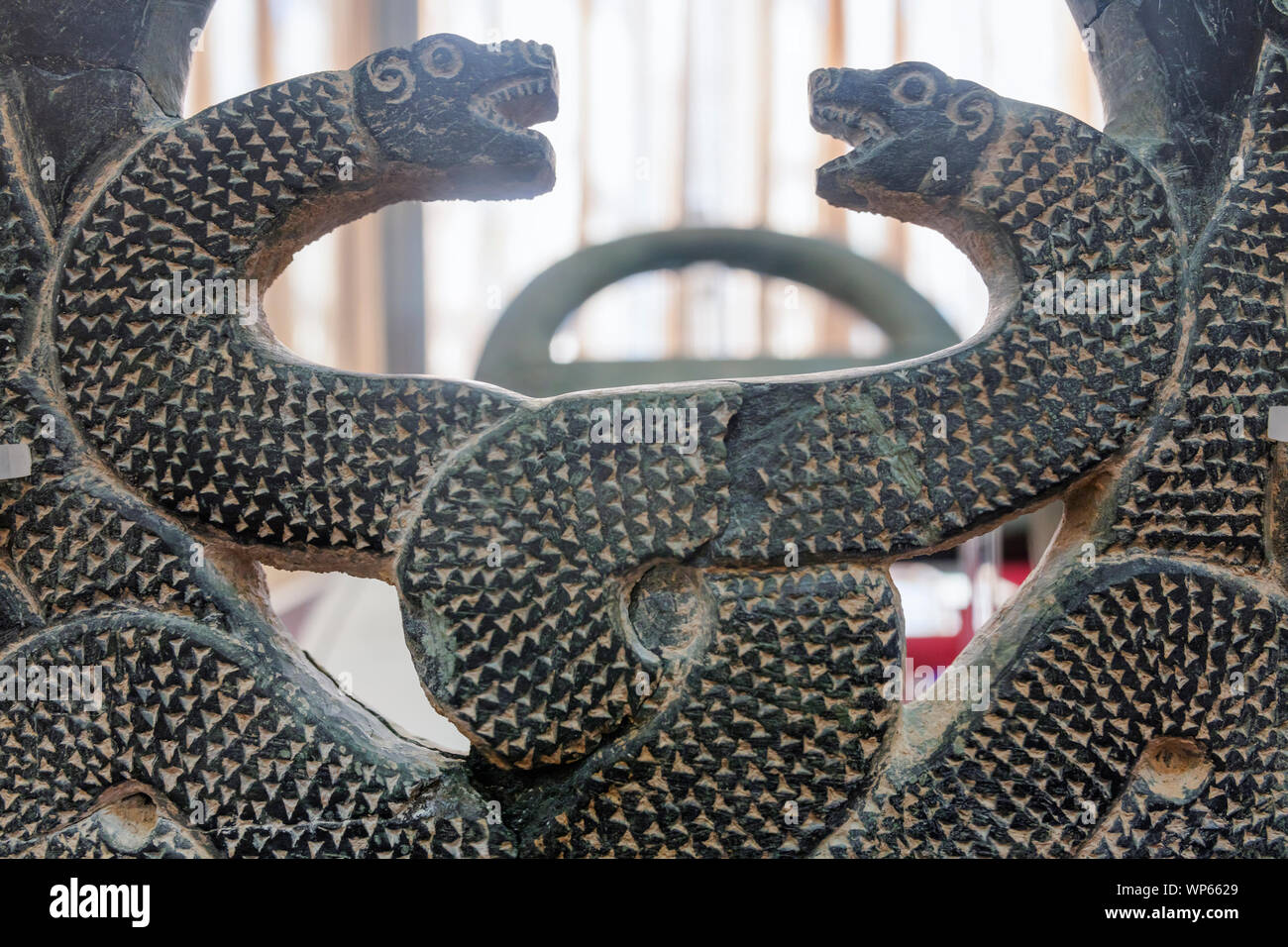 Rock weight, Jiroft, 3rd millennium BC, Azerbaijan Museum, Tabriz, East Azerbaijan province, Iran Stock Photohttps://www.alamy.com/image-license-details/?v=1https://www.alamy.com/rock-weight-jiroft-3rd-millennium-bc-azerbaijan-museum-tabriz-east-azerbaijan-province-iran-image271814433.html
Rock weight, Jiroft, 3rd millennium BC, Azerbaijan Museum, Tabriz, East Azerbaijan province, Iran Stock Photohttps://www.alamy.com/image-license-details/?v=1https://www.alamy.com/rock-weight-jiroft-3rd-millennium-bc-azerbaijan-museum-tabriz-east-azerbaijan-province-iran-image271814433.htmlRMWP6629–Rock weight, Jiroft, 3rd millennium BC, Azerbaijan Museum, Tabriz, East Azerbaijan province, Iran
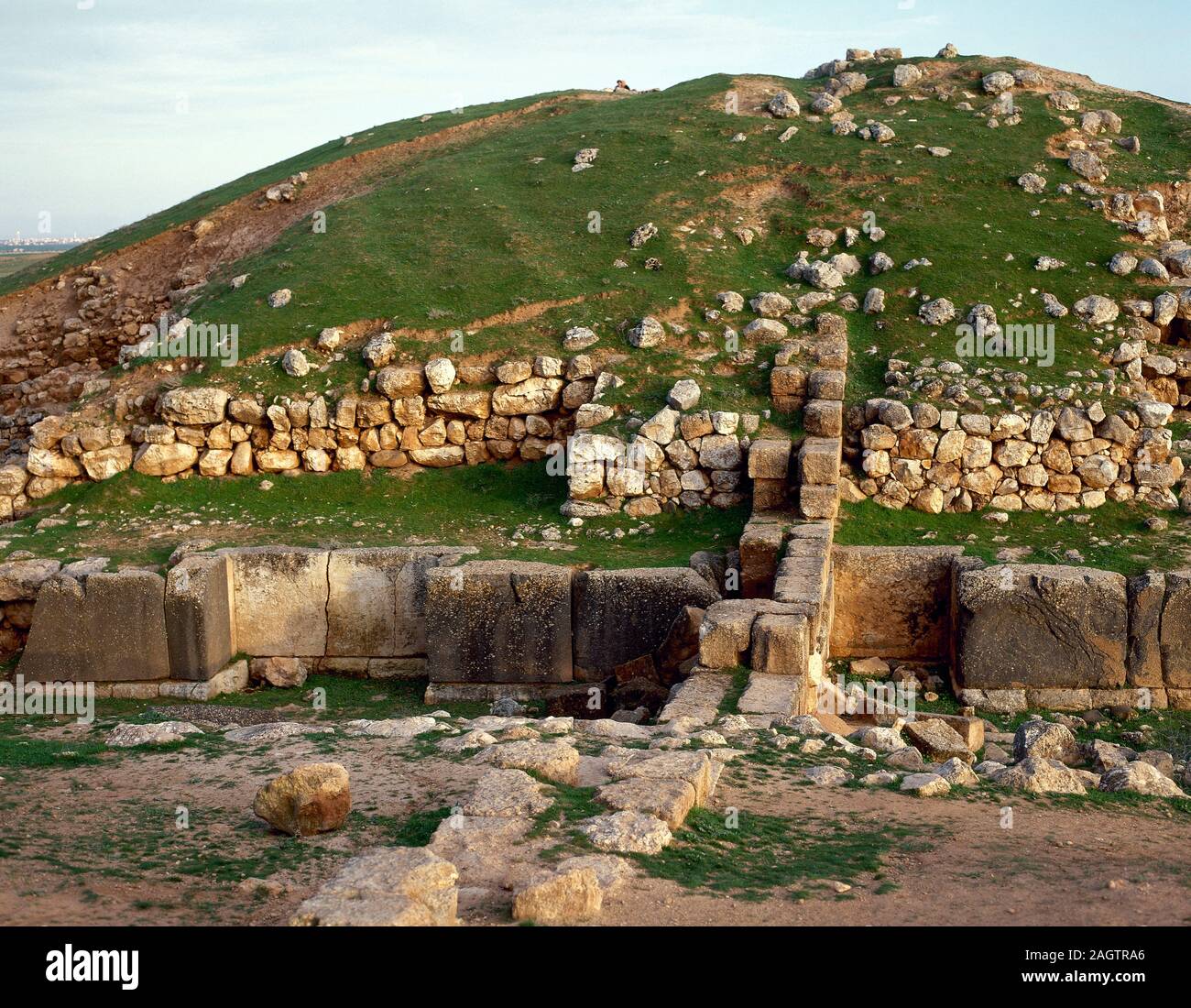 Eastern Mediterranean Civilization. Ebla. Syrian city of the 3rd millenium BC. Capital of the Semitic Kingdom. (Currently called Tell Mardikh). Ruins. Photo taken before the Syrian Civil War. Stock Photohttps://www.alamy.com/image-license-details/?v=1https://www.alamy.com/eastern-mediterranean-civilization-ebla-syrian-city-of-the-3rd-millenium-bc-capital-of-the-semitic-kingdom-currently-called-tell-mardikh-ruins-photo-taken-before-the-syrian-civil-war-image337376654.html
Eastern Mediterranean Civilization. Ebla. Syrian city of the 3rd millenium BC. Capital of the Semitic Kingdom. (Currently called Tell Mardikh). Ruins. Photo taken before the Syrian Civil War. Stock Photohttps://www.alamy.com/image-license-details/?v=1https://www.alamy.com/eastern-mediterranean-civilization-ebla-syrian-city-of-the-3rd-millenium-bc-capital-of-the-semitic-kingdom-currently-called-tell-mardikh-ruins-photo-taken-before-the-syrian-civil-war-image337376654.htmlRM2AGTRA6–Eastern Mediterranean Civilization. Ebla. Syrian city of the 3rd millenium BC. Capital of the Semitic Kingdom. (Currently called Tell Mardikh). Ruins. Photo taken before the Syrian Civil War.
 Ruins in ancient Jbeil aka Byblos, Lebanon. 3rd millennium BC civilisation. Stock Photohttps://www.alamy.com/image-license-details/?v=1https://www.alamy.com/stock-photo-ruins-in-ancient-jbeil-aka-byblos-lebanon-3rd-millennium-bc-civilisation-41475541.html
Ruins in ancient Jbeil aka Byblos, Lebanon. 3rd millennium BC civilisation. Stock Photohttps://www.alamy.com/image-license-details/?v=1https://www.alamy.com/stock-photo-ruins-in-ancient-jbeil-aka-byblos-lebanon-3rd-millennium-bc-civilisation-41475541.htmlRMCBDAD9–Ruins in ancient Jbeil aka Byblos, Lebanon. 3rd millennium BC civilisation.
 . English: Bronze flag, Shahdad Kerman, Iran فارسی: پرچم برنزی کشف شده در منطقه شهداد نزدیک کرمان، ایران . 3rd millennium BC. Unknown 99 Bronze flag, Shadad Kerman, Iran Stock Photohttps://www.alamy.com/image-license-details/?v=1https://www.alamy.com/english-bronze-flag-shahdad-kerman-iran-3rd-millennium-bc-unknown-99-bronze-flag-shadad-kerman-iran-image187677155.html
. English: Bronze flag, Shahdad Kerman, Iran فارسی: پرچم برنزی کشف شده در منطقه شهداد نزدیک کرمان، ایران . 3rd millennium BC. Unknown 99 Bronze flag, Shadad Kerman, Iran Stock Photohttps://www.alamy.com/image-license-details/?v=1https://www.alamy.com/english-bronze-flag-shahdad-kerman-iran-3rd-millennium-bc-unknown-99-bronze-flag-shadad-kerman-iran-image187677155.htmlRMMW9C3F–. English: Bronze flag, Shahdad Kerman, Iran فارسی: پرچم برنزی کشف شده در منطقه شهداد نزدیک کرمان، ایران . 3rd millennium BC. Unknown 99 Bronze flag, Shadad Kerman, Iran
 Syria. Ebla. Ruins of Ebla. Eblan civilization, Early Bronze Age, 3rd millennium BC. Lower town. Ruins. Stock Photohttps://www.alamy.com/image-license-details/?v=1https://www.alamy.com/syria-ebla-ruins-of-ebla-eblan-civilization-early-bronze-age-3rd-millennium-bc-lower-town-ruins-image210597774.html
Syria. Ebla. Ruins of Ebla. Eblan civilization, Early Bronze Age, 3rd millennium BC. Lower town. Ruins. Stock Photohttps://www.alamy.com/image-license-details/?v=1https://www.alamy.com/syria-ebla-ruins-of-ebla-eblan-civilization-early-bronze-age-3rd-millennium-bc-lower-town-ruins-image210597774.htmlRMP6HFH2–Syria. Ebla. Ruins of Ebla. Eblan civilization, Early Bronze Age, 3rd millennium BC. Lower town. Ruins.
 A late 3rd millennium BC public building and early 2nd millennium BC princely tomb named site G unearthed in Tell es-Sultan a UNESCO World Heritage site, Prehistoric ruins of one of the oldest known permanent settlements, dating back to 10,000 BCE which has been called 'the oldest town in the world' located in the city of Jericho in the West Bank, Israel. Stock Photohttps://www.alamy.com/image-license-details/?v=1https://www.alamy.com/a-late-3rd-millennium-bc-public-building-and-early-2nd-millennium-bc-princely-tomb-named-site-g-unearthed-in-tell-es-sultan-a-unesco-world-heritage-site-prehistoric-ruins-of-one-of-the-oldest-known-permanent-settlements-dating-back-to-10000-bce-which-has-been-called-the-oldest-town-in-the-world-located-in-the-city-of-jericho-in-the-west-bank-israel-image243743841.html
A late 3rd millennium BC public building and early 2nd millennium BC princely tomb named site G unearthed in Tell es-Sultan a UNESCO World Heritage site, Prehistoric ruins of one of the oldest known permanent settlements, dating back to 10,000 BCE which has been called 'the oldest town in the world' located in the city of Jericho in the West Bank, Israel. Stock Photohttps://www.alamy.com/image-license-details/?v=1https://www.alamy.com/a-late-3rd-millennium-bc-public-building-and-early-2nd-millennium-bc-princely-tomb-named-site-g-unearthed-in-tell-es-sultan-a-unesco-world-heritage-site-prehistoric-ruins-of-one-of-the-oldest-known-permanent-settlements-dating-back-to-10000-bce-which-has-been-called-the-oldest-town-in-the-world-located-in-the-city-of-jericho-in-the-west-bank-israel-image243743841.htmlRMT4FDN5–A late 3rd millennium BC public building and early 2nd millennium BC princely tomb named site G unearthed in Tell es-Sultan a UNESCO World Heritage site, Prehistoric ruins of one of the oldest known permanent settlements, dating back to 10,000 BCE which has been called 'the oldest town in the world' located in the city of Jericho in the West Bank, Israel.
 Iraq. Roya. cementery. Ur. Early Dynastic III. Gold ribbon from a head-dress. Female. 2600 BC. British Museum. London. Stock Photohttps://www.alamy.com/image-license-details/?v=1https://www.alamy.com/stock-photo-iraq-roya-cementery-ur-early-dynastic-iii-gold-ribbon-from-a-head-147889053.html
Iraq. Roya. cementery. Ur. Early Dynastic III. Gold ribbon from a head-dress. Female. 2600 BC. British Museum. London. Stock Photohttps://www.alamy.com/image-license-details/?v=1https://www.alamy.com/stock-photo-iraq-roya-cementery-ur-early-dynastic-iii-gold-ribbon-from-a-head-147889053.htmlRMJGGWYW–Iraq. Roya. cementery. Ur. Early Dynastic III. Gold ribbon from a head-dress. Female. 2600 BC. British Museum. London.
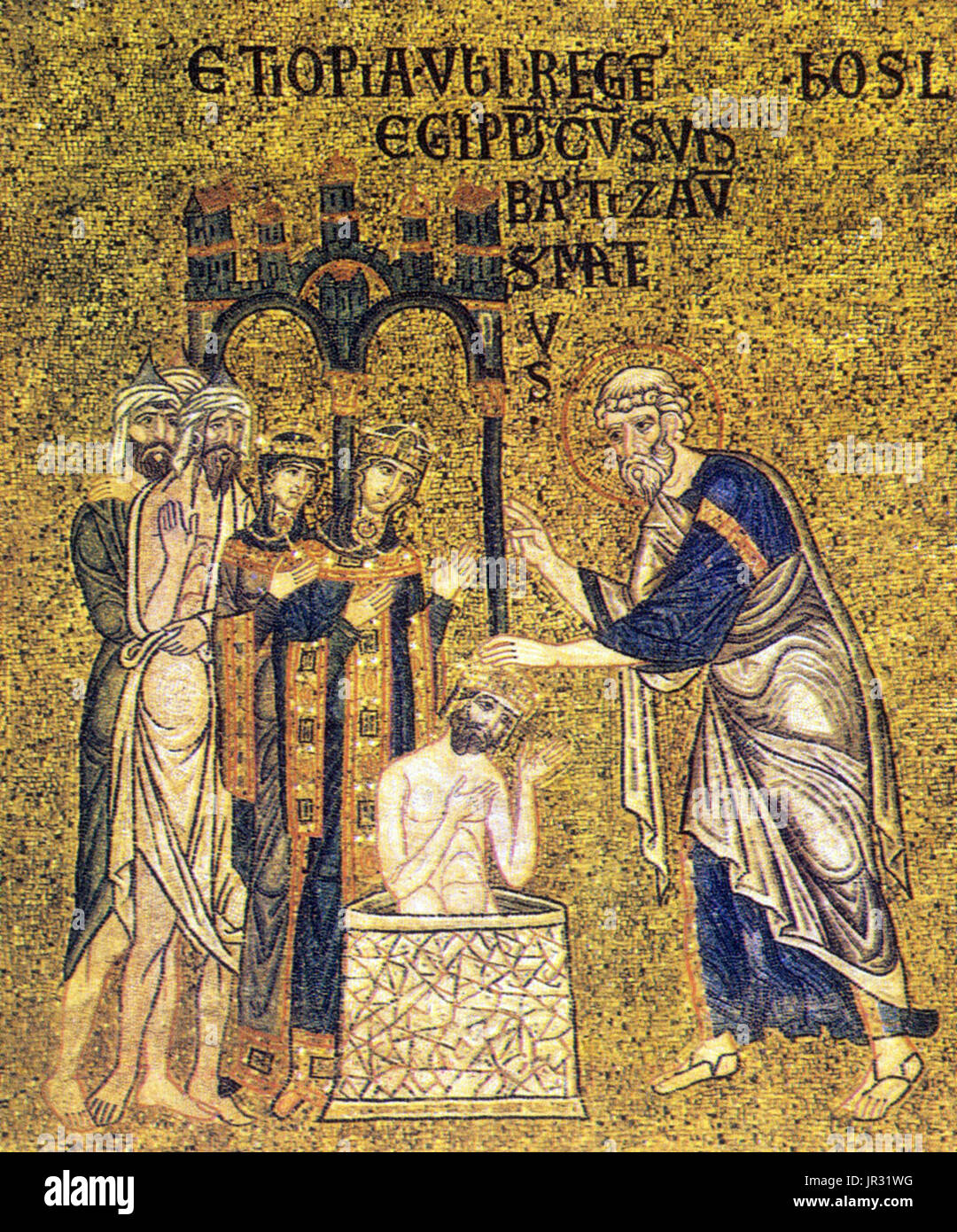 Detail of the mosaic of the dome over the baptismal font: an apostle in the act of baptizing. Mosaic work commissioned by Andrea Dandolo the 54th doge of Venice. Mosaics have a long history, starting in Mesopotamia in the 3rd millennium BC. Pebble mosaics were made in Tiryns in Mycenean Greece; mosaics with patterns and pictures became widespread in classical times, both in Ancient Greece and Ancient Rome. Early Christian basilicas from the 4th century onwards were decorated with wall and ceiling mosaics. Mosaic art flourished in the Byzantine Empire from the 6th to the 15th centuries. Mosaic Stock Photohttps://www.alamy.com/image-license-details/?v=1https://www.alamy.com/detail-of-the-mosaic-of-the-dome-over-the-baptismal-font-an-apostle-image151887388.html
Detail of the mosaic of the dome over the baptismal font: an apostle in the act of baptizing. Mosaic work commissioned by Andrea Dandolo the 54th doge of Venice. Mosaics have a long history, starting in Mesopotamia in the 3rd millennium BC. Pebble mosaics were made in Tiryns in Mycenean Greece; mosaics with patterns and pictures became widespread in classical times, both in Ancient Greece and Ancient Rome. Early Christian basilicas from the 4th century onwards were decorated with wall and ceiling mosaics. Mosaic art flourished in the Byzantine Empire from the 6th to the 15th centuries. Mosaic Stock Photohttps://www.alamy.com/image-license-details/?v=1https://www.alamy.com/detail-of-the-mosaic-of-the-dome-over-the-baptismal-font-an-apostle-image151887388.htmlRMJR31WG–Detail of the mosaic of the dome over the baptismal font: an apostle in the act of baptizing. Mosaic work commissioned by Andrea Dandolo the 54th doge of Venice. Mosaics have a long history, starting in Mesopotamia in the 3rd millennium BC. Pebble mosaics were made in Tiryns in Mycenean Greece; mosaics with patterns and pictures became widespread in classical times, both in Ancient Greece and Ancient Rome. Early Christian basilicas from the 4th century onwards were decorated with wall and ceiling mosaics. Mosaic art flourished in the Byzantine Empire from the 6th to the 15th centuries. Mosaic
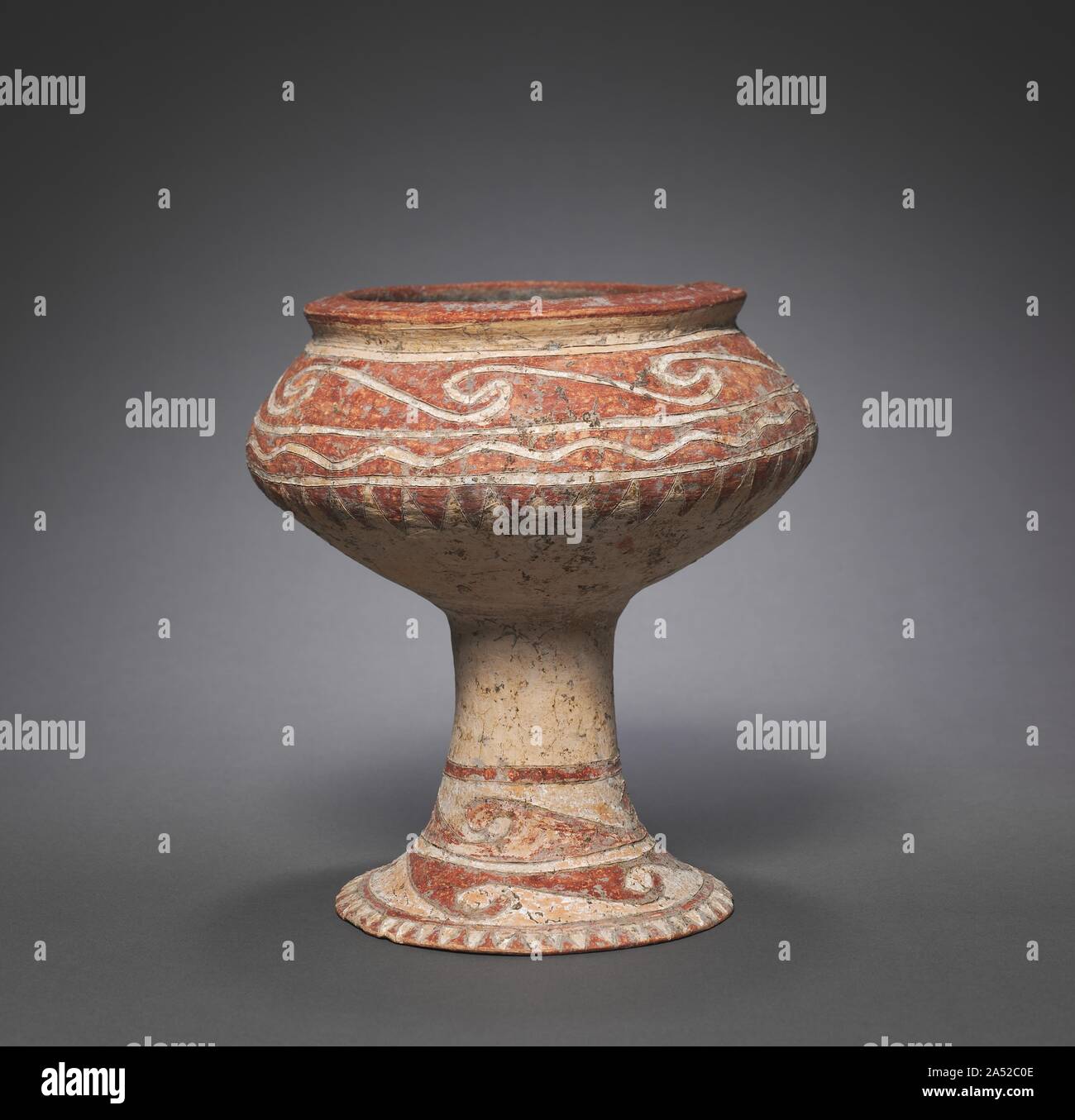 Tazza, 3rd millennium BC. Stock Photohttps://www.alamy.com/image-license-details/?v=1https://www.alamy.com/tazza-3rd-millennium-bc-image330123598.html
Tazza, 3rd millennium BC. Stock Photohttps://www.alamy.com/image-license-details/?v=1https://www.alamy.com/tazza-3rd-millennium-bc-image330123598.htmlRM2A52C0E–Tazza, 3rd millennium BC.
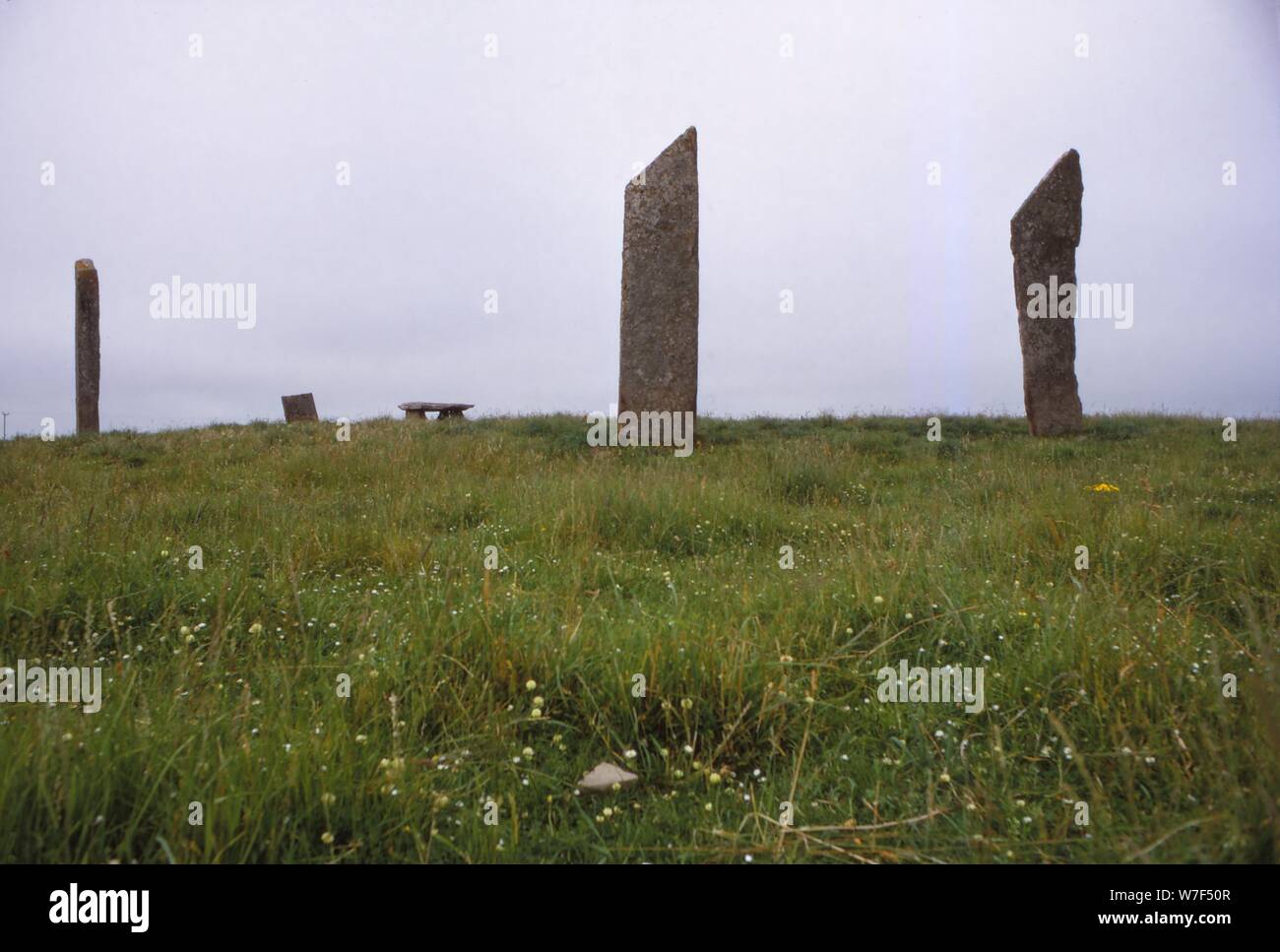 Standing stones of Stenness. Megalithic monument 3rd millennium BC, Orkney, 20th century. Artist: CM Dixon. Stock Photohttps://www.alamy.com/image-license-details/?v=1https://www.alamy.com/standing-stones-of-stenness-megalithic-monument-3rd-millennium-bc-orkney-20th-century-artist-cm-dixon-image262791335.html
Standing stones of Stenness. Megalithic monument 3rd millennium BC, Orkney, 20th century. Artist: CM Dixon. Stock Photohttps://www.alamy.com/image-license-details/?v=1https://www.alamy.com/standing-stones-of-stenness-megalithic-monument-3rd-millennium-bc-orkney-20th-century-artist-cm-dixon-image262791335.htmlRMW7F50R–Standing stones of Stenness. Megalithic monument 3rd millennium BC, Orkney, 20th century. Artist: CM Dixon.
 Byblos Lebanon from Crusader castle to Roman columns 3rd millennium BC walls on right Stock Photohttps://www.alamy.com/image-license-details/?v=1https://www.alamy.com/stock-photo-byblos-lebanon-from-crusader-castle-to-roman-columns-3rd-millennium-32122543.html
Byblos Lebanon from Crusader castle to Roman columns 3rd millennium BC walls on right Stock Photohttps://www.alamy.com/image-license-details/?v=1https://www.alamy.com/stock-photo-byblos-lebanon-from-crusader-castle-to-roman-columns-3rd-millennium-32122543.htmlRMBT78HK–Byblos Lebanon from Crusader castle to Roman columns 3rd millennium BC walls on right
 Arrow headed fortification wall of the old Phoenician city dating from the 3rd millennium BC Byblos UNESCO World Heritage Site Stock Photohttps://www.alamy.com/image-license-details/?v=1https://www.alamy.com/stock-photo-arrow-headed-fortification-wall-of-the-old-phoenician-city-dating-10052191.html
Arrow headed fortification wall of the old Phoenician city dating from the 3rd millennium BC Byblos UNESCO World Heritage Site Stock Photohttps://www.alamy.com/image-license-details/?v=1https://www.alamy.com/stock-photo-arrow-headed-fortification-wall-of-the-old-phoenician-city-dating-10052191.htmlRMA0R3WM–Arrow headed fortification wall of the old Phoenician city dating from the 3rd millennium BC Byblos UNESCO World Heritage Site
 Relief from Memphis depicting digging up the earth with hoes and sowing. Monument of the 3rd millennium BC. Photo from the mid-20th century. Stock Photohttps://www.alamy.com/image-license-details/?v=1https://www.alamy.com/relief-from-memphis-depicting-digging-up-the-earth-with-hoes-and-sowing-monument-of-the-3rd-millennium-bc-photo-from-the-mid-20th-century-image603872454.html
Relief from Memphis depicting digging up the earth with hoes and sowing. Monument of the 3rd millennium BC. Photo from the mid-20th century. Stock Photohttps://www.alamy.com/image-license-details/?v=1https://www.alamy.com/relief-from-memphis-depicting-digging-up-the-earth-with-hoes-and-sowing-monument-of-the-3rd-millennium-bc-photo-from-the-mid-20th-century-image603872454.htmlRM2X2CNDA–Relief from Memphis depicting digging up the earth with hoes and sowing. Monument of the 3rd millennium BC. Photo from the mid-20th century.
 The beehive tombs from the 3rd millennium BC, Al Ayn, Oman, UNESCO Stock Photohttps://www.alamy.com/image-license-details/?v=1https://www.alamy.com/the-beehive-tombs-from-the-3rd-millennium-bc-al-ayn-oman-unesco-image6455593.html
The beehive tombs from the 3rd millennium BC, Al Ayn, Oman, UNESCO Stock Photohttps://www.alamy.com/image-license-details/?v=1https://www.alamy.com/the-beehive-tombs-from-the-3rd-millennium-bc-al-ayn-oman-unesco-image6455593.htmlRMA5FDPA–The beehive tombs from the 3rd millennium BC, Al Ayn, Oman, UNESCO
 10 December 2019, Saxony-Anhalt, Zackmünde: Visitors of the Ring Sanctuary Pömmelte walk through a gate of the complex at sunset. The Kreisgrabenanlage is a reconstruction of a ritual place that is said to have existed there since the end of the 3rd millennium BC. The facility is said to have been used astronomically. Two of the entrances to the installation correspond to the position of the rising and setting sun at certain seasonal festivals. Photo: Klaus-Dietmar Gabbert/dpa-Zentralbild/ZB Stock Photohttps://www.alamy.com/image-license-details/?v=1https://www.alamy.com/10-december-2019-saxony-anhalt-zackmnde-visitors-of-the-ring-sanctuary-pmmelte-walk-through-a-gate-of-the-complex-at-sunset-the-kreisgrabenanlage-is-a-reconstruction-of-a-ritual-place-that-is-said-to-have-existed-there-since-the-end-of-the-3rd-millennium-bc-the-facility-is-said-to-have-been-used-astronomically-two-of-the-entrances-to-the-installation-correspond-to-the-position-of-the-rising-and-setting-sun-at-certain-seasonal-festivals-photo-klaus-dietmar-gabbertdpa-zentralbildzb-image336108289.html
10 December 2019, Saxony-Anhalt, Zackmünde: Visitors of the Ring Sanctuary Pömmelte walk through a gate of the complex at sunset. The Kreisgrabenanlage is a reconstruction of a ritual place that is said to have existed there since the end of the 3rd millennium BC. The facility is said to have been used astronomically. Two of the entrances to the installation correspond to the position of the rising and setting sun at certain seasonal festivals. Photo: Klaus-Dietmar Gabbert/dpa-Zentralbild/ZB Stock Photohttps://www.alamy.com/image-license-details/?v=1https://www.alamy.com/10-december-2019-saxony-anhalt-zackmnde-visitors-of-the-ring-sanctuary-pmmelte-walk-through-a-gate-of-the-complex-at-sunset-the-kreisgrabenanlage-is-a-reconstruction-of-a-ritual-place-that-is-said-to-have-existed-there-since-the-end-of-the-3rd-millennium-bc-the-facility-is-said-to-have-been-used-astronomically-two-of-the-entrances-to-the-installation-correspond-to-the-position-of-the-rising-and-setting-sun-at-certain-seasonal-festivals-photo-klaus-dietmar-gabbertdpa-zentralbildzb-image336108289.htmlRM2AER1FD–10 December 2019, Saxony-Anhalt, Zackmünde: Visitors of the Ring Sanctuary Pömmelte walk through a gate of the complex at sunset. The Kreisgrabenanlage is a reconstruction of a ritual place that is said to have existed there since the end of the 3rd millennium BC. The facility is said to have been used astronomically. Two of the entrances to the installation correspond to the position of the rising and setting sun at certain seasonal festivals. Photo: Klaus-Dietmar Gabbert/dpa-Zentralbild/ZB
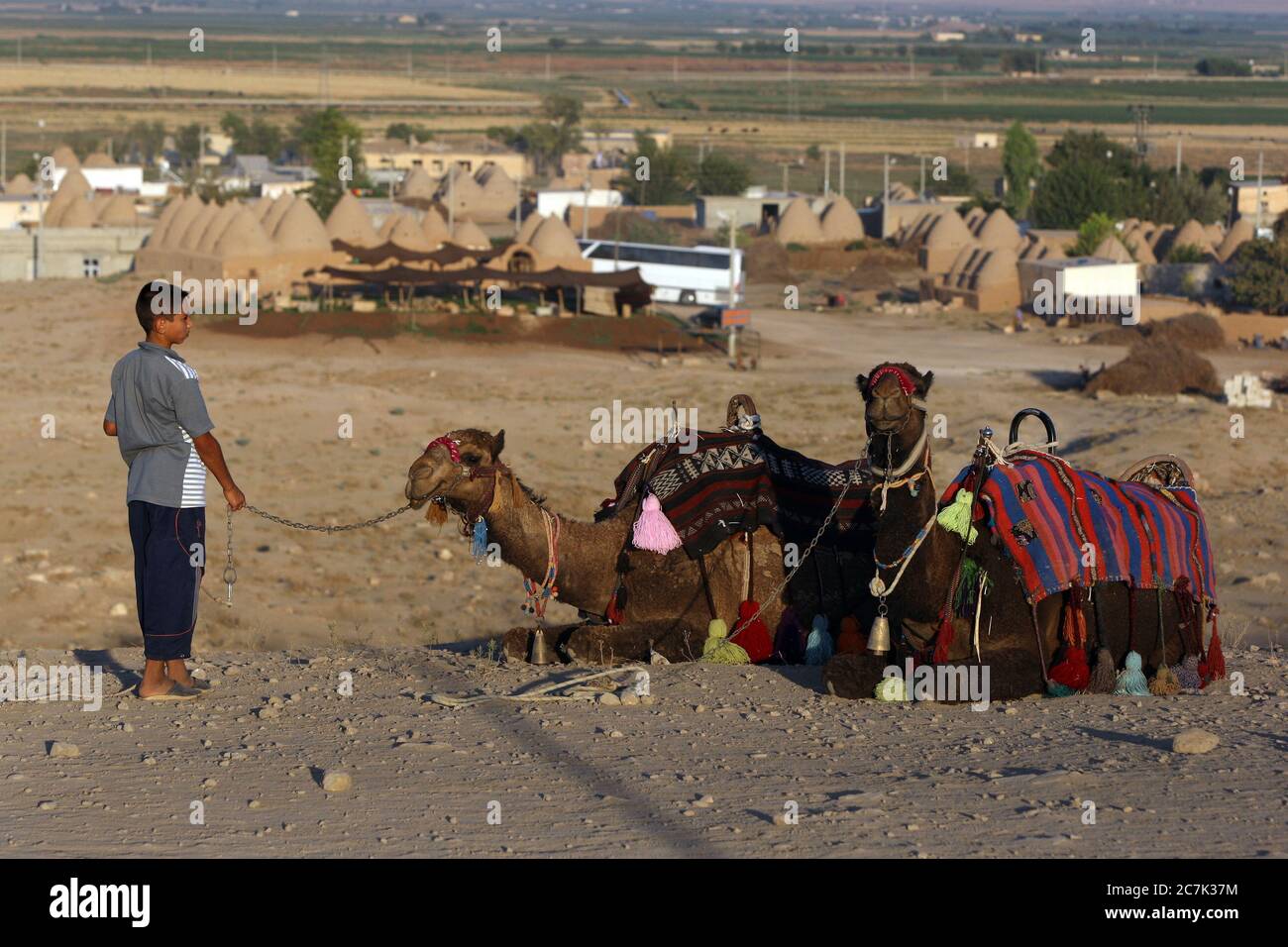 A boy with a pair of camels waits for tourists on a hill above the ancient town of Harran in eastern Turkey. Harran dates from 3rd millennium BC. Stock Photohttps://www.alamy.com/image-license-details/?v=1https://www.alamy.com/a-boy-with-a-pair-of-camels-waits-for-tourists-on-a-hill-above-the-ancient-town-of-harran-in-eastern-turkey-harran-dates-from-3rd-millennium-bc-image366139976.html
A boy with a pair of camels waits for tourists on a hill above the ancient town of Harran in eastern Turkey. Harran dates from 3rd millennium BC. Stock Photohttps://www.alamy.com/image-license-details/?v=1https://www.alamy.com/a-boy-with-a-pair-of-camels-waits-for-tourists-on-a-hill-above-the-ancient-town-of-harran-in-eastern-turkey-harran-dates-from-3rd-millennium-bc-image366139976.htmlRF2C7K37M–A boy with a pair of camels waits for tourists on a hill above the ancient town of Harran in eastern Turkey. Harran dates from 3rd millennium BC.
 Small Beak Spouted Pitcher Early Bronze Age 3rd Millennium BC Antalya Bolgesi Region Turkey Turkish Pottery Stock Photohttps://www.alamy.com/image-license-details/?v=1https://www.alamy.com/stock-photo-small-beak-spouted-pitcher-early-bronze-age-3rd-millennium-bc-antalya-37953379.html
Small Beak Spouted Pitcher Early Bronze Age 3rd Millennium BC Antalya Bolgesi Region Turkey Turkish Pottery Stock Photohttps://www.alamy.com/image-license-details/?v=1https://www.alamy.com/stock-photo-small-beak-spouted-pitcher-early-bronze-age-3rd-millennium-bc-antalya-37953379.htmlRMC5MWWR–Small Beak Spouted Pitcher Early Bronze Age 3rd Millennium BC Antalya Bolgesi Region Turkey Turkish Pottery
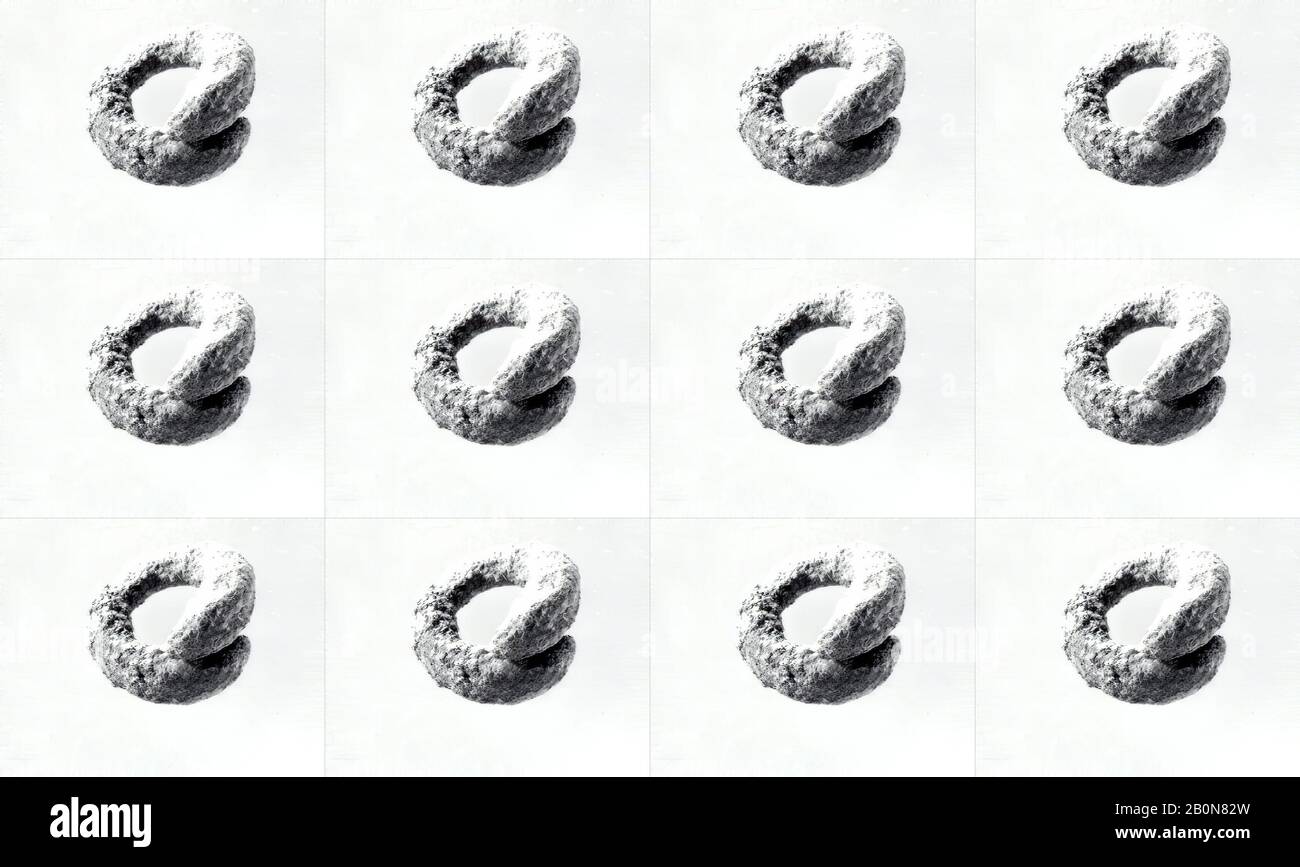 Spiral, Early Bronze Age (?), Date 3rd Millennium BC (?), Syria, Silver, 11/16 in. (1.7 cm), Metalwork-Ornaments Stock Photohttps://www.alamy.com/image-license-details/?v=1https://www.alamy.com/spiral-early-bronze-age-date-3rd-millennium-bc-syria-silver-1116-in-17-cm-metalwork-ornaments-image344674705.html
Spiral, Early Bronze Age (?), Date 3rd Millennium BC (?), Syria, Silver, 11/16 in. (1.7 cm), Metalwork-Ornaments Stock Photohttps://www.alamy.com/image-license-details/?v=1https://www.alamy.com/spiral-early-bronze-age-date-3rd-millennium-bc-syria-silver-1116-in-17-cm-metalwork-ornaments-image344674705.htmlRM2B0N82W–Spiral, Early Bronze Age (?), Date 3rd Millennium BC (?), Syria, Silver, 11/16 in. (1.7 cm), Metalwork-Ornaments
 Terracotta sculptures in the form of vehicles, maybe offerings at funerals or gifts to the deity Last Quarter 3rd Millennium BC. Stock Photohttps://www.alamy.com/image-license-details/?v=1https://www.alamy.com/stock-photo-terracotta-sculptures-in-the-form-of-vehicles-maybe-offerings-at-funerals-57317868.html
Terracotta sculptures in the form of vehicles, maybe offerings at funerals or gifts to the deity Last Quarter 3rd Millennium BC. Stock Photohttps://www.alamy.com/image-license-details/?v=1https://www.alamy.com/stock-photo-terracotta-sculptures-in-the-form-of-vehicles-maybe-offerings-at-funerals-57317868.htmlRMD971EM–Terracotta sculptures in the form of vehicles, maybe offerings at funerals or gifts to the deity Last Quarter 3rd Millennium BC.
 Rock weight, Jiroft, 3rd millennium BC, Azerbaijan Museum, Tabriz, East Azerbaijan province, Iran Stock Photohttps://www.alamy.com/image-license-details/?v=1https://www.alamy.com/rock-weight-jiroft-3rd-millennium-bc-azerbaijan-museum-tabriz-east-azerbaijan-province-iran-image271814468.html
Rock weight, Jiroft, 3rd millennium BC, Azerbaijan Museum, Tabriz, East Azerbaijan province, Iran Stock Photohttps://www.alamy.com/image-license-details/?v=1https://www.alamy.com/rock-weight-jiroft-3rd-millennium-bc-azerbaijan-museum-tabriz-east-azerbaijan-province-iran-image271814468.htmlRMWP663G–Rock weight, Jiroft, 3rd millennium BC, Azerbaijan Museum, Tabriz, East Azerbaijan province, Iran
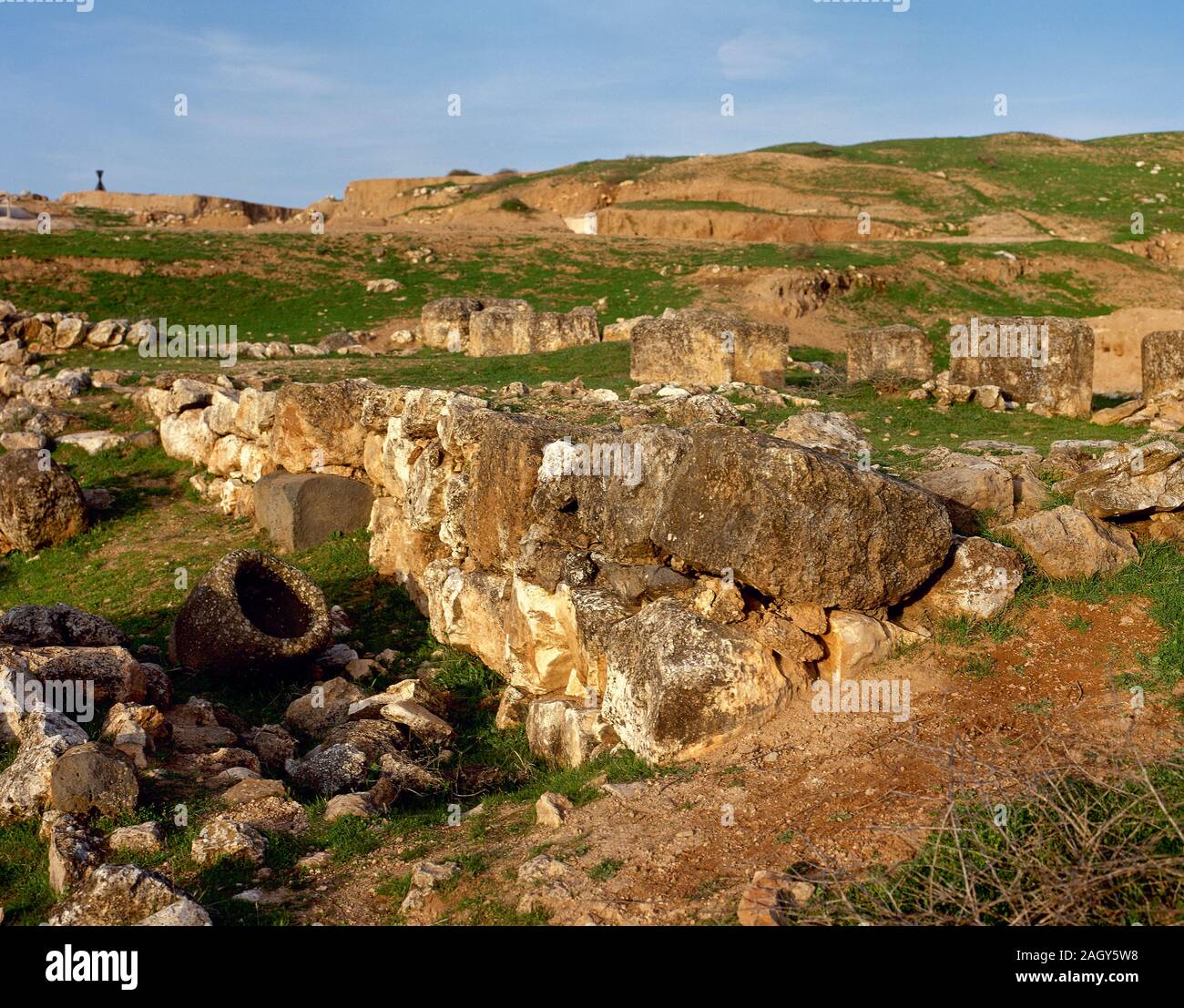 Eastern Mediterranean Civilization. Ebla. Syrian city of the third millennium BC. Capital of the Semitic Kingdom. (Currently called Tell Mardikh). Partial view of the ruins. Photo taken before the Syrian Civil War. Stock Photohttps://www.alamy.com/image-license-details/?v=1https://www.alamy.com/eastern-mediterranean-civilization-ebla-syrian-city-of-the-third-millennium-bc-capital-of-the-semitic-kingdom-currently-called-tell-mardikh-partial-view-of-the-ruins-photo-taken-before-the-syrian-civil-war-image337428820.html
Eastern Mediterranean Civilization. Ebla. Syrian city of the third millennium BC. Capital of the Semitic Kingdom. (Currently called Tell Mardikh). Partial view of the ruins. Photo taken before the Syrian Civil War. Stock Photohttps://www.alamy.com/image-license-details/?v=1https://www.alamy.com/eastern-mediterranean-civilization-ebla-syrian-city-of-the-third-millennium-bc-capital-of-the-semitic-kingdom-currently-called-tell-mardikh-partial-view-of-the-ruins-photo-taken-before-the-syrian-civil-war-image337428820.htmlRM2AGY5W8–Eastern Mediterranean Civilization. Ebla. Syrian city of the third millennium BC. Capital of the Semitic Kingdom. (Currently called Tell Mardikh). Partial view of the ruins. Photo taken before the Syrian Civil War.
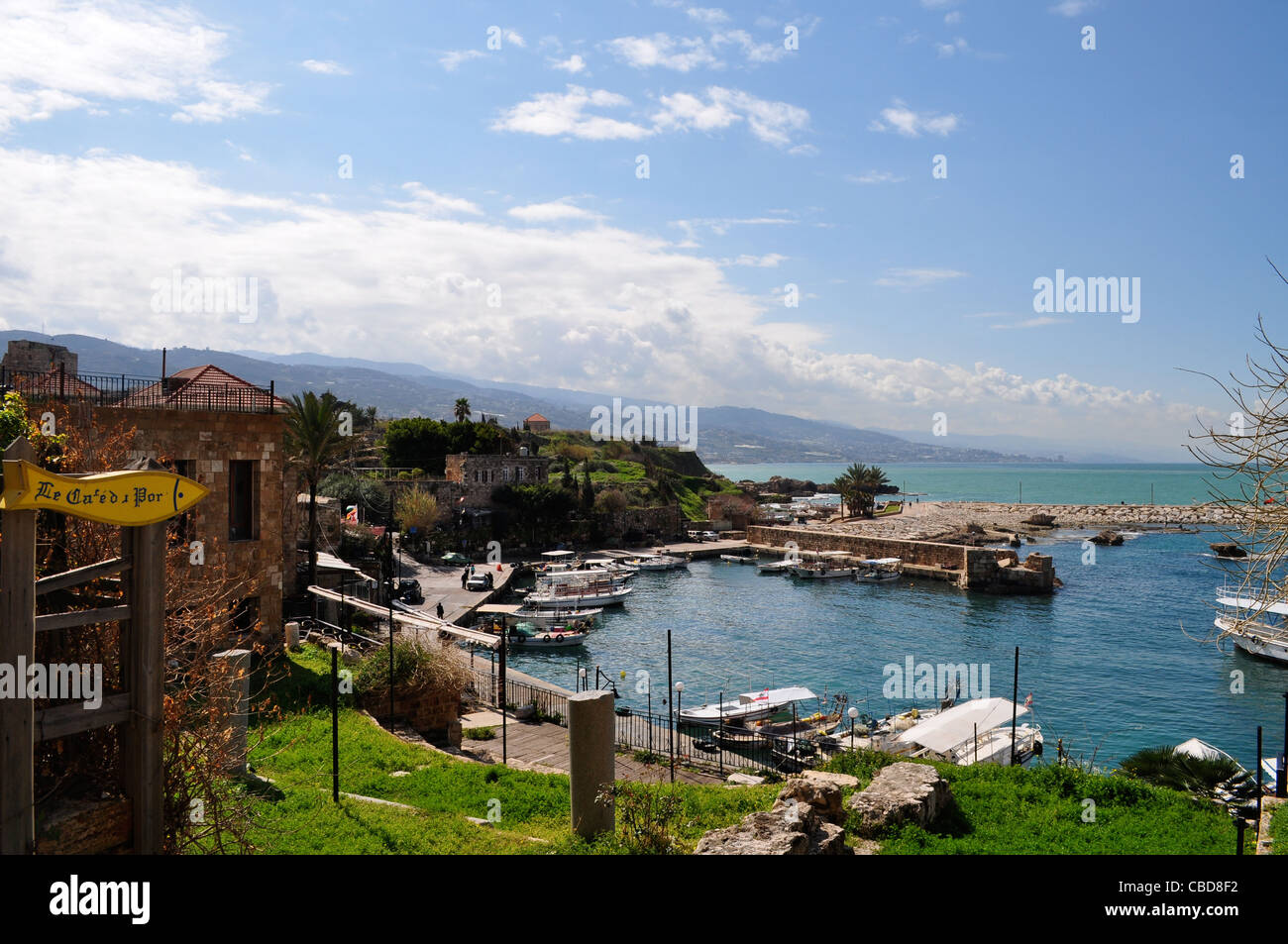 Beautiful Jbeil aka Byblos harbour, Lebanon, ancient Phoenician city dating from 3rd millennium BC Stock Photohttps://www.alamy.com/image-license-details/?v=1https://www.alamy.com/stock-photo-beautiful-jbeil-aka-byblos-harbour-lebanon-ancient-phoenician-city-41474022.html
Beautiful Jbeil aka Byblos harbour, Lebanon, ancient Phoenician city dating from 3rd millennium BC Stock Photohttps://www.alamy.com/image-license-details/?v=1https://www.alamy.com/stock-photo-beautiful-jbeil-aka-byblos-harbour-lebanon-ancient-phoenician-city-41474022.htmlRMCBD8F2–Beautiful Jbeil aka Byblos harbour, Lebanon, ancient Phoenician city dating from 3rd millennium BC
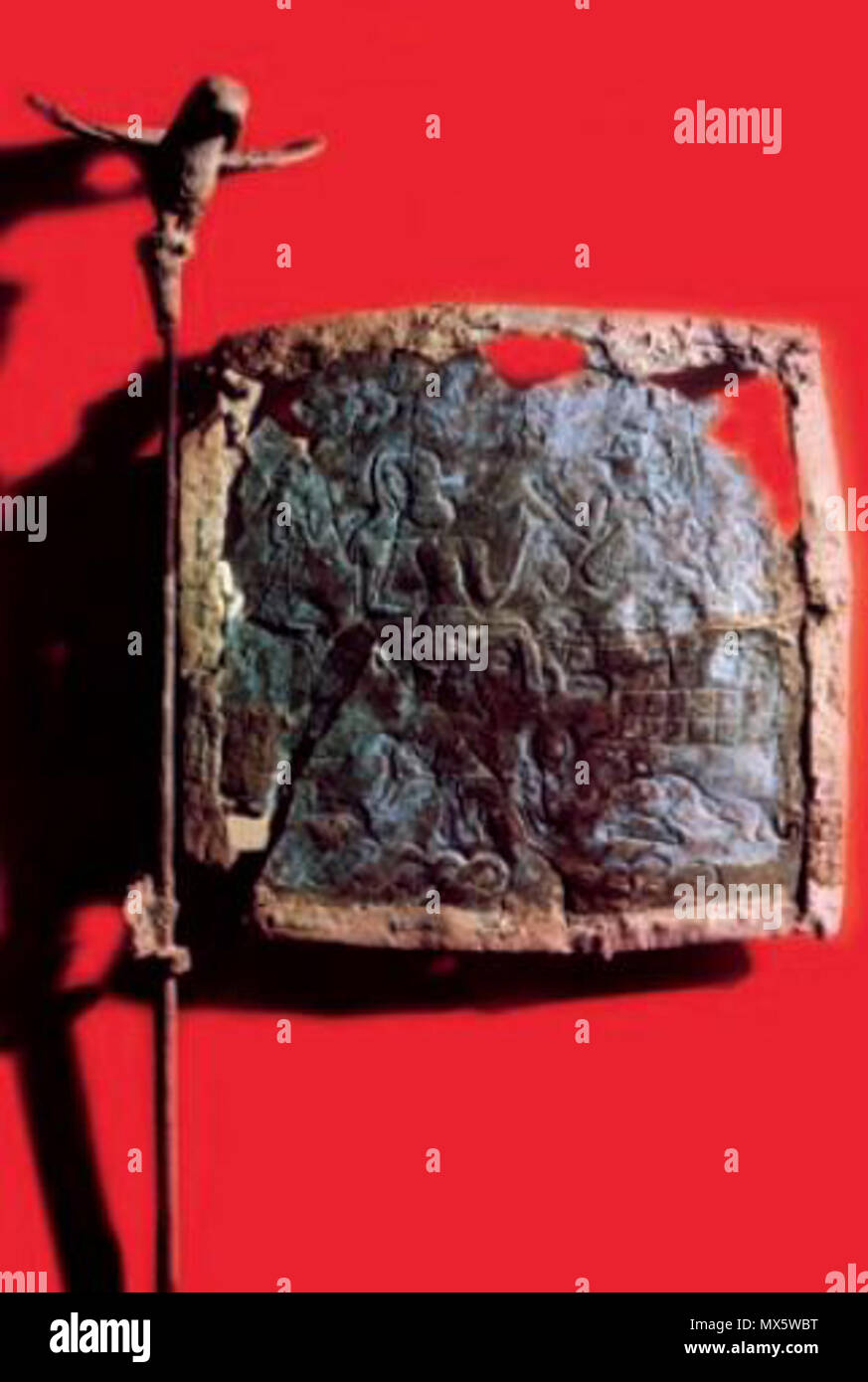 . English: Bronze flag, Shahdad Kerman, Iran فارسی: پرچم برنزی کشف شده در منطقه شهداد نزدیک کرمان، ایران . 3rd millennium BC. Unknown 99 Bronze flag, Shadad Kerman, Iran Stock Photohttps://www.alamy.com/image-license-details/?v=1https://www.alamy.com/english-bronze-flag-shahdad-kerman-iran-3rd-millennium-bc-unknown-99-bronze-flag-shadad-kerman-iran-image188214428.html
. English: Bronze flag, Shahdad Kerman, Iran فارسی: پرچم برنزی کشف شده در منطقه شهداد نزدیک کرمان، ایران . 3rd millennium BC. Unknown 99 Bronze flag, Shadad Kerman, Iran Stock Photohttps://www.alamy.com/image-license-details/?v=1https://www.alamy.com/english-bronze-flag-shahdad-kerman-iran-3rd-millennium-bc-unknown-99-bronze-flag-shadad-kerman-iran-image188214428.htmlRMMX5WBT–. English: Bronze flag, Shahdad Kerman, Iran فارسی: پرچم برنزی کشف شده در منطقه شهداد نزدیک کرمان، ایران . 3rd millennium BC. Unknown 99 Bronze flag, Shadad Kerman, Iran
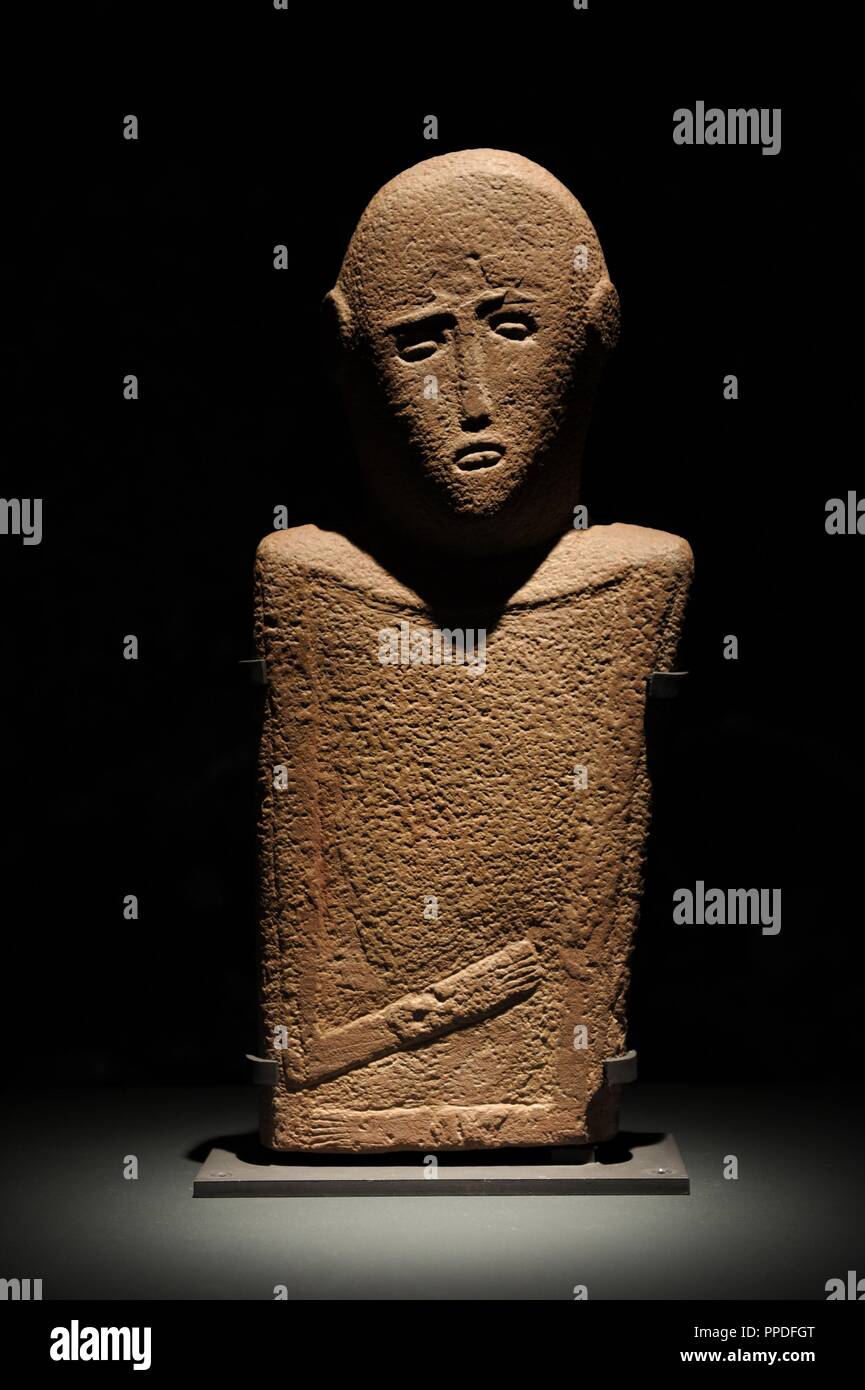 Arabic peninsula. Anthropomorphe Stele. 57x27 cm. Late 4th-early 3rd millennium BC. Sandstone. al-Ma'akir / Qaryat al-Kaafa, nera Hail. National Museum, Riyadh. Saudi Arabian. Stock Photohttps://www.alamy.com/image-license-details/?v=1https://www.alamy.com/arabic-peninsula-anthropomorphe-stele-57x27-cm-late-4th-early-3rd-millennium-bc-sandstone-al-maakir-qaryat-al-kaafa-nera-hail-national-museum-riyadh-saudi-arabian-image220344456.html
Arabic peninsula. Anthropomorphe Stele. 57x27 cm. Late 4th-early 3rd millennium BC. Sandstone. al-Ma'akir / Qaryat al-Kaafa, nera Hail. National Museum, Riyadh. Saudi Arabian. Stock Photohttps://www.alamy.com/image-license-details/?v=1https://www.alamy.com/arabic-peninsula-anthropomorphe-stele-57x27-cm-late-4th-early-3rd-millennium-bc-sandstone-al-maakir-qaryat-al-kaafa-nera-hail-national-museum-riyadh-saudi-arabian-image220344456.htmlRMPPDFGT–Arabic peninsula. Anthropomorphe Stele. 57x27 cm. Late 4th-early 3rd millennium BC. Sandstone. al-Ma'akir / Qaryat al-Kaafa, nera Hail. National Museum, Riyadh. Saudi Arabian.
![17.08.2015, Humac, Split-Dalmatia, Croatia - The Tropfsteinhoehle Grapceva spilja in near the village Humac. The cave was used to Neolithic times in the 5th to the 3rd millennium BC for ritual acts. In her the oldest evidence of boat building in the world was found. 0BG150817D057CAROEX.JPG - NOT for SALE in G E R M A N Y, A U S T R I A, S W I T Z E R L A N D [MODEL RELEASE: NOT APPLICABLE, PROPERTY RELEASE: NO, (c) caro photo agency / Geilert, http://www.caro-images.com, info@carofoto.pl - Any use of this picture is subject to royalty!] Stock Photo 17.08.2015, Humac, Split-Dalmatia, Croatia - The Tropfsteinhoehle Grapceva spilja in near the village Humac. The cave was used to Neolithic times in the 5th to the 3rd millennium BC for ritual acts. In her the oldest evidence of boat building in the world was found. 0BG150817D057CAROEX.JPG - NOT for SALE in G E R M A N Y, A U S T R I A, S W I T Z E R L A N D [MODEL RELEASE: NOT APPLICABLE, PROPERTY RELEASE: NO, (c) caro photo agency / Geilert, http://www.caro-images.com, info@carofoto.pl - Any use of this picture is subject to royalty!] Stock Photo](https://c8.alamy.com/comp/G2RBYM/17082015-humac-split-dalmatia-croatia-the-tropfsteinhoehle-grapceva-G2RBYM.jpg) 17.08.2015, Humac, Split-Dalmatia, Croatia - The Tropfsteinhoehle Grapceva spilja in near the village Humac. The cave was used to Neolithic times in the 5th to the 3rd millennium BC for ritual acts. In her the oldest evidence of boat building in the world was found. 0BG150817D057CAROEX.JPG - NOT for SALE in G E R M A N Y, A U S T R I A, S W I T Z E R L A N D [MODEL RELEASE: NOT APPLICABLE, PROPERTY RELEASE: NO, (c) caro photo agency / Geilert, http://www.caro-images.com, info@carofoto.pl - Any use of this picture is subject to royalty!] Stock Photohttps://www.alamy.com/image-license-details/?v=1https://www.alamy.com/stock-photo-17082015-humac-split-dalmatia-croatia-the-tropfsteinhoehle-grapceva-105005816.html
17.08.2015, Humac, Split-Dalmatia, Croatia - The Tropfsteinhoehle Grapceva spilja in near the village Humac. The cave was used to Neolithic times in the 5th to the 3rd millennium BC for ritual acts. In her the oldest evidence of boat building in the world was found. 0BG150817D057CAROEX.JPG - NOT for SALE in G E R M A N Y, A U S T R I A, S W I T Z E R L A N D [MODEL RELEASE: NOT APPLICABLE, PROPERTY RELEASE: NO, (c) caro photo agency / Geilert, http://www.caro-images.com, info@carofoto.pl - Any use of this picture is subject to royalty!] Stock Photohttps://www.alamy.com/image-license-details/?v=1https://www.alamy.com/stock-photo-17082015-humac-split-dalmatia-croatia-the-tropfsteinhoehle-grapceva-105005816.htmlRMG2RBYM–17.08.2015, Humac, Split-Dalmatia, Croatia - The Tropfsteinhoehle Grapceva spilja in near the village Humac. The cave was used to Neolithic times in the 5th to the 3rd millennium BC for ritual acts. In her the oldest evidence of boat building in the world was found. 0BG150817D057CAROEX.JPG - NOT for SALE in G E R M A N Y, A U S T R I A, S W I T Z E R L A N D [MODEL RELEASE: NOT APPLICABLE, PROPERTY RELEASE: NO, (c) caro photo agency / Geilert, http://www.caro-images.com, info@carofoto.pl - Any use of this picture is subject to royalty!]
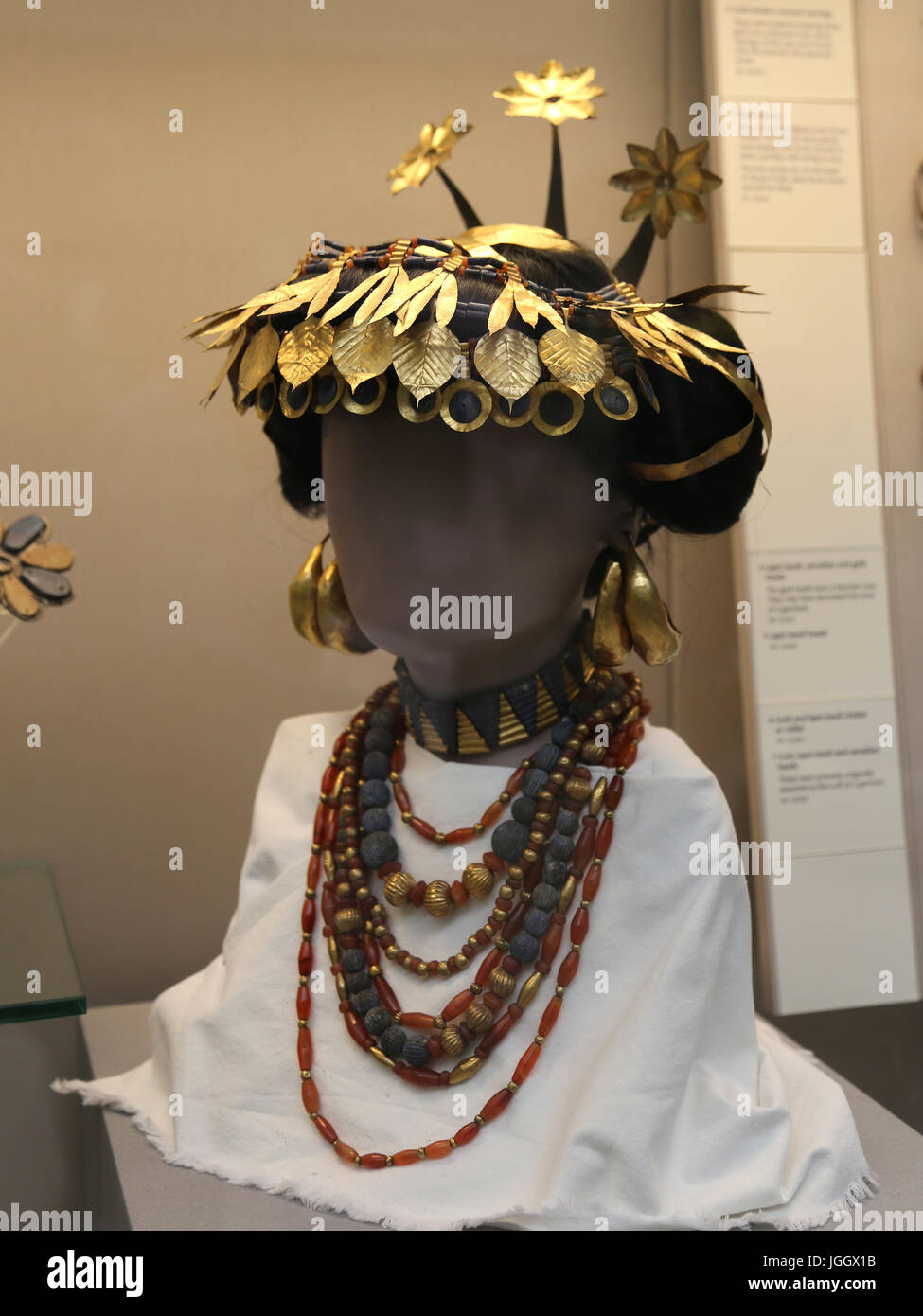 Iraq. Roya. cementery. Ur. Early Dynastic III. Gold ribbon from a head-dress. Female. 2600 BC. British Museum. London. Stock Photohttps://www.alamy.com/image-license-details/?v=1https://www.alamy.com/stock-photo-iraq-roya-cementery-ur-early-dynastic-iii-gold-ribbon-from-a-head-147889095.html
Iraq. Roya. cementery. Ur. Early Dynastic III. Gold ribbon from a head-dress. Female. 2600 BC. British Museum. London. Stock Photohttps://www.alamy.com/image-license-details/?v=1https://www.alamy.com/stock-photo-iraq-roya-cementery-ur-early-dynastic-iii-gold-ribbon-from-a-head-147889095.htmlRMJGGX1B–Iraq. Roya. cementery. Ur. Early Dynastic III. Gold ribbon from a head-dress. Female. 2600 BC. British Museum. London.
 France, Morbihan, Carnac, alignments of Ménec, set of 1050 menhirs, in 11 rows, Built between the 5th and 3rd millennium BC, these alignments of stones could be a giant calendar which specified the important periods of agriculture and formed a way of determining the time to be able to feed oneself, agriculture being the main source of food during the Neolithic era. Stock Photohttps://www.alamy.com/image-license-details/?v=1https://www.alamy.com/france-morbihan-carnac-alignments-of-mnec-set-of-1050-menhirs-in-11-rows-built-between-the-5th-and-3rd-millennium-bc-these-alignments-of-stones-could-be-a-giant-calendar-which-specified-the-important-periods-of-agriculture-and-formed-a-way-of-determining-the-time-to-be-able-to-feed-oneself-agriculture-being-the-main-source-of-food-during-the-neolithic-era-image598047021.html
France, Morbihan, Carnac, alignments of Ménec, set of 1050 menhirs, in 11 rows, Built between the 5th and 3rd millennium BC, these alignments of stones could be a giant calendar which specified the important periods of agriculture and formed a way of determining the time to be able to feed oneself, agriculture being the main source of food during the Neolithic era. Stock Photohttps://www.alamy.com/image-license-details/?v=1https://www.alamy.com/france-morbihan-carnac-alignments-of-mnec-set-of-1050-menhirs-in-11-rows-built-between-the-5th-and-3rd-millennium-bc-these-alignments-of-stones-could-be-a-giant-calendar-which-specified-the-important-periods-of-agriculture-and-formed-a-way-of-determining-the-time-to-be-able-to-feed-oneself-agriculture-being-the-main-source-of-food-during-the-neolithic-era-image598047021.htmlRM2WMYB25–France, Morbihan, Carnac, alignments of Ménec, set of 1050 menhirs, in 11 rows, Built between the 5th and 3rd millennium BC, these alignments of stones could be a giant calendar which specified the important periods of agriculture and formed a way of determining the time to be able to feed oneself, agriculture being the main source of food during the Neolithic era.
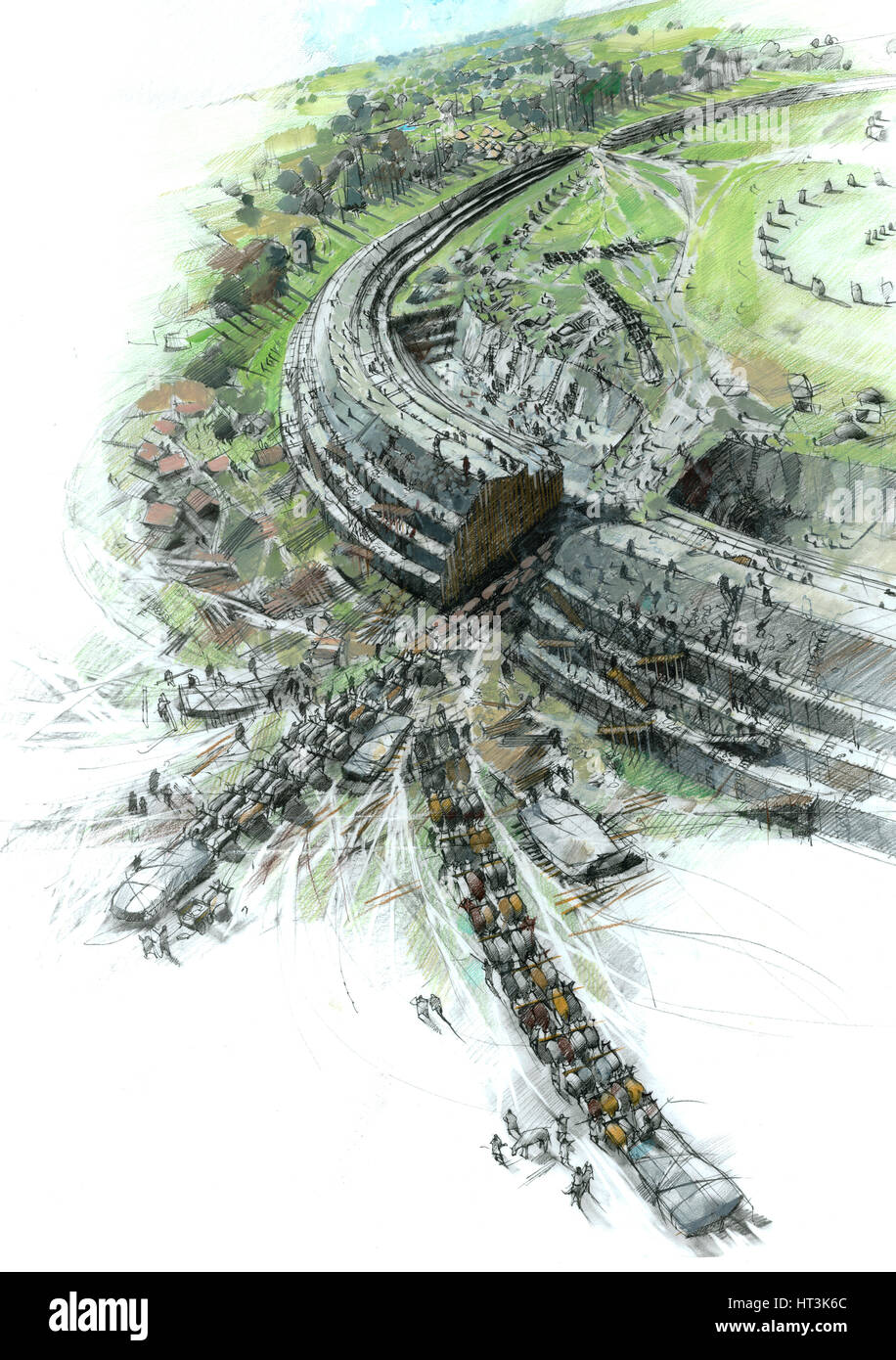 Construction of Avebury Stone Circle, Wiltshire, 3rd millennium BC, (c1990-2010) Artist: Ivan Lapper. Stock Photohttps://www.alamy.com/image-license-details/?v=1https://www.alamy.com/stock-photo-construction-of-avebury-stone-circle-wiltshire-3rd-millennium-bc-c1990-135305252.html
Construction of Avebury Stone Circle, Wiltshire, 3rd millennium BC, (c1990-2010) Artist: Ivan Lapper. Stock Photohttps://www.alamy.com/image-license-details/?v=1https://www.alamy.com/stock-photo-construction-of-avebury-stone-circle-wiltshire-3rd-millennium-bc-c1990-135305252.htmlRMHT3K6C–Construction of Avebury Stone Circle, Wiltshire, 3rd millennium BC, (c1990-2010) Artist: Ivan Lapper.
 Ring of Brodgar, Megalithic Stone Circle, c. 3rd millennium BC, Stenness, Orkney, 20th century. Artist: CM Dixon. Stock Photohttps://www.alamy.com/image-license-details/?v=1https://www.alamy.com/ring-of-brodgar-megalithic-stone-circle-c-3rd-millennium-bc-stenness-orkney-20th-century-artist-cm-dixon-image262791337.html
Ring of Brodgar, Megalithic Stone Circle, c. 3rd millennium BC, Stenness, Orkney, 20th century. Artist: CM Dixon. Stock Photohttps://www.alamy.com/image-license-details/?v=1https://www.alamy.com/ring-of-brodgar-megalithic-stone-circle-c-3rd-millennium-bc-stenness-orkney-20th-century-artist-cm-dixon-image262791337.htmlRMW7F50W–Ring of Brodgar, Megalithic Stone Circle, c. 3rd millennium BC, Stenness, Orkney, 20th century. Artist: CM Dixon.
 Horse figurines. LURISTAN. 3rd millennium BC. Paris, Cernuschi museum. 35407-3 BRONZE, Cheval, FIGURINE, animal Stock Photohttps://www.alamy.com/image-license-details/?v=1https://www.alamy.com/horse-figurines-luristan-3rd-millennium-bc-paris-cernuschi-museum-35407-3-bronze-cheval-figurine-animal-image596743326.html
Horse figurines. LURISTAN. 3rd millennium BC. Paris, Cernuschi museum. 35407-3 BRONZE, Cheval, FIGURINE, animal Stock Photohttps://www.alamy.com/image-license-details/?v=1https://www.alamy.com/horse-figurines-luristan-3rd-millennium-bc-paris-cernuschi-museum-35407-3-bronze-cheval-figurine-animal-image596743326.htmlRM2WJT05J–Horse figurines. LURISTAN. 3rd millennium BC. Paris, Cernuschi museum. 35407-3 BRONZE, Cheval, FIGURINE, animal
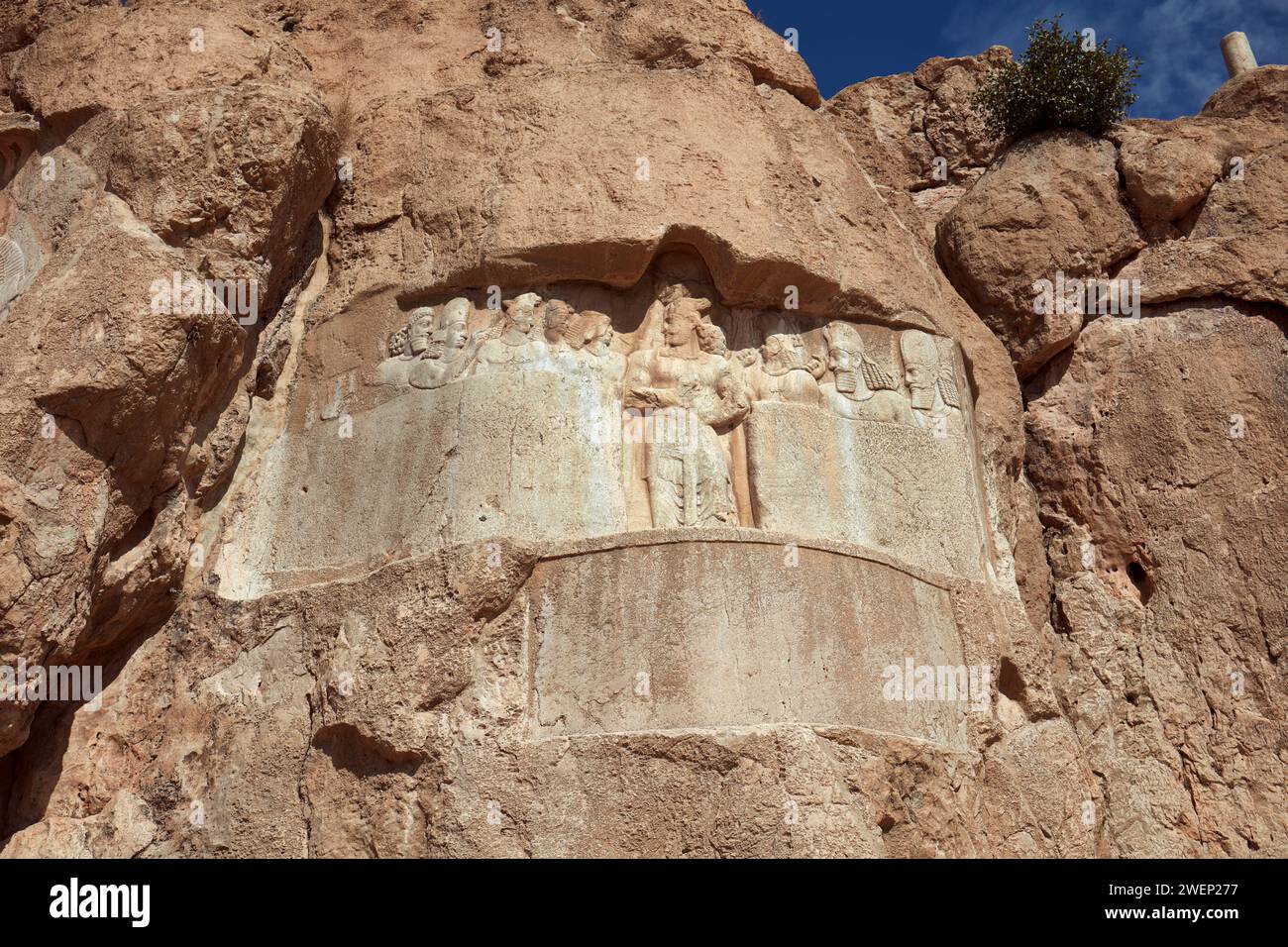 Rock relief of Persian king Bahram II and his royal family carved over Elamites relief dated to the 3rd millennium BC. Naqsh-e Rostam Necropolis, Iran Stock Photohttps://www.alamy.com/image-license-details/?v=1https://www.alamy.com/rock-relief-of-persian-king-bahram-ii-and-his-royal-family-carved-over-elamites-relief-dated-to-the-3rd-millennium-bc-naqsh-e-rostam-necropolis-iran-image594242411.html
Rock relief of Persian king Bahram II and his royal family carved over Elamites relief dated to the 3rd millennium BC. Naqsh-e Rostam Necropolis, Iran Stock Photohttps://www.alamy.com/image-license-details/?v=1https://www.alamy.com/rock-relief-of-persian-king-bahram-ii-and-his-royal-family-carved-over-elamites-relief-dated-to-the-3rd-millennium-bc-naqsh-e-rostam-necropolis-iran-image594242411.htmlRM2WEP277–Rock relief of Persian king Bahram II and his royal family carved over Elamites relief dated to the 3rd millennium BC. Naqsh-e Rostam Necropolis, Iran
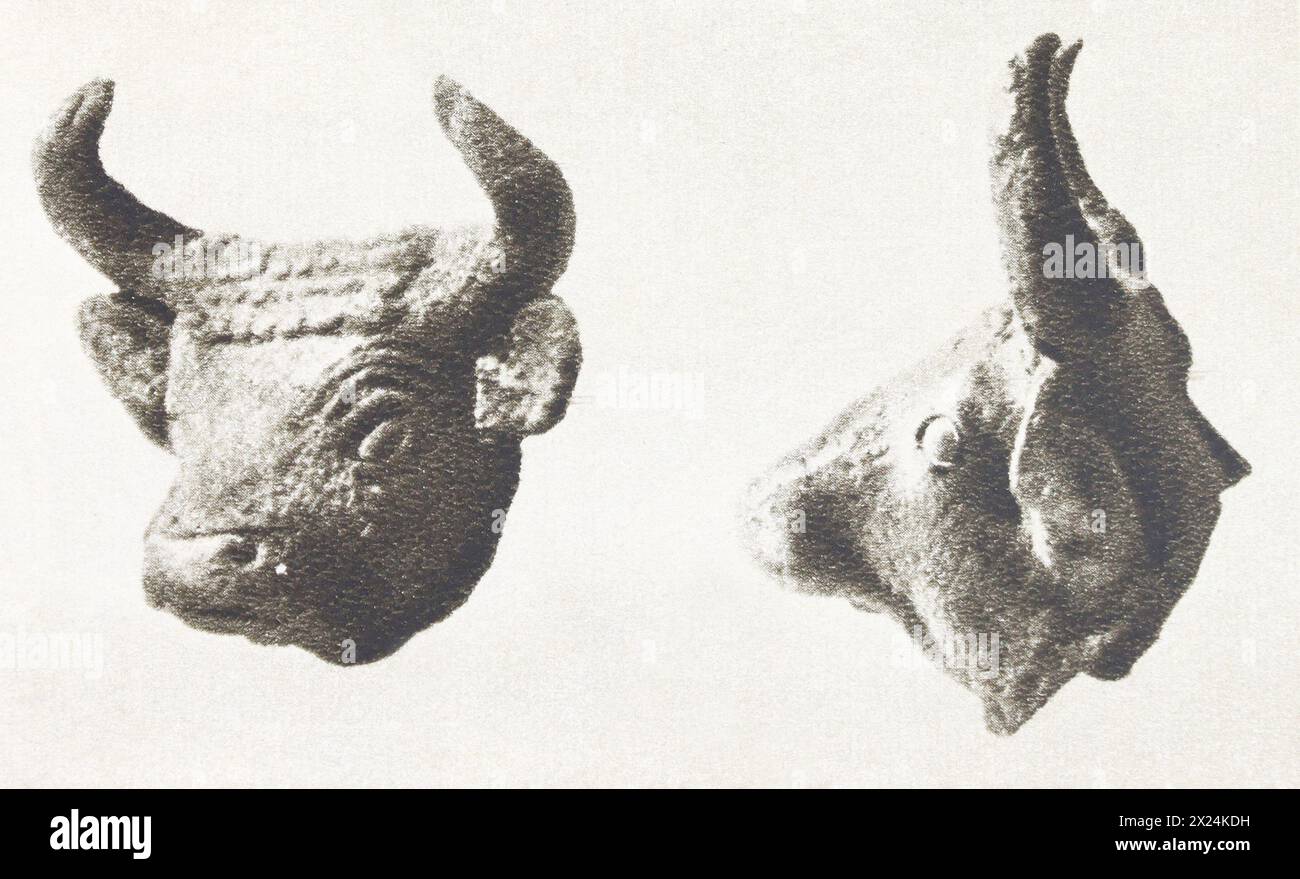 Silver head of a bull from a royal burial. First Dynasty of Ur. First half of the 3rd millennium BC. Stock Photohttps://www.alamy.com/image-license-details/?v=1https://www.alamy.com/silver-head-of-a-bull-from-a-royal-burial-first-dynasty-of-ur-first-half-of-the-3rd-millennium-bc-image603695277.html
Silver head of a bull from a royal burial. First Dynasty of Ur. First half of the 3rd millennium BC. Stock Photohttps://www.alamy.com/image-license-details/?v=1https://www.alamy.com/silver-head-of-a-bull-from-a-royal-burial-first-dynasty-of-ur-first-half-of-the-3rd-millennium-bc-image603695277.htmlRM2X24KDH–Silver head of a bull from a royal burial. First Dynasty of Ur. First half of the 3rd millennium BC.
 The beehive tombs from the 3rd millennium BC, Al Ayn, Oman, UNESCO Stock Photohttps://www.alamy.com/image-license-details/?v=1https://www.alamy.com/the-beehive-tombs-from-the-3rd-millennium-bc-al-ayn-oman-unesco-image6621959.html
The beehive tombs from the 3rd millennium BC, Al Ayn, Oman, UNESCO Stock Photohttps://www.alamy.com/image-license-details/?v=1https://www.alamy.com/the-beehive-tombs-from-the-3rd-millennium-bc-al-ayn-oman-unesco-image6621959.htmlRMA6JCG8–The beehive tombs from the 3rd millennium BC, Al Ayn, Oman, UNESCO
 10 December 2019, Saxony-Anhalt, Zackmünde: A visitor of the ring sanctuary Pömmelte stands at sunset at a gate of the complex. The Kreisgrabenanlage is a reconstruction of a ritual place that is said to have existed there since the end of the 3rd millennium BC. The facility is said to have been used astronomically. Two of the entrances to the installation correspond to the position of the rising and setting sun at certain seasonal festivals. Photo: Klaus-Dietmar Gabbert/dpa-Zentralbild/ZB Stock Photohttps://www.alamy.com/image-license-details/?v=1https://www.alamy.com/10-december-2019-saxony-anhalt-zackmnde-a-visitor-of-the-ring-sanctuary-pmmelte-stands-at-sunset-at-a-gate-of-the-complex-the-kreisgrabenanlage-is-a-reconstruction-of-a-ritual-place-that-is-said-to-have-existed-there-since-the-end-of-the-3rd-millennium-bc-the-facility-is-said-to-have-been-used-astronomically-two-of-the-entrances-to-the-installation-correspond-to-the-position-of-the-rising-and-setting-sun-at-certain-seasonal-festivals-photo-klaus-dietmar-gabbertdpa-zentralbildzb-image336108290.html
10 December 2019, Saxony-Anhalt, Zackmünde: A visitor of the ring sanctuary Pömmelte stands at sunset at a gate of the complex. The Kreisgrabenanlage is a reconstruction of a ritual place that is said to have existed there since the end of the 3rd millennium BC. The facility is said to have been used astronomically. Two of the entrances to the installation correspond to the position of the rising and setting sun at certain seasonal festivals. Photo: Klaus-Dietmar Gabbert/dpa-Zentralbild/ZB Stock Photohttps://www.alamy.com/image-license-details/?v=1https://www.alamy.com/10-december-2019-saxony-anhalt-zackmnde-a-visitor-of-the-ring-sanctuary-pmmelte-stands-at-sunset-at-a-gate-of-the-complex-the-kreisgrabenanlage-is-a-reconstruction-of-a-ritual-place-that-is-said-to-have-existed-there-since-the-end-of-the-3rd-millennium-bc-the-facility-is-said-to-have-been-used-astronomically-two-of-the-entrances-to-the-installation-correspond-to-the-position-of-the-rising-and-setting-sun-at-certain-seasonal-festivals-photo-klaus-dietmar-gabbertdpa-zentralbildzb-image336108290.htmlRM2AER1FE–10 December 2019, Saxony-Anhalt, Zackmünde: A visitor of the ring sanctuary Pömmelte stands at sunset at a gate of the complex. The Kreisgrabenanlage is a reconstruction of a ritual place that is said to have existed there since the end of the 3rd millennium BC. The facility is said to have been used astronomically. Two of the entrances to the installation correspond to the position of the rising and setting sun at certain seasonal festivals. Photo: Klaus-Dietmar Gabbert/dpa-Zentralbild/ZB
 Erzi military medieval complex, Ingushetia/Chechnya, the oldest fortifications in the Nakh area date from the 3rd millennium BC Stock Photohttps://www.alamy.com/image-license-details/?v=1https://www.alamy.com/stock-photo-erzi-military-medieval-complex-ingushetiachechnya-the-oldest-fortifications-171290108.html
Erzi military medieval complex, Ingushetia/Chechnya, the oldest fortifications in the Nakh area date from the 3rd millennium BC Stock Photohttps://www.alamy.com/image-license-details/?v=1https://www.alamy.com/stock-photo-erzi-military-medieval-complex-ingushetiachechnya-the-oldest-fortifications-171290108.htmlRFKXJX7T–Erzi military medieval complex, Ingushetia/Chechnya, the oldest fortifications in the Nakh area date from the 3rd millennium BC
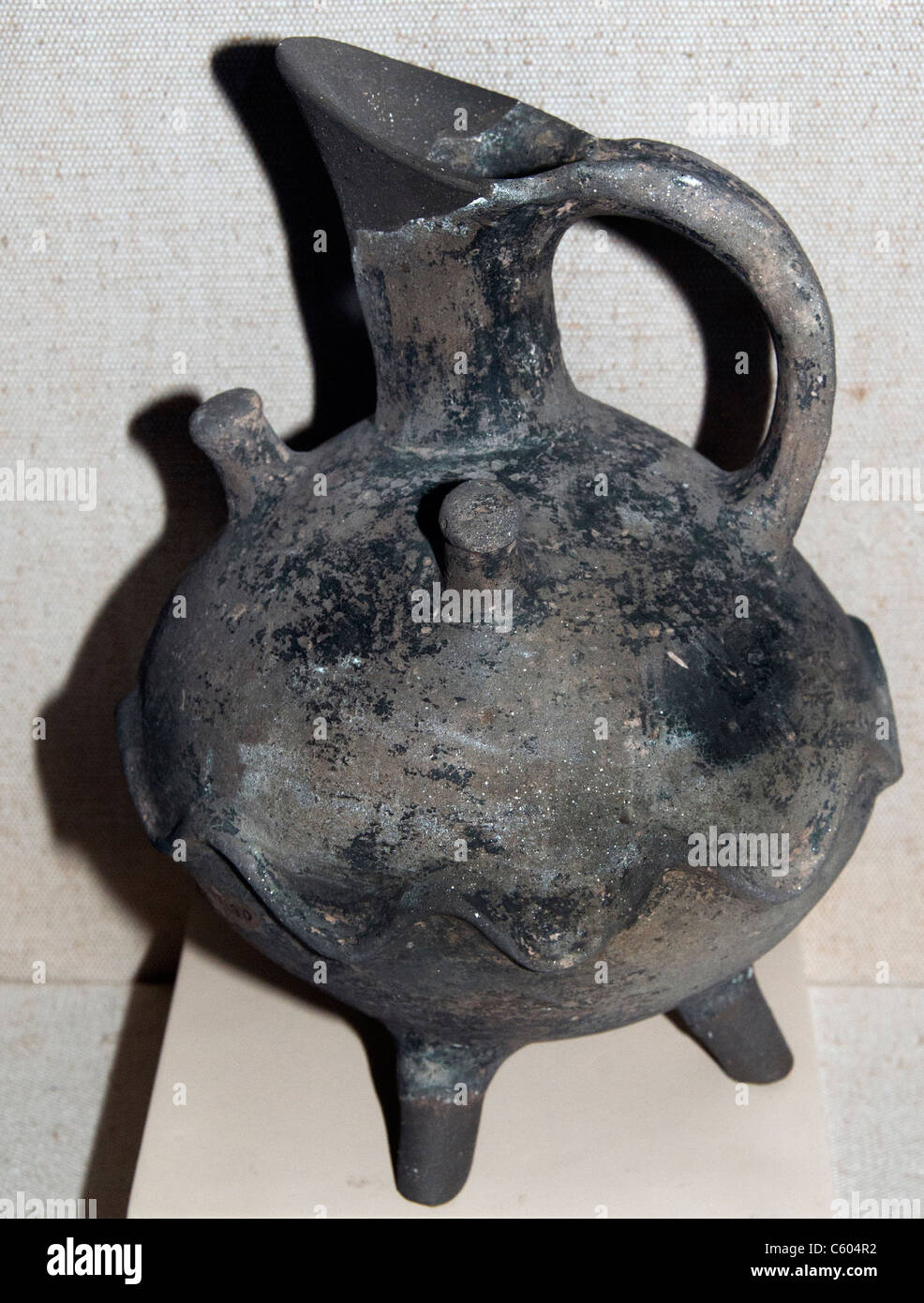 Small Beak Spouted Pitcher Early Bronze Age 3rd Millennium BC Antalya Bolgesi Region Turkey Turkish Pottery Stock Photohttps://www.alamy.com/image-license-details/?v=1https://www.alamy.com/stock-photo-small-beak-spouted-pitcher-early-bronze-age-3rd-millennium-bc-antalya-38112454.html
Small Beak Spouted Pitcher Early Bronze Age 3rd Millennium BC Antalya Bolgesi Region Turkey Turkish Pottery Stock Photohttps://www.alamy.com/image-license-details/?v=1https://www.alamy.com/stock-photo-small-beak-spouted-pitcher-early-bronze-age-3rd-millennium-bc-antalya-38112454.htmlRMC604R2–Small Beak Spouted Pitcher Early Bronze Age 3rd Millennium BC Antalya Bolgesi Region Turkey Turkish Pottery
 Spiral, Early Bronze Age (?), Date 3rd Millennium BC (?), Syria, Silver, 1 1/8 in. (2.9 cm), Metalwork-Ornaments Stock Photohttps://www.alamy.com/image-license-details/?v=1https://www.alamy.com/spiral-early-bronze-age-date-3rd-millennium-bc-syria-silver-1-18-in-29-cm-metalwork-ornaments-image344674711.html
Spiral, Early Bronze Age (?), Date 3rd Millennium BC (?), Syria, Silver, 1 1/8 in. (2.9 cm), Metalwork-Ornaments Stock Photohttps://www.alamy.com/image-license-details/?v=1https://www.alamy.com/spiral-early-bronze-age-date-3rd-millennium-bc-syria-silver-1-18-in-29-cm-metalwork-ornaments-image344674711.htmlRM2B0N833–Spiral, Early Bronze Age (?), Date 3rd Millennium BC (?), Syria, Silver, 1 1/8 in. (2.9 cm), Metalwork-Ornaments
 Terracotta sculptures in the form of vehicles, maybe offerings at funerals or gifts to the deity Last Quarter 3rd Millennium BC. Stock Photohttps://www.alamy.com/image-license-details/?v=1https://www.alamy.com/stock-photo-terracotta-sculptures-in-the-form-of-vehicles-maybe-offerings-at-funerals-57317864.html
Terracotta sculptures in the form of vehicles, maybe offerings at funerals or gifts to the deity Last Quarter 3rd Millennium BC. Stock Photohttps://www.alamy.com/image-license-details/?v=1https://www.alamy.com/stock-photo-terracotta-sculptures-in-the-form-of-vehicles-maybe-offerings-at-funerals-57317864.htmlRMD971EG–Terracotta sculptures in the form of vehicles, maybe offerings at funerals or gifts to the deity Last Quarter 3rd Millennium BC.
 Remains of the ancient city founded in 2900 BC. Stock Photohttps://www.alamy.com/image-license-details/?v=1https://www.alamy.com/remains-of-the-ancient-city-founded-in-2900-bc-image352813634.html
Remains of the ancient city founded in 2900 BC. Stock Photohttps://www.alamy.com/image-license-details/?v=1https://www.alamy.com/remains-of-the-ancient-city-founded-in-2900-bc-image352813634.htmlRM2BE01AX–Remains of the ancient city founded in 2900 BC.
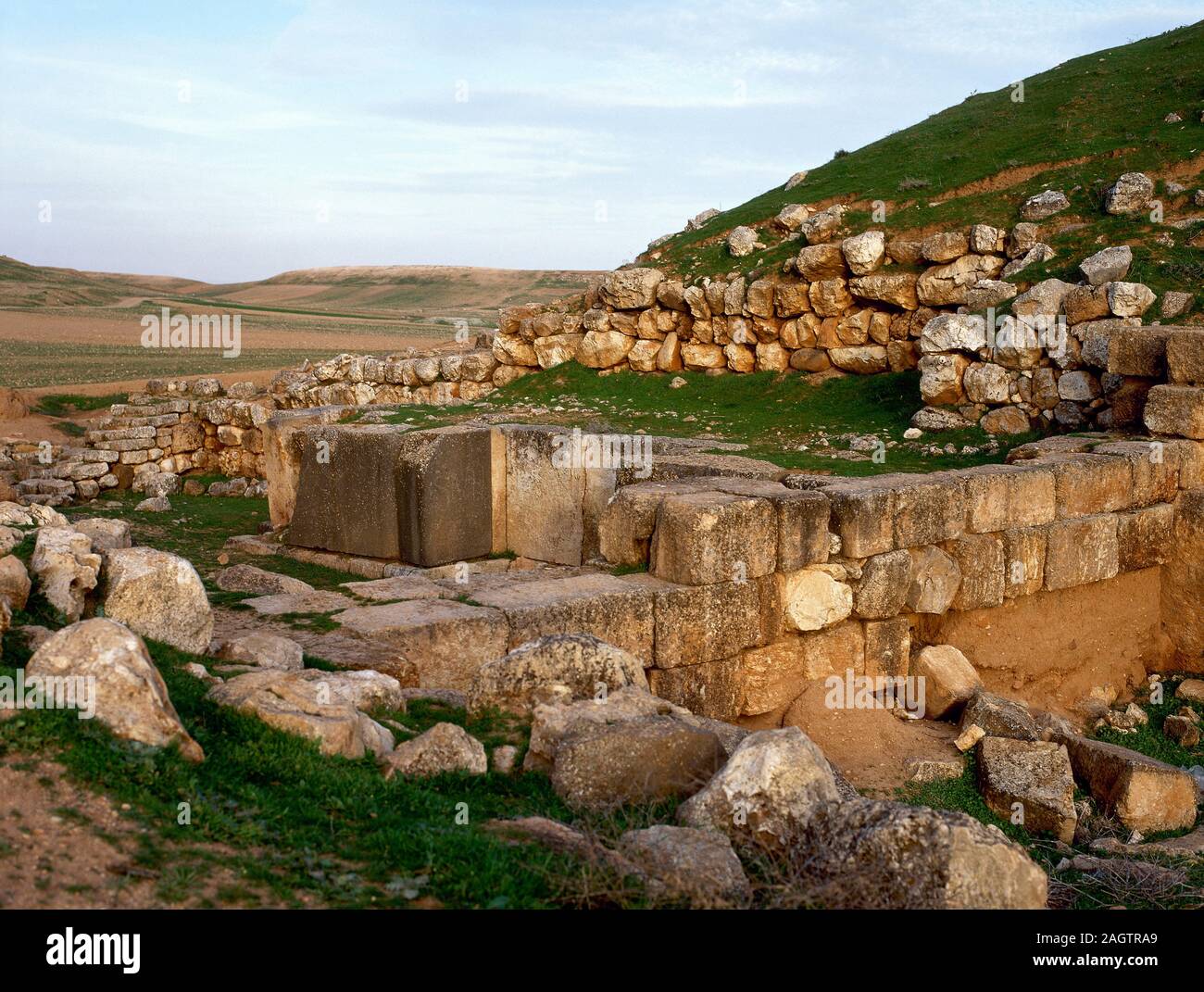 Eastern Mediterranean Civilization. Ebla. Syrian city of the 3rd millenium BC. Capital of the Semitic Kingdom. (Currently called Tell Mardikh). Ruins of a wall. Photo taken before the Syrian Civil War. Stock Photohttps://www.alamy.com/image-license-details/?v=1https://www.alamy.com/eastern-mediterranean-civilization-ebla-syrian-city-of-the-3rd-millenium-bc-capital-of-the-semitic-kingdom-currently-called-tell-mardikh-ruins-of-a-wall-photo-taken-before-the-syrian-civil-war-image337376657.html
Eastern Mediterranean Civilization. Ebla. Syrian city of the 3rd millenium BC. Capital of the Semitic Kingdom. (Currently called Tell Mardikh). Ruins of a wall. Photo taken before the Syrian Civil War. Stock Photohttps://www.alamy.com/image-license-details/?v=1https://www.alamy.com/eastern-mediterranean-civilization-ebla-syrian-city-of-the-3rd-millenium-bc-capital-of-the-semitic-kingdom-currently-called-tell-mardikh-ruins-of-a-wall-photo-taken-before-the-syrian-civil-war-image337376657.htmlRM2AGTRA9–Eastern Mediterranean Civilization. Ebla. Syrian city of the 3rd millenium BC. Capital of the Semitic Kingdom. (Currently called Tell Mardikh). Ruins of a wall. Photo taken before the Syrian Civil War.
 Beautiful Jbeil aka Byblos harbour, Lebanon, ancient Phoenician city dating from 3rd millennium BC Stock Photohttps://www.alamy.com/image-license-details/?v=1https://www.alamy.com/stock-photo-beautiful-jbeil-aka-byblos-harbour-lebanon-ancient-phoenician-city-41475453.html
Beautiful Jbeil aka Byblos harbour, Lebanon, ancient Phoenician city dating from 3rd millennium BC Stock Photohttps://www.alamy.com/image-license-details/?v=1https://www.alamy.com/stock-photo-beautiful-jbeil-aka-byblos-harbour-lebanon-ancient-phoenician-city-41475453.htmlRMCBDAA5–Beautiful Jbeil aka Byblos harbour, Lebanon, ancient Phoenician city dating from 3rd millennium BC
 . English: Bronze flag, Shahdad Kerman, Iran ?????: ???? ????? ??? ??? ?? ????? ????? ????? ?????? ????? . 3rd millennium BC 99 Bronze flag, Shadad Kerman, Iran Stock Photohttps://www.alamy.com/image-license-details/?v=1https://www.alamy.com/english-bronze-flag-shahdad-kerman-iran-3rd-millennium-bc-99-bronze-flag-shadad-kerman-iran-image214241329.html
. English: Bronze flag, Shahdad Kerman, Iran ?????: ???? ????? ??? ??? ?? ????? ????? ????? ?????? ????? . 3rd millennium BC 99 Bronze flag, Shadad Kerman, Iran Stock Photohttps://www.alamy.com/image-license-details/?v=1https://www.alamy.com/english-bronze-flag-shahdad-kerman-iran-3rd-millennium-bc-99-bronze-flag-shadad-kerman-iran-image214241329.htmlRMPCFF01–. English: Bronze flag, Shahdad Kerman, Iran ?????: ???? ????? ??? ??? ?? ????? ????? ????? ?????? ????? . 3rd millennium BC 99 Bronze flag, Shadad Kerman, Iran
 Arabic peninsula. Anthropomorphe Stele. 57x27 cm. Late 4th-early 3rd millennium BC. Sandstone. al-Ma'akir / Qaryat al-Kaafa, nera Hail. National Museum, Riyadh. Saudi Arabian. Stock Photohttps://www.alamy.com/image-license-details/?v=1https://www.alamy.com/arabic-peninsula-anthropomorphe-stele-57x27-cm-late-4th-early-3rd-millennium-bc-sandstone-al-maakir-qaryat-al-kaafa-nera-hail-national-museum-riyadh-saudi-arabian-image220344250.html
Arabic peninsula. Anthropomorphe Stele. 57x27 cm. Late 4th-early 3rd millennium BC. Sandstone. al-Ma'akir / Qaryat al-Kaafa, nera Hail. National Museum, Riyadh. Saudi Arabian. Stock Photohttps://www.alamy.com/image-license-details/?v=1https://www.alamy.com/arabic-peninsula-anthropomorphe-stele-57x27-cm-late-4th-early-3rd-millennium-bc-sandstone-al-maakir-qaryat-al-kaafa-nera-hail-national-museum-riyadh-saudi-arabian-image220344250.htmlRMPPDF9E–Arabic peninsula. Anthropomorphe Stele. 57x27 cm. Late 4th-early 3rd millennium BC. Sandstone. al-Ma'akir / Qaryat al-Kaafa, nera Hail. National Museum, Riyadh. Saudi Arabian.
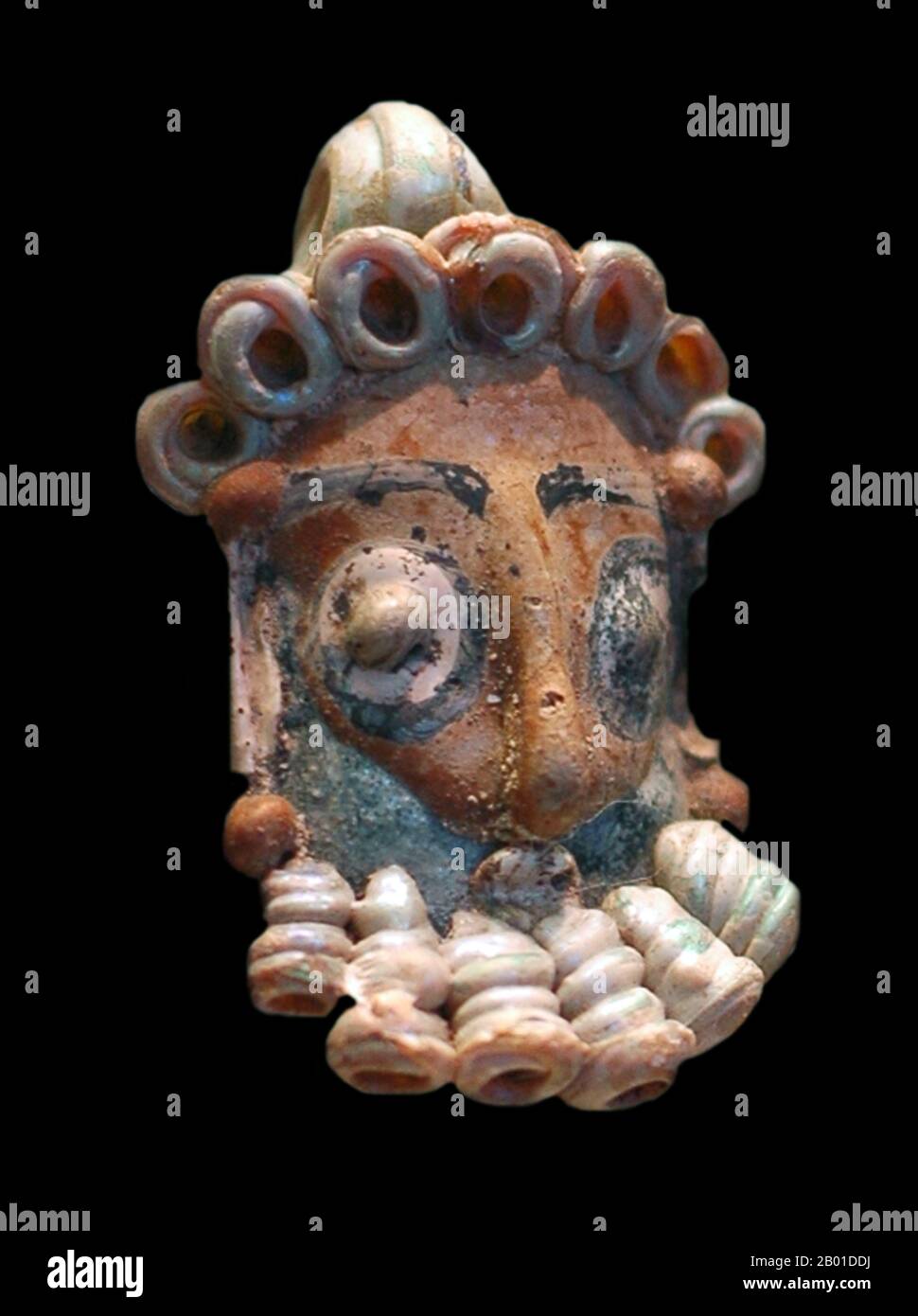 Tunisia: Head of a bearded man, coloured glass, Carthage, 4th-3rd centuries BCE. The head was possibly a pendant or part of a necklace Carthage (Latin: Carthago or Karthago, Ancient Greek: Karkhēdōn, Arabic: Qarṭāj, Berber: Kartajen, meaning New City) is a major urban centre that has existed for nearly 3,000 years on the Gulf of Tunis, developing from a Phoenician colony of the 1st millennium BCE. The first civilisation that developed within the city's sphere of influence is referred to as Punic (a form of the word Phoenician) or Carthaginian. Stock Photohttps://www.alamy.com/image-license-details/?v=1https://www.alamy.com/tunisia-head-of-a-bearded-man-coloured-glass-carthage-4th-3rd-centuries-bce-the-head-was-possibly-a-pendant-or-part-of-a-necklace-carthage-latin-carthago-or-karthago-ancient-greek-karkhdn-arabic-qarj-berber-kartajen-meaning-new-city-is-a-major-urban-centre-that-has-existed-for-nearly-3000-years-on-the-gulf-of-tunis-developing-from-a-phoenician-colony-of-the-1st-millennium-bce-the-first-civilisation-that-developed-within-the-citys-sphere-of-influence-is-referred-to-as-punic-a-form-of-the-word-phoenician-or-carthaginian-image344239886.html
Tunisia: Head of a bearded man, coloured glass, Carthage, 4th-3rd centuries BCE. The head was possibly a pendant or part of a necklace Carthage (Latin: Carthago or Karthago, Ancient Greek: Karkhēdōn, Arabic: Qarṭāj, Berber: Kartajen, meaning New City) is a major urban centre that has existed for nearly 3,000 years on the Gulf of Tunis, developing from a Phoenician colony of the 1st millennium BCE. The first civilisation that developed within the city's sphere of influence is referred to as Punic (a form of the word Phoenician) or Carthaginian. Stock Photohttps://www.alamy.com/image-license-details/?v=1https://www.alamy.com/tunisia-head-of-a-bearded-man-coloured-glass-carthage-4th-3rd-centuries-bce-the-head-was-possibly-a-pendant-or-part-of-a-necklace-carthage-latin-carthago-or-karthago-ancient-greek-karkhdn-arabic-qarj-berber-kartajen-meaning-new-city-is-a-major-urban-centre-that-has-existed-for-nearly-3000-years-on-the-gulf-of-tunis-developing-from-a-phoenician-colony-of-the-1st-millennium-bce-the-first-civilisation-that-developed-within-the-citys-sphere-of-influence-is-referred-to-as-punic-a-form-of-the-word-phoenician-or-carthaginian-image344239886.htmlRM2B01DDJ–Tunisia: Head of a bearded man, coloured glass, Carthage, 4th-3rd centuries BCE. The head was possibly a pendant or part of a necklace Carthage (Latin: Carthago or Karthago, Ancient Greek: Karkhēdōn, Arabic: Qarṭāj, Berber: Kartajen, meaning New City) is a major urban centre that has existed for nearly 3,000 years on the Gulf of Tunis, developing from a Phoenician colony of the 1st millennium BCE. The first civilisation that developed within the city's sphere of influence is referred to as Punic (a form of the word Phoenician) or Carthaginian.
 5th Dynasty. Burial assemblage of a intacte tomb from Gebelein. Artefacts displayed in thier original position. 8C. 2435-2306 BC). Egyptian Museum of Stock Photohttps://www.alamy.com/image-license-details/?v=1https://www.alamy.com/5th-dynasty-burial-assemblage-of-a-intacte-tomb-from-gebelein-artefacts-displayed-in-thier-original-position-8c-2435-2306-bc-egyptian-museum-of-image638602364.html
5th Dynasty. Burial assemblage of a intacte tomb from Gebelein. Artefacts displayed in thier original position. 8C. 2435-2306 BC). Egyptian Museum of Stock Photohttps://www.alamy.com/image-license-details/?v=1https://www.alamy.com/5th-dynasty-burial-assemblage-of-a-intacte-tomb-from-gebelein-artefacts-displayed-in-thier-original-position-8c-2435-2306-bc-egyptian-museum-of-image638602364.htmlRM2S2XRR8–5th Dynasty. Burial assemblage of a intacte tomb from Gebelein. Artefacts displayed in thier original position. 8C. 2435-2306 BC). Egyptian Museum of
 France, Morbihan, Carnac, alignments of Ménec, set of 1050 menhirs, in 11 rows, Built between the 5th and 3rd millennium BC, these alignments of stones could be a giant calendar which specified the important periods of agriculture and formed a way of determining the time to be able to feed oneself, agriculture being the main source of food during the Neolithic era. Stock Photohttps://www.alamy.com/image-license-details/?v=1https://www.alamy.com/france-morbihan-carnac-alignments-of-mnec-set-of-1050-menhirs-in-11-rows-built-between-the-5th-and-3rd-millennium-bc-these-alignments-of-stones-could-be-a-giant-calendar-which-specified-the-important-periods-of-agriculture-and-formed-a-way-of-determining-the-time-to-be-able-to-feed-oneself-agriculture-being-the-main-source-of-food-during-the-neolithic-era-image598047049.html
France, Morbihan, Carnac, alignments of Ménec, set of 1050 menhirs, in 11 rows, Built between the 5th and 3rd millennium BC, these alignments of stones could be a giant calendar which specified the important periods of agriculture and formed a way of determining the time to be able to feed oneself, agriculture being the main source of food during the Neolithic era. Stock Photohttps://www.alamy.com/image-license-details/?v=1https://www.alamy.com/france-morbihan-carnac-alignments-of-mnec-set-of-1050-menhirs-in-11-rows-built-between-the-5th-and-3rd-millennium-bc-these-alignments-of-stones-could-be-a-giant-calendar-which-specified-the-important-periods-of-agriculture-and-formed-a-way-of-determining-the-time-to-be-able-to-feed-oneself-agriculture-being-the-main-source-of-food-during-the-neolithic-era-image598047049.htmlRM2WMYB35–France, Morbihan, Carnac, alignments of Ménec, set of 1050 menhirs, in 11 rows, Built between the 5th and 3rd millennium BC, these alignments of stones could be a giant calendar which specified the important periods of agriculture and formed a way of determining the time to be able to feed oneself, agriculture being the main source of food during the Neolithic era.
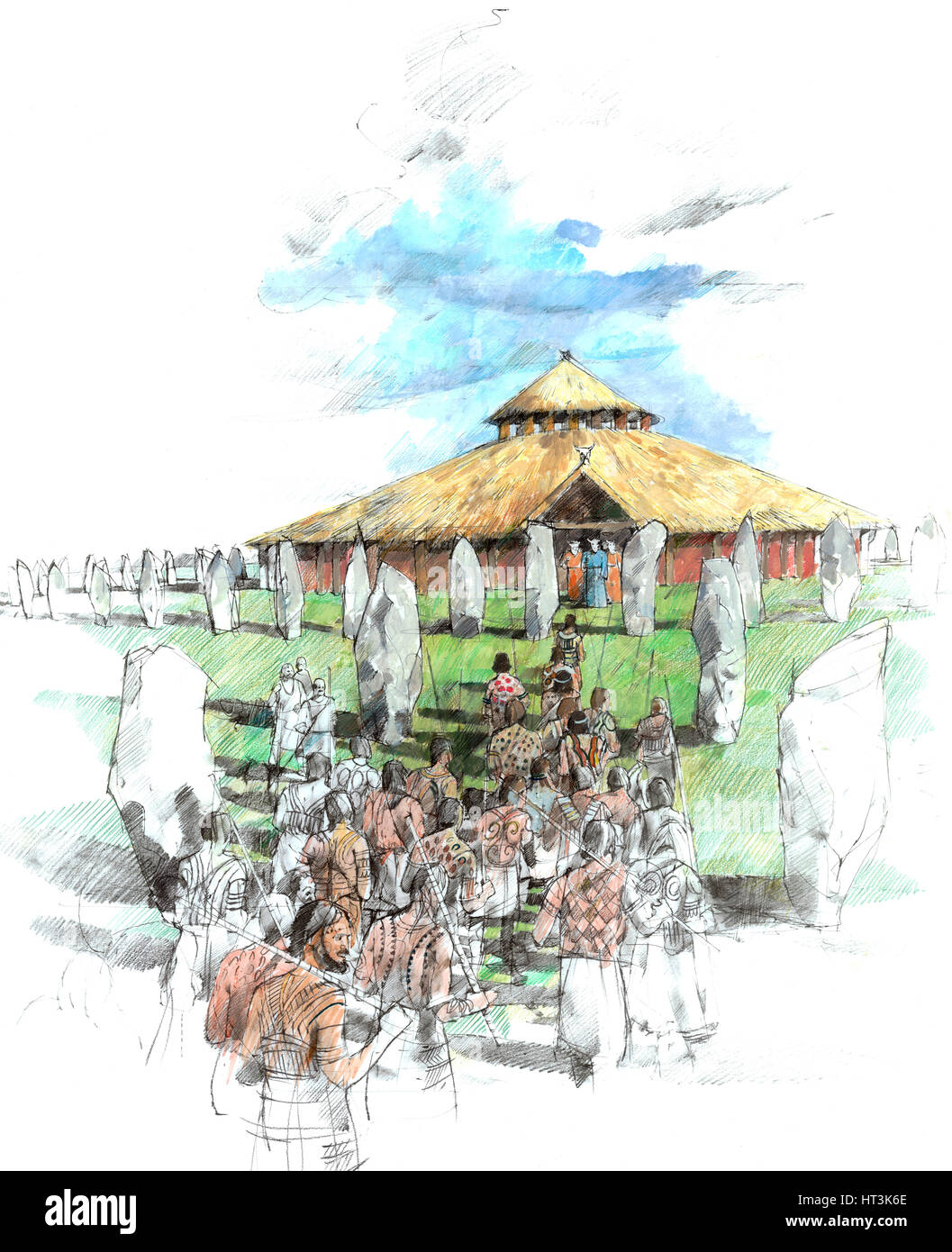 Ceremonial procession Avebury Stone Circle shrine, Wiltshire, 3rd Millennium BC, (c1990-2010). Artist: Ivan Lapper. Stock Photohttps://www.alamy.com/image-license-details/?v=1https://www.alamy.com/stock-photo-ceremonial-procession-avebury-stone-circle-shrine-wiltshire-3rd-millennium-135305254.html
Ceremonial procession Avebury Stone Circle shrine, Wiltshire, 3rd Millennium BC, (c1990-2010). Artist: Ivan Lapper. Stock Photohttps://www.alamy.com/image-license-details/?v=1https://www.alamy.com/stock-photo-ceremonial-procession-avebury-stone-circle-shrine-wiltshire-3rd-millennium-135305254.htmlRMHT3K6E–Ceremonial procession Avebury Stone Circle shrine, Wiltshire, 3rd Millennium BC, (c1990-2010). Artist: Ivan Lapper.
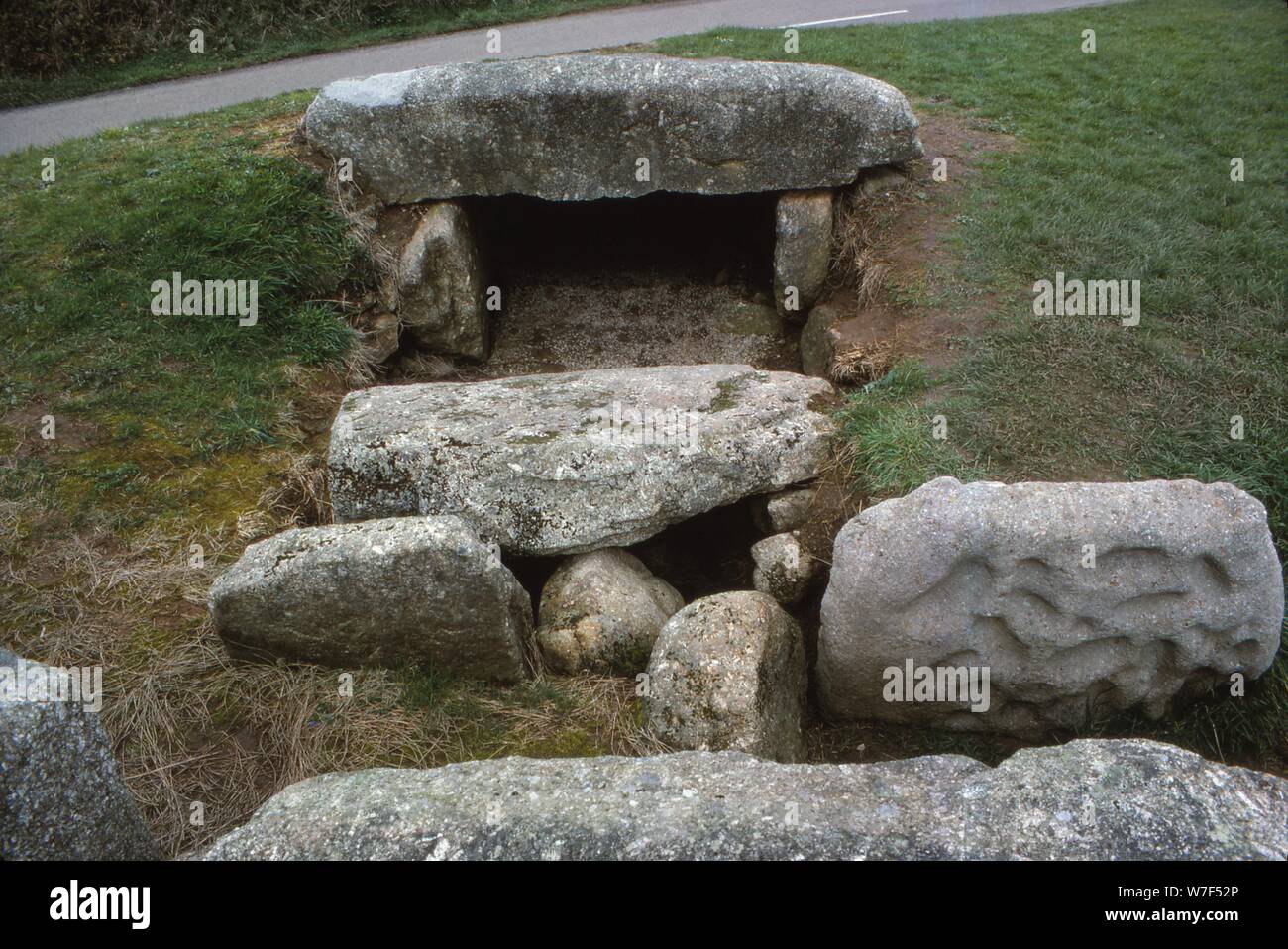 Neolithic tomb, Tregiffian Barrow, Penwith, Cornwall, 3rd Millennium BC, 20th century. Artist: Unknown. Stock Photohttps://www.alamy.com/image-license-details/?v=1https://www.alamy.com/neolithic-tomb-tregiffian-barrow-penwith-cornwall-3rd-millennium-bc-20th-century-artist-unknown-image262791390.html
Neolithic tomb, Tregiffian Barrow, Penwith, Cornwall, 3rd Millennium BC, 20th century. Artist: Unknown. Stock Photohttps://www.alamy.com/image-license-details/?v=1https://www.alamy.com/neolithic-tomb-tregiffian-barrow-penwith-cornwall-3rd-millennium-bc-20th-century-artist-unknown-image262791390.htmlRMW7F52P–Neolithic tomb, Tregiffian Barrow, Penwith, Cornwall, 3rd Millennium BC, 20th century. Artist: Unknown.
 Horse figurines. LURISTAN. 3rd millennium BC. Paris, Cernuschi museum. 35407-3 BRONZE, Cheval, FIGURINE, animal Stock Photohttps://www.alamy.com/image-license-details/?v=1https://www.alamy.com/horse-figurines-luristan-3rd-millennium-bc-paris-cernuschi-museum-35407-3-bronze-cheval-figurine-animal-image596743431.html
Horse figurines. LURISTAN. 3rd millennium BC. Paris, Cernuschi museum. 35407-3 BRONZE, Cheval, FIGURINE, animal Stock Photohttps://www.alamy.com/image-license-details/?v=1https://www.alamy.com/horse-figurines-luristan-3rd-millennium-bc-paris-cernuschi-museum-35407-3-bronze-cheval-figurine-animal-image596743431.htmlRM2WJT09B–Horse figurines. LURISTAN. 3rd millennium BC. Paris, Cernuschi museum. 35407-3 BRONZE, Cheval, FIGURINE, animal
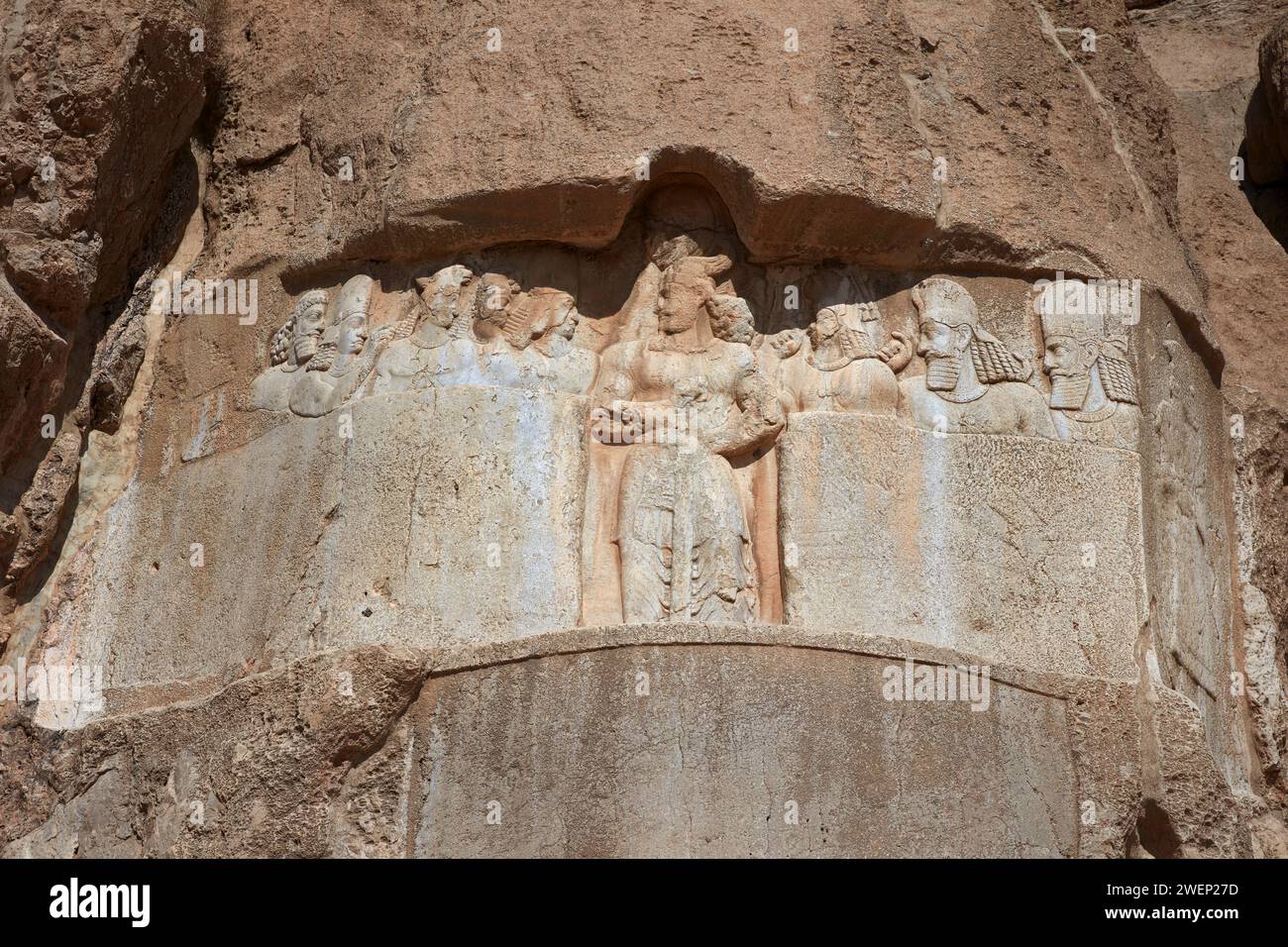 Rock relief of Persian king Bahram II and his royal family carved over Elamites relief dated to the 3rd millennium BC. Naqsh-e Rostam Necropolis, Iran Stock Photohttps://www.alamy.com/image-license-details/?v=1https://www.alamy.com/rock-relief-of-persian-king-bahram-ii-and-his-royal-family-carved-over-elamites-relief-dated-to-the-3rd-millennium-bc-naqsh-e-rostam-necropolis-iran-image594242417.html
Rock relief of Persian king Bahram II and his royal family carved over Elamites relief dated to the 3rd millennium BC. Naqsh-e Rostam Necropolis, Iran Stock Photohttps://www.alamy.com/image-license-details/?v=1https://www.alamy.com/rock-relief-of-persian-king-bahram-ii-and-his-royal-family-carved-over-elamites-relief-dated-to-the-3rd-millennium-bc-naqsh-e-rostam-necropolis-iran-image594242417.htmlRM2WEP27D–Rock relief of Persian king Bahram II and his royal family carved over Elamites relief dated to the 3rd millennium BC. Naqsh-e Rostam Necropolis, Iran
 Ancient Chinese painted clay vessel of the Eneolithic period with geometric designs - 3rd millennium BC. Photographs of the first half of the 20th century. Stock Photohttps://www.alamy.com/image-license-details/?v=1https://www.alamy.com/ancient-chinese-painted-clay-vessel-of-the-eneolithic-period-with-geometric-designs-3rd-millennium-bc-photographs-of-the-first-half-of-the-20th-century-image605045973.html
Ancient Chinese painted clay vessel of the Eneolithic period with geometric designs - 3rd millennium BC. Photographs of the first half of the 20th century. Stock Photohttps://www.alamy.com/image-license-details/?v=1https://www.alamy.com/ancient-chinese-painted-clay-vessel-of-the-eneolithic-period-with-geometric-designs-3rd-millennium-bc-photographs-of-the-first-half-of-the-20th-century-image605045973.htmlRM2X4A68N–Ancient Chinese painted clay vessel of the Eneolithic period with geometric designs - 3rd millennium BC. Photographs of the first half of the 20th century.
 The beehive tombs from the 3rd millennium BC, Al Ayn, Oman UNESCO Stock Photohttps://www.alamy.com/image-license-details/?v=1https://www.alamy.com/the-beehive-tombs-from-the-3rd-millennium-bc-al-ayn-oman-unesco-image5901448.html
The beehive tombs from the 3rd millennium BC, Al Ayn, Oman UNESCO Stock Photohttps://www.alamy.com/image-license-details/?v=1https://www.alamy.com/the-beehive-tombs-from-the-3rd-millennium-bc-al-ayn-oman-unesco-image5901448.htmlRMA1TBM9–The beehive tombs from the 3rd millennium BC, Al Ayn, Oman UNESCO
 10 December 2019, Saxony-Anhalt, Zackmünde: The setting sun can be seen through a gate of the Ring Sanctuary Pömmelte. The Kreisgrabenanlage is a reconstruction of a ritual place which is said to have existed there since the end of the 3rd millennium BC. The facility is said to have been used astronomically. Two of the entrances to the installation correspond to the position of the rising and setting sun at certain seasonal festivals. Photo: Klaus-Dietmar Gabbert/dpa-Zentralbild/ZB Stock Photohttps://www.alamy.com/image-license-details/?v=1https://www.alamy.com/10-december-2019-saxony-anhalt-zackmnde-the-setting-sun-can-be-seen-through-a-gate-of-the-ring-sanctuary-pmmelte-the-kreisgrabenanlage-is-a-reconstruction-of-a-ritual-place-which-is-said-to-have-existed-there-since-the-end-of-the-3rd-millennium-bc-the-facility-is-said-to-have-been-used-astronomically-two-of-the-entrances-to-the-installation-correspond-to-the-position-of-the-rising-and-setting-sun-at-certain-seasonal-festivals-photo-klaus-dietmar-gabbertdpa-zentralbildzb-image336223556.html
10 December 2019, Saxony-Anhalt, Zackmünde: The setting sun can be seen through a gate of the Ring Sanctuary Pömmelte. The Kreisgrabenanlage is a reconstruction of a ritual place which is said to have existed there since the end of the 3rd millennium BC. The facility is said to have been used astronomically. Two of the entrances to the installation correspond to the position of the rising and setting sun at certain seasonal festivals. Photo: Klaus-Dietmar Gabbert/dpa-Zentralbild/ZB Stock Photohttps://www.alamy.com/image-license-details/?v=1https://www.alamy.com/10-december-2019-saxony-anhalt-zackmnde-the-setting-sun-can-be-seen-through-a-gate-of-the-ring-sanctuary-pmmelte-the-kreisgrabenanlage-is-a-reconstruction-of-a-ritual-place-which-is-said-to-have-existed-there-since-the-end-of-the-3rd-millennium-bc-the-facility-is-said-to-have-been-used-astronomically-two-of-the-entrances-to-the-installation-correspond-to-the-position-of-the-rising-and-setting-sun-at-certain-seasonal-festivals-photo-klaus-dietmar-gabbertdpa-zentralbildzb-image336223556.htmlRM2AF08G4–10 December 2019, Saxony-Anhalt, Zackmünde: The setting sun can be seen through a gate of the Ring Sanctuary Pömmelte. The Kreisgrabenanlage is a reconstruction of a ritual place which is said to have existed there since the end of the 3rd millennium BC. The facility is said to have been used astronomically. Two of the entrances to the installation correspond to the position of the rising and setting sun at certain seasonal festivals. Photo: Klaus-Dietmar Gabbert/dpa-Zentralbild/ZB
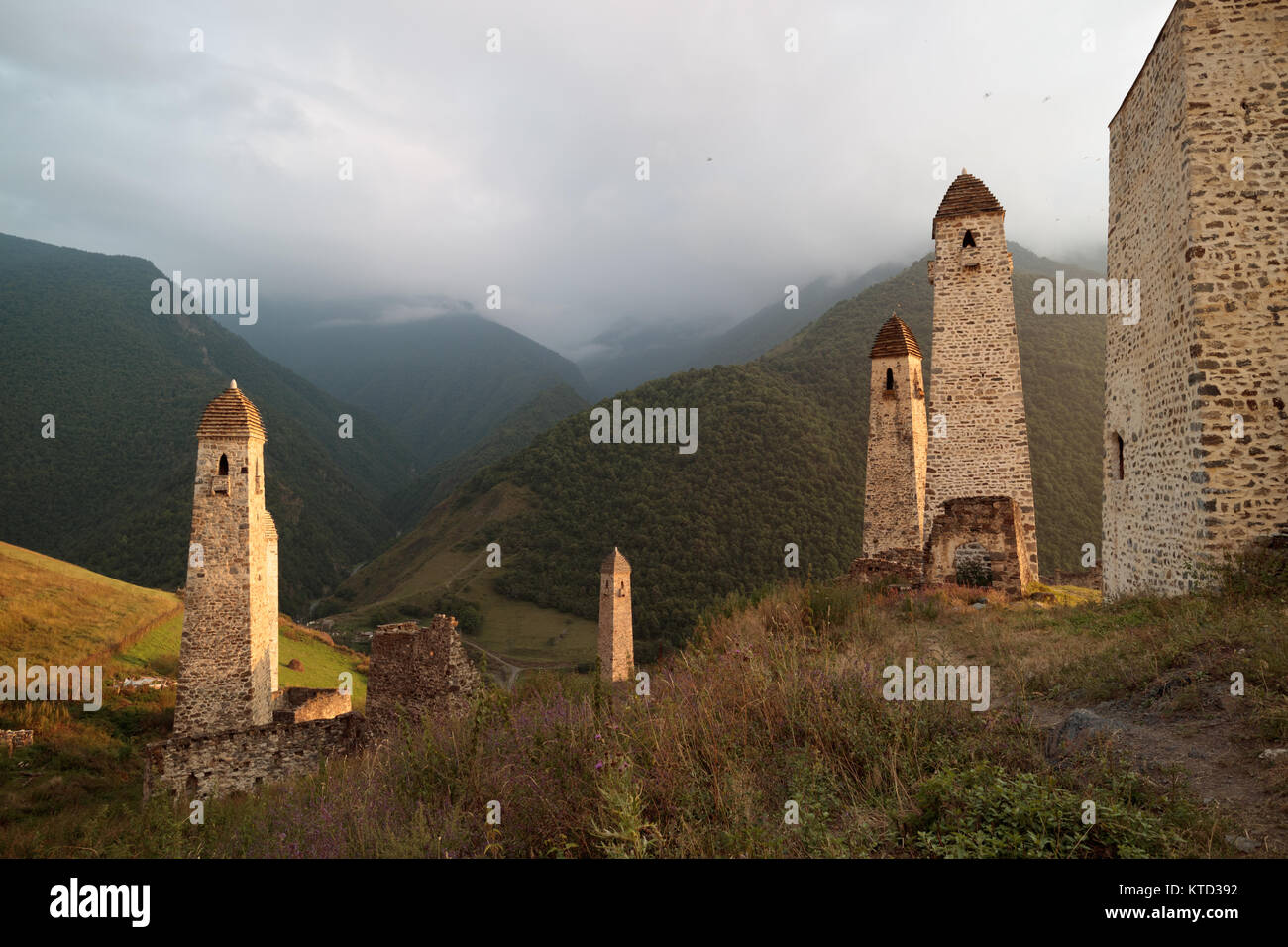 Erzi medieval complex in Ingushetia/Chechnya mountains, the oldest fortifications in the Nakh area date from the 3rd millennium BC. Stock Photohttps://www.alamy.com/image-license-details/?v=1https://www.alamy.com/stock-image-erzi-medieval-complex-in-ingushetiachechnya-mountains-the-oldest-fortifications-169933038.html
Erzi medieval complex in Ingushetia/Chechnya mountains, the oldest fortifications in the Nakh area date from the 3rd millennium BC. Stock Photohttps://www.alamy.com/image-license-details/?v=1https://www.alamy.com/stock-image-erzi-medieval-complex-in-ingushetiachechnya-mountains-the-oldest-fortifications-169933038.htmlRFKTD392–Erzi medieval complex in Ingushetia/Chechnya mountains, the oldest fortifications in the Nakh area date from the 3rd millennium BC.
 Small Beak Spouted Pitcher Early Bronze Age 3rd Millennium BC Antalya Bolgesi Region Turkey Turkish Pottery Stock Photohttps://www.alamy.com/image-license-details/?v=1https://www.alamy.com/stock-photo-small-beak-spouted-pitcher-early-bronze-age-3rd-millennium-bc-antalya-37953292.html
Small Beak Spouted Pitcher Early Bronze Age 3rd Millennium BC Antalya Bolgesi Region Turkey Turkish Pottery Stock Photohttps://www.alamy.com/image-license-details/?v=1https://www.alamy.com/stock-photo-small-beak-spouted-pitcher-early-bronze-age-3rd-millennium-bc-antalya-37953292.htmlRMC5MWPM–Small Beak Spouted Pitcher Early Bronze Age 3rd Millennium BC Antalya Bolgesi Region Turkey Turkish Pottery
 Cylinder seal, Early Bronze Age, Date mid 4th-mid 3rd Millennium BC, Syria, Stone, 0.79 x 0.43 in. (2.01 x 1.09 cm), Stone-Cylinder Seals Stock Photohttps://www.alamy.com/image-license-details/?v=1https://www.alamy.com/cylinder-seal-early-bronze-age-date-mid-4th-mid-3rd-millennium-bc-syria-stone-079-x-043-in-201-x-109-cm-stone-cylinder-seals-image344674004.html
Cylinder seal, Early Bronze Age, Date mid 4th-mid 3rd Millennium BC, Syria, Stone, 0.79 x 0.43 in. (2.01 x 1.09 cm), Stone-Cylinder Seals Stock Photohttps://www.alamy.com/image-license-details/?v=1https://www.alamy.com/cylinder-seal-early-bronze-age-date-mid-4th-mid-3rd-millennium-bc-syria-stone-079-x-043-in-201-x-109-cm-stone-cylinder-seals-image344674004.htmlRM2B0N75T–Cylinder seal, Early Bronze Age, Date mid 4th-mid 3rd Millennium BC, Syria, Stone, 0.79 x 0.43 in. (2.01 x 1.09 cm), Stone-Cylinder Seals
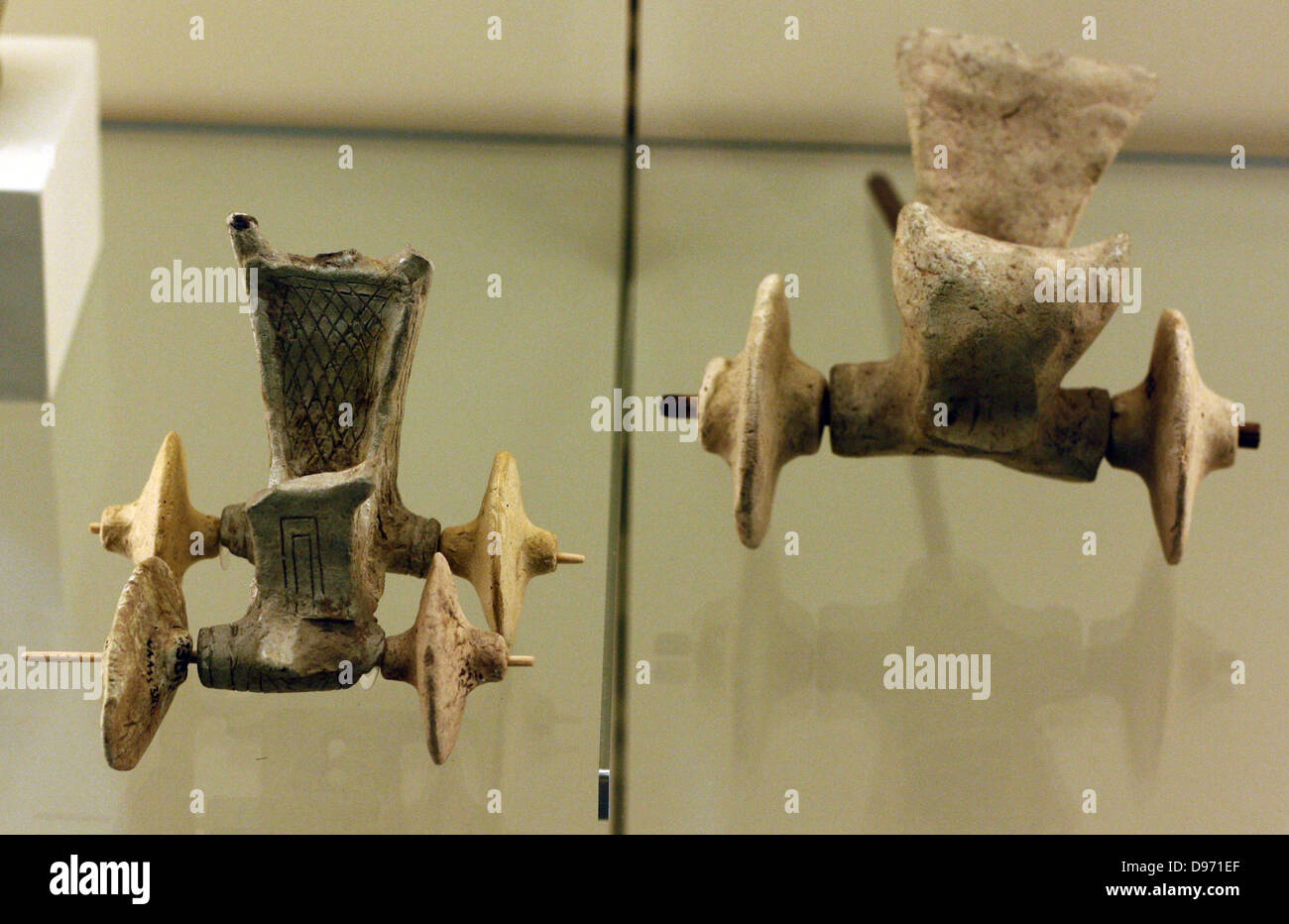 Terracotta sculptures in the form of vehicles, maybe offerings at funerals or gifts to the deity Last Quarter 3rd Millennium BC. Stock Photohttps://www.alamy.com/image-license-details/?v=1https://www.alamy.com/stock-photo-terracotta-sculptures-in-the-form-of-vehicles-maybe-offerings-at-funerals-57317863.html
Terracotta sculptures in the form of vehicles, maybe offerings at funerals or gifts to the deity Last Quarter 3rd Millennium BC. Stock Photohttps://www.alamy.com/image-license-details/?v=1https://www.alamy.com/stock-photo-terracotta-sculptures-in-the-form-of-vehicles-maybe-offerings-at-funerals-57317863.htmlRMD971EF–Terracotta sculptures in the form of vehicles, maybe offerings at funerals or gifts to the deity Last Quarter 3rd Millennium BC.
 Remains of the ancient city founded in 2900 BC. Stock Photohttps://www.alamy.com/image-license-details/?v=1https://www.alamy.com/remains-of-the-ancient-city-founded-in-2900-bc-image352813719.html
Remains of the ancient city founded in 2900 BC. Stock Photohttps://www.alamy.com/image-license-details/?v=1https://www.alamy.com/remains-of-the-ancient-city-founded-in-2900-bc-image352813719.htmlRM2BE01DY–Remains of the ancient city founded in 2900 BC.
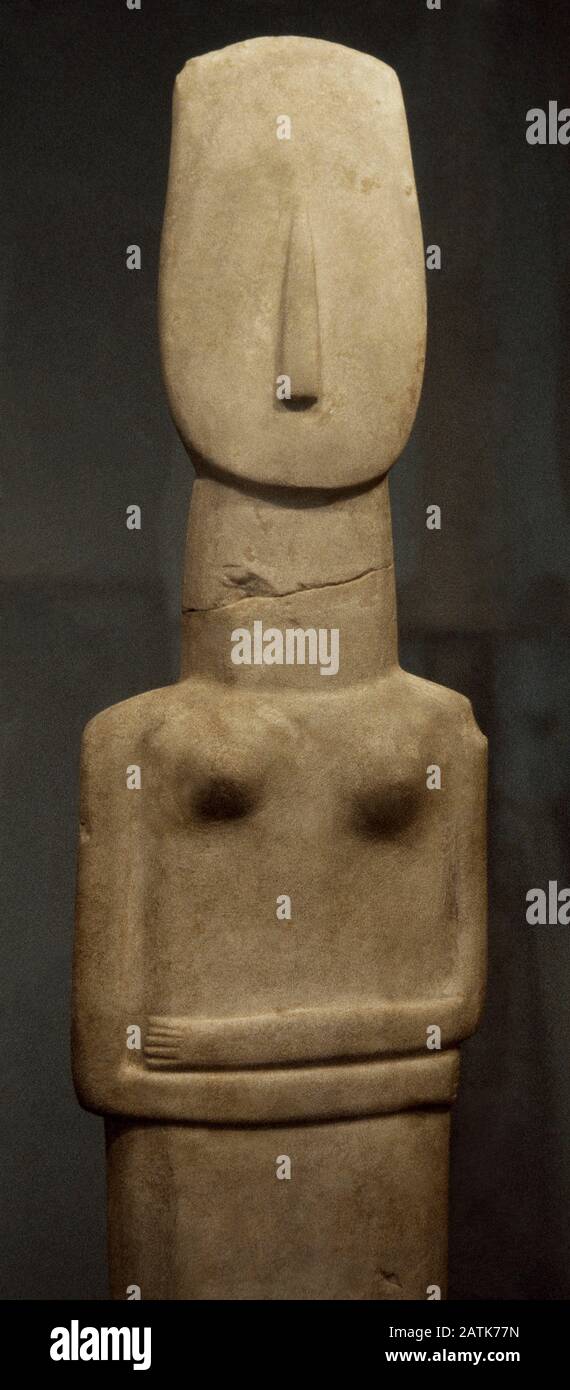 Female Cycladic Idol, attributed to Goulandris Master. Early Cycladic II. 2800-2300 BC. From Island of Amorgos (Cycladic Islands). National Archaeological Museum. Athens, Greece. Stock Photohttps://www.alamy.com/image-license-details/?v=1https://www.alamy.com/female-cycladic-idol-attributed-to-goulandris-master-early-cycladic-ii-2800-2300-bc-from-island-of-amorgos-cycladic-islands-national-archaeological-museum-athens-greece-image342171529.html
Female Cycladic Idol, attributed to Goulandris Master. Early Cycladic II. 2800-2300 BC. From Island of Amorgos (Cycladic Islands). National Archaeological Museum. Athens, Greece. Stock Photohttps://www.alamy.com/image-license-details/?v=1https://www.alamy.com/female-cycladic-idol-attributed-to-goulandris-master-early-cycladic-ii-2800-2300-bc-from-island-of-amorgos-cycladic-islands-national-archaeological-museum-athens-greece-image342171529.htmlRM2ATK77N–Female Cycladic Idol, attributed to Goulandris Master. Early Cycladic II. 2800-2300 BC. From Island of Amorgos (Cycladic Islands). National Archaeological Museum. Athens, Greece.
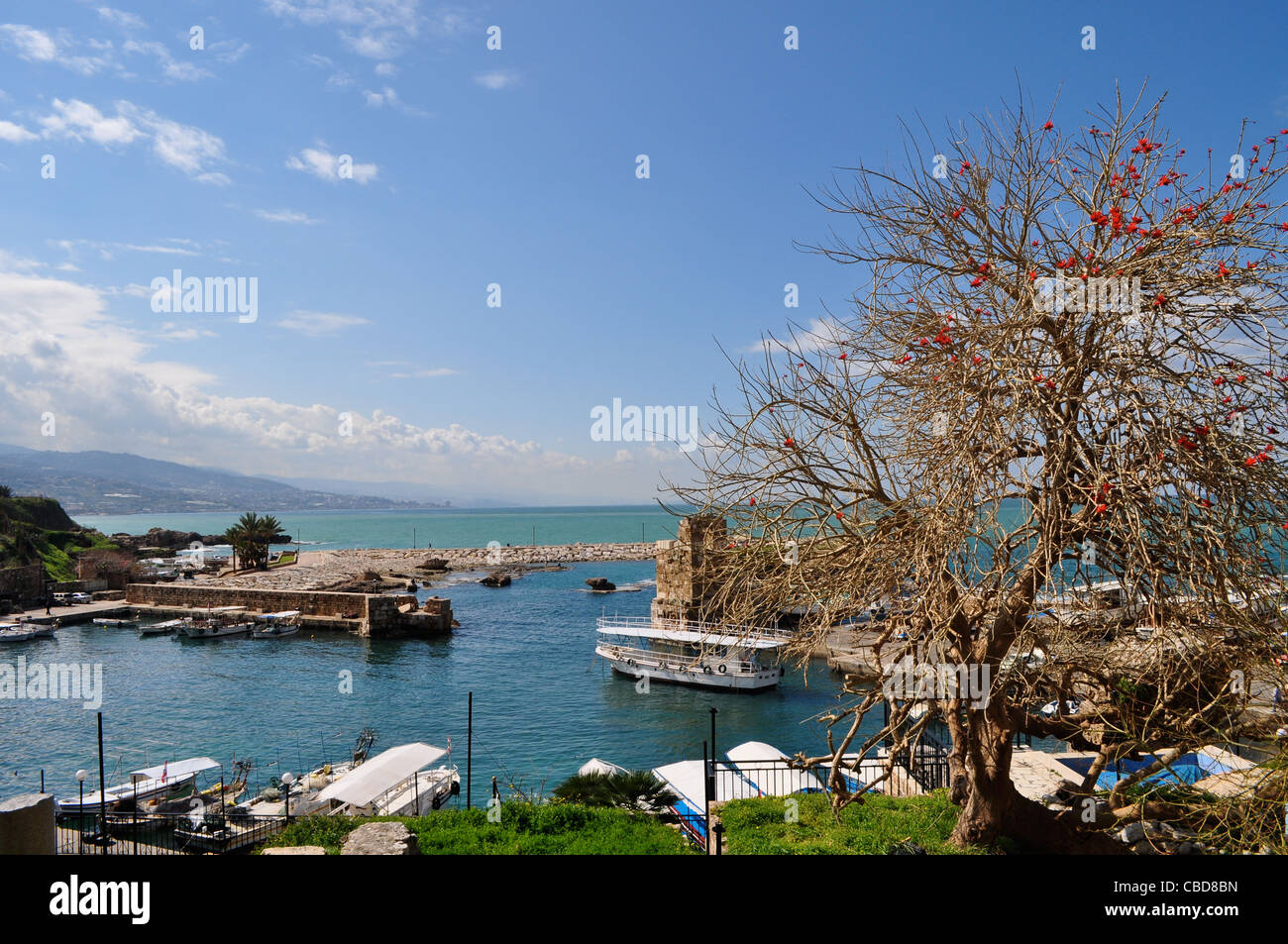 Beautiful Jbeil aka Byblos harbour, Lebanon, ancient Phoenician city dating from 3rd millennium BC Stock Photohttps://www.alamy.com/image-license-details/?v=1https://www.alamy.com/stock-photo-beautiful-jbeil-aka-byblos-harbour-lebanon-ancient-phoenician-city-41473929.html
Beautiful Jbeil aka Byblos harbour, Lebanon, ancient Phoenician city dating from 3rd millennium BC Stock Photohttps://www.alamy.com/image-license-details/?v=1https://www.alamy.com/stock-photo-beautiful-jbeil-aka-byblos-harbour-lebanon-ancient-phoenician-city-41473929.htmlRMCBD8BN–Beautiful Jbeil aka Byblos harbour, Lebanon, ancient Phoenician city dating from 3rd millennium BC
 . English: Bronze flag, Shahdad Kerman, Iran فارسی: پرچم برنزی کشف شده در منطقه شهداد نزدیک کرمان، ایران . 3rd millennium BC. Unknown 99 Bronze flag, Shadad Kerman, Iran Stock Photohttps://www.alamy.com/image-license-details/?v=1https://www.alamy.com/english-bronze-flag-shahdad-kerman-iran-3rd-millennium-bc-unknown-99-bronze-flag-shadad-kerman-iran-image184862760.html
. English: Bronze flag, Shahdad Kerman, Iran فارسی: پرچم برنزی کشف شده در منطقه شهداد نزدیک کرمان، ایران . 3rd millennium BC. Unknown 99 Bronze flag, Shadad Kerman, Iran Stock Photohttps://www.alamy.com/image-license-details/?v=1https://www.alamy.com/english-bronze-flag-shahdad-kerman-iran-3rd-millennium-bc-unknown-99-bronze-flag-shadad-kerman-iran-image184862760.htmlRMMMN69C–. English: Bronze flag, Shahdad Kerman, Iran فارسی: پرچم برنزی کشف شده در منطقه شهداد نزدیک کرمان، ایران . 3rd millennium BC. Unknown 99 Bronze flag, Shadad Kerman, Iran
 Eastern Mediterranean Civilizations. Ebla. Syrian city of III millennium BC. Capital of the Semitic Kingdom. Remains. Syria. Stock Photohttps://www.alamy.com/image-license-details/?v=1https://www.alamy.com/eastern-mediterranean-civilizations-ebla-syrian-city-of-iii-millennium-bc-capital-of-the-semitic-kingdom-remains-syria-image209572063.html
Eastern Mediterranean Civilizations. Ebla. Syrian city of III millennium BC. Capital of the Semitic Kingdom. Remains. Syria. Stock Photohttps://www.alamy.com/image-license-details/?v=1https://www.alamy.com/eastern-mediterranean-civilizations-ebla-syrian-city-of-iii-millennium-bc-capital-of-the-semitic-kingdom-remains-syria-image209572063.htmlRMP4XR8F–Eastern Mediterranean Civilizations. Ebla. Syrian city of III millennium BC. Capital of the Semitic Kingdom. Remains. Syria.
 Tholos de el Romeral. The El Romeral Dolmen is located in the Spanish town of Antequera. It was built in the 3rd millennium BC. Stock Photohttps://www.alamy.com/image-license-details/?v=1https://www.alamy.com/tholos-de-el-romeral-the-el-romeral-dolmen-is-located-in-the-spanish-town-of-antequera-it-was-built-in-the-3rd-millennium-bc-image335791129.html
Tholos de el Romeral. The El Romeral Dolmen is located in the Spanish town of Antequera. It was built in the 3rd millennium BC. Stock Photohttps://www.alamy.com/image-license-details/?v=1https://www.alamy.com/tholos-de-el-romeral-the-el-romeral-dolmen-is-located-in-the-spanish-town-of-antequera-it-was-built-in-the-3rd-millennium-bc-image335791129.htmlRF2AE8H09–Tholos de el Romeral. The El Romeral Dolmen is located in the Spanish town of Antequera. It was built in the 3rd millennium BC.
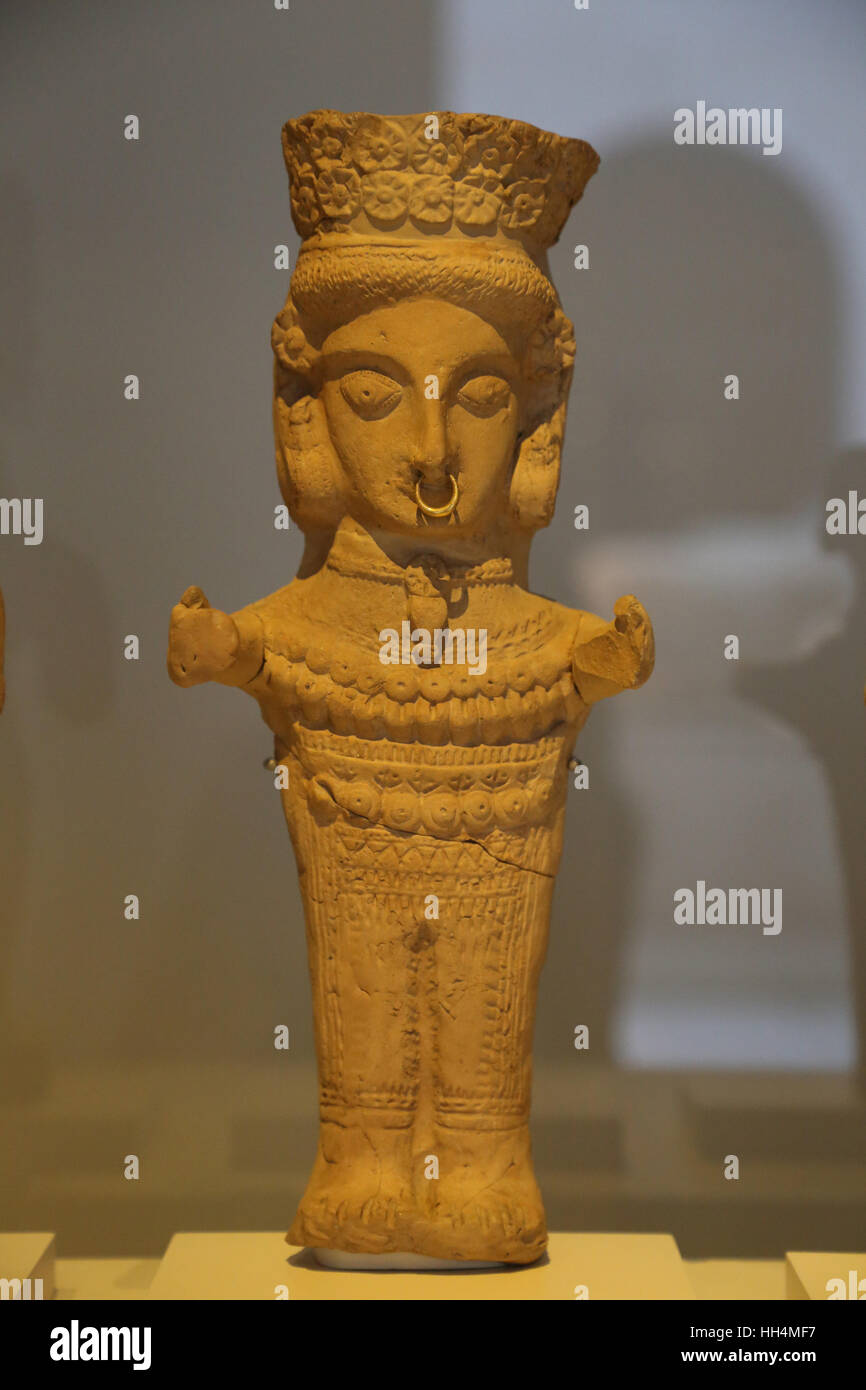 Figure. Deity, a cult figure or an orant. Clay. 4th-3rd century BC. Necropolis of Puig des Molins, Ibiza, Spain. National Archaeological Museum, Madri Stock Photohttps://www.alamy.com/image-license-details/?v=1https://www.alamy.com/stock-photo-figure-deity-a-cult-figure-or-an-orant-clay-4th-3rd-century-bc-necropolis-131025643.html
Figure. Deity, a cult figure or an orant. Clay. 4th-3rd century BC. Necropolis of Puig des Molins, Ibiza, Spain. National Archaeological Museum, Madri Stock Photohttps://www.alamy.com/image-license-details/?v=1https://www.alamy.com/stock-photo-figure-deity-a-cult-figure-or-an-orant-clay-4th-3rd-century-bc-necropolis-131025643.htmlRMHH4MF7–Figure. Deity, a cult figure or an orant. Clay. 4th-3rd century BC. Necropolis of Puig des Molins, Ibiza, Spain. National Archaeological Museum, Madri
 France, Morbihan, Carnac, alignments of Ménec, set of 1050 menhirs, in 11 rows, Built between the 5th and 3rd millennium BC, these alignments of stones could be a giant calendar which specified the important periods of agriculture and formed a way of determining the time to be able to feed oneself, agriculture being the main source of food during the Neolithic era. Stock Photohttps://www.alamy.com/image-license-details/?v=1https://www.alamy.com/france-morbihan-carnac-alignments-of-mnec-set-of-1050-menhirs-in-11-rows-built-between-the-5th-and-3rd-millennium-bc-these-alignments-of-stones-could-be-a-giant-calendar-which-specified-the-important-periods-of-agriculture-and-formed-a-way-of-determining-the-time-to-be-able-to-feed-oneself-agriculture-being-the-main-source-of-food-during-the-neolithic-era-image598047028.html
France, Morbihan, Carnac, alignments of Ménec, set of 1050 menhirs, in 11 rows, Built between the 5th and 3rd millennium BC, these alignments of stones could be a giant calendar which specified the important periods of agriculture and formed a way of determining the time to be able to feed oneself, agriculture being the main source of food during the Neolithic era. Stock Photohttps://www.alamy.com/image-license-details/?v=1https://www.alamy.com/france-morbihan-carnac-alignments-of-mnec-set-of-1050-menhirs-in-11-rows-built-between-the-5th-and-3rd-millennium-bc-these-alignments-of-stones-could-be-a-giant-calendar-which-specified-the-important-periods-of-agriculture-and-formed-a-way-of-determining-the-time-to-be-able-to-feed-oneself-agriculture-being-the-main-source-of-food-during-the-neolithic-era-image598047028.htmlRM2WMYB2C–France, Morbihan, Carnac, alignments of Ménec, set of 1050 menhirs, in 11 rows, Built between the 5th and 3rd millennium BC, these alignments of stones could be a giant calendar which specified the important periods of agriculture and formed a way of determining the time to be able to feed oneself, agriculture being the main source of food during the Neolithic era.
 Ruins of lower town, Ebla, Syria, 2001. Eblan civilization, Early Bronze Age, 3rd millennium BC. Stock Photohttps://www.alamy.com/image-license-details/?v=1https://www.alamy.com/ruins-of-lower-town-ebla-syria-2001-eblan-civilization-early-bronze-age-3rd-millennium-bc-image626640856.html
Ruins of lower town, Ebla, Syria, 2001. Eblan civilization, Early Bronze Age, 3rd millennium BC. Stock Photohttps://www.alamy.com/image-license-details/?v=1https://www.alamy.com/ruins-of-lower-town-ebla-syria-2001-eblan-civilization-early-bronze-age-3rd-millennium-bc-image626640856.htmlRM2YBDXPG–Ruins of lower town, Ebla, Syria, 2001. Eblan civilization, Early Bronze Age, 3rd millennium BC.
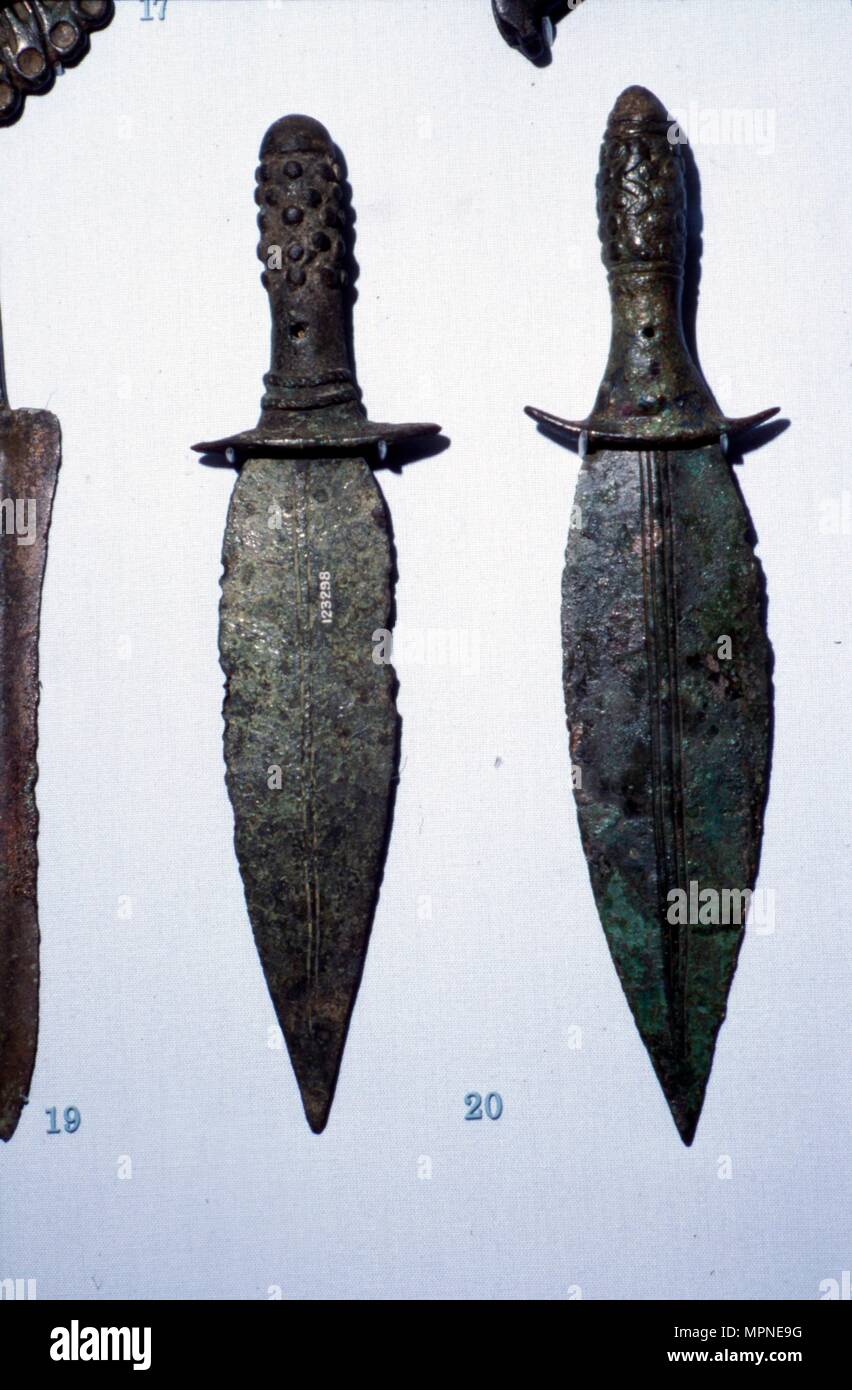 Mesopotamia, Daggers, 3rd millennium BC. Artist: Unknown. Stock Photohttps://www.alamy.com/image-license-details/?v=1https://www.alamy.com/mesopotamia-daggers-3rd-millennium-bc-artist-unknown-image186098348.html
Mesopotamia, Daggers, 3rd millennium BC. Artist: Unknown. Stock Photohttps://www.alamy.com/image-license-details/?v=1https://www.alamy.com/mesopotamia-daggers-3rd-millennium-bc-artist-unknown-image186098348.htmlRMMPNE9G–Mesopotamia, Daggers, 3rd millennium BC. Artist: Unknown.
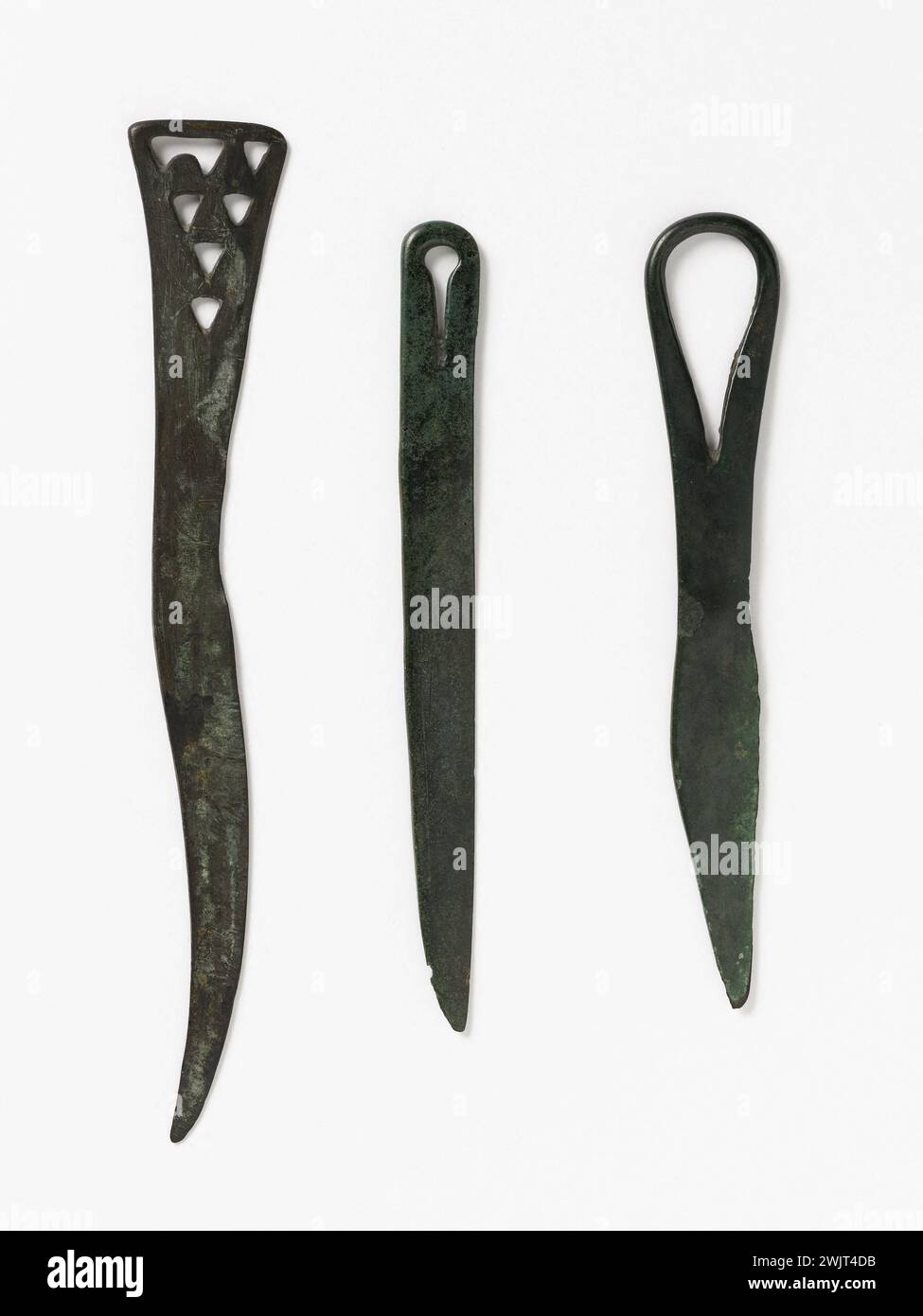 Knives. Ordos. 3rd millennium BC. Paris, Cernuschi museum. 35406-15 Bronze, knife, hetao, meridional Mongolia, ordos, prehistory, prehistoric Stock Photohttps://www.alamy.com/image-license-details/?v=1https://www.alamy.com/knives-ordos-3rd-millennium-bc-paris-cernuschi-museum-35406-15-bronze-knife-hetao-meridional-mongolia-ordos-prehistory-prehistoric-image596746679.html
Knives. Ordos. 3rd millennium BC. Paris, Cernuschi museum. 35406-15 Bronze, knife, hetao, meridional Mongolia, ordos, prehistory, prehistoric Stock Photohttps://www.alamy.com/image-license-details/?v=1https://www.alamy.com/knives-ordos-3rd-millennium-bc-paris-cernuschi-museum-35406-15-bronze-knife-hetao-meridional-mongolia-ordos-prehistory-prehistoric-image596746679.htmlRM2WJT4DB–Knives. Ordos. 3rd millennium BC. Paris, Cernuschi museum. 35406-15 Bronze, knife, hetao, meridional Mongolia, ordos, prehistory, prehistoric
 The Tobyl thinker, stone sculpture, anthropomorphic, 3-2 millennium B.C.Torgai plateau Kazakhstan Stock Photohttps://www.alamy.com/image-license-details/?v=1https://www.alamy.com/the-tobyl-thinker-stone-sculpture-anthropomorphic-3-2-millennium-bctorgai-plateau-kazakhstan-image595175099.html
The Tobyl thinker, stone sculpture, anthropomorphic, 3-2 millennium B.C.Torgai plateau Kazakhstan Stock Photohttps://www.alamy.com/image-license-details/?v=1https://www.alamy.com/the-tobyl-thinker-stone-sculpture-anthropomorphic-3-2-millennium-bctorgai-plateau-kazakhstan-image595175099.htmlRM2WG8FWF–The Tobyl thinker, stone sculpture, anthropomorphic, 3-2 millennium B.C.Torgai plateau Kazakhstan
 An ancient Egyptian stone figurine of a high-ranking scribe. Figurine from the 3rd millennium BC. Photo from the mid-20th century. Stock Photohttps://www.alamy.com/image-license-details/?v=1https://www.alamy.com/an-ancient-egyptian-stone-figurine-of-a-high-ranking-scribe-figurine-from-the-3rd-millennium-bc-photo-from-the-mid-20th-century-image603872158.html
An ancient Egyptian stone figurine of a high-ranking scribe. Figurine from the 3rd millennium BC. Photo from the mid-20th century. Stock Photohttps://www.alamy.com/image-license-details/?v=1https://www.alamy.com/an-ancient-egyptian-stone-figurine-of-a-high-ranking-scribe-figurine-from-the-3rd-millennium-bc-photo-from-the-mid-20th-century-image603872158.htmlRM2X2CN2P–An ancient Egyptian stone figurine of a high-ranking scribe. Figurine from the 3rd millennium BC. Photo from the mid-20th century.
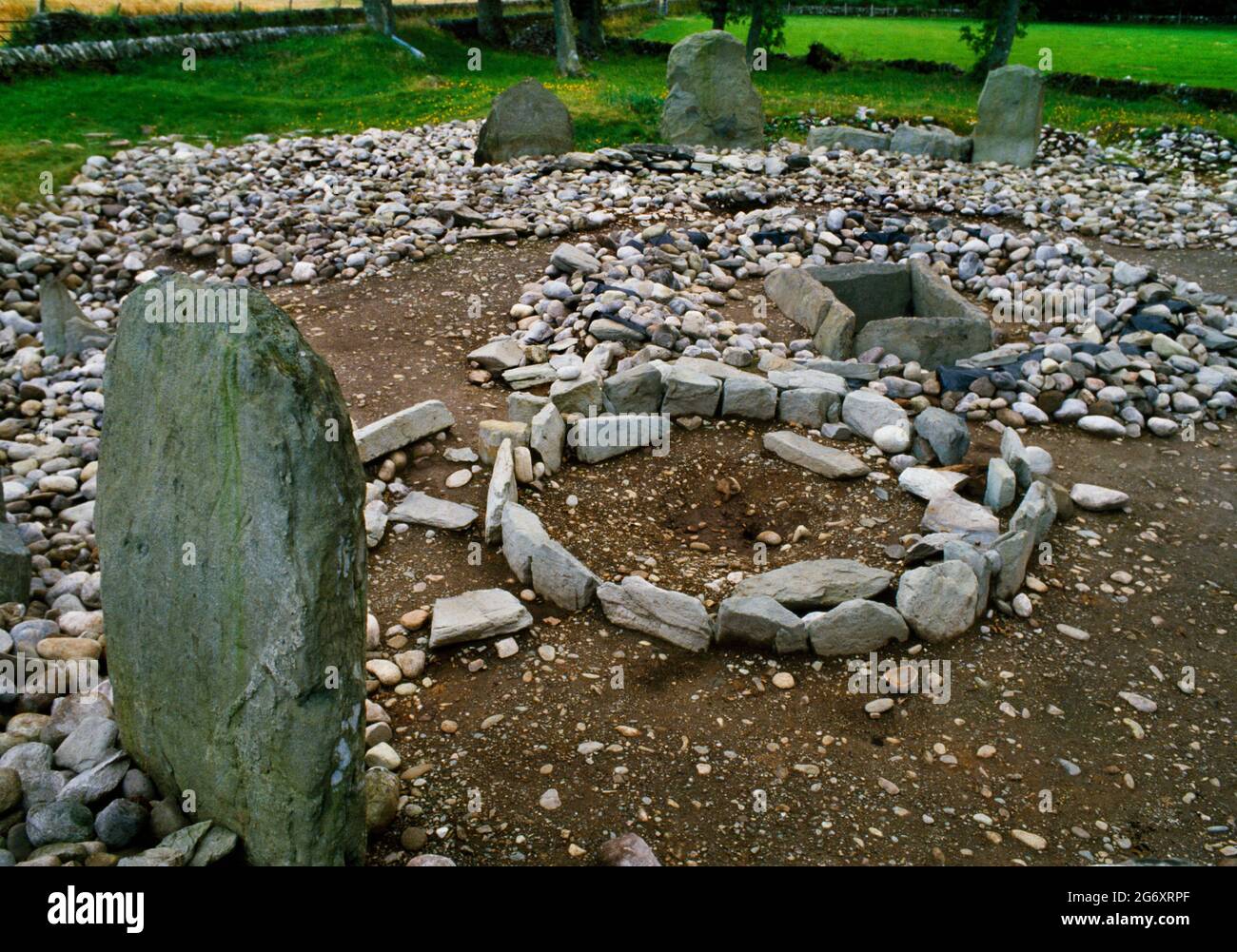 View SW during excavation of the larger of two stone circles in Temple Wood copse, Kilmartin, Scotland, UK: used for burials in the 3rd/2nd millennium Stock Photohttps://www.alamy.com/image-license-details/?v=1https://www.alamy.com/view-sw-during-excavation-of-the-larger-of-two-stone-circles-in-temple-wood-copse-kilmartin-scotland-uk-used-for-burials-in-the-3rd2nd-millennium-image434536551.html
View SW during excavation of the larger of two stone circles in Temple Wood copse, Kilmartin, Scotland, UK: used for burials in the 3rd/2nd millennium Stock Photohttps://www.alamy.com/image-license-details/?v=1https://www.alamy.com/view-sw-during-excavation-of-the-larger-of-two-stone-circles-in-temple-wood-copse-kilmartin-scotland-uk-used-for-burials-in-the-3rd2nd-millennium-image434536551.htmlRM2G6XRPF–View SW during excavation of the larger of two stone circles in Temple Wood copse, Kilmartin, Scotland, UK: used for burials in the 3rd/2nd millennium
 10 December 2019, Saxony-Anhalt, Zackmünde: A visitor of the ring sanctuary Pömmelte walks at sunset through a gate of the complex. The Kreisgrabenanlage is a reconstruction of a ritual place which is said to have existed there since the end of the 3rd millennium BC. The facility is said to have been used astronomically. Two of the entrances to the installation correspond to the position of the rising and setting sun at certain seasonal festivals. Photo: Klaus-Dietmar Gabbert/dpa-Zentralbild/ZB Stock Photohttps://www.alamy.com/image-license-details/?v=1https://www.alamy.com/10-december-2019-saxony-anhalt-zackmnde-a-visitor-of-the-ring-sanctuary-pmmelte-walks-at-sunset-through-a-gate-of-the-complex-the-kreisgrabenanlage-is-a-reconstruction-of-a-ritual-place-which-is-said-to-have-existed-there-since-the-end-of-the-3rd-millennium-bc-the-facility-is-said-to-have-been-used-astronomically-two-of-the-entrances-to-the-installation-correspond-to-the-position-of-the-rising-and-setting-sun-at-certain-seasonal-festivals-photo-klaus-dietmar-gabbertdpa-zentralbildzb-image336223561.html
10 December 2019, Saxony-Anhalt, Zackmünde: A visitor of the ring sanctuary Pömmelte walks at sunset through a gate of the complex. The Kreisgrabenanlage is a reconstruction of a ritual place which is said to have existed there since the end of the 3rd millennium BC. The facility is said to have been used astronomically. Two of the entrances to the installation correspond to the position of the rising and setting sun at certain seasonal festivals. Photo: Klaus-Dietmar Gabbert/dpa-Zentralbild/ZB Stock Photohttps://www.alamy.com/image-license-details/?v=1https://www.alamy.com/10-december-2019-saxony-anhalt-zackmnde-a-visitor-of-the-ring-sanctuary-pmmelte-walks-at-sunset-through-a-gate-of-the-complex-the-kreisgrabenanlage-is-a-reconstruction-of-a-ritual-place-which-is-said-to-have-existed-there-since-the-end-of-the-3rd-millennium-bc-the-facility-is-said-to-have-been-used-astronomically-two-of-the-entrances-to-the-installation-correspond-to-the-position-of-the-rising-and-setting-sun-at-certain-seasonal-festivals-photo-klaus-dietmar-gabbertdpa-zentralbildzb-image336223561.htmlRM2AF08G9–10 December 2019, Saxony-Anhalt, Zackmünde: A visitor of the ring sanctuary Pömmelte walks at sunset through a gate of the complex. The Kreisgrabenanlage is a reconstruction of a ritual place which is said to have existed there since the end of the 3rd millennium BC. The facility is said to have been used astronomically. Two of the entrances to the installation correspond to the position of the rising and setting sun at certain seasonal festivals. Photo: Klaus-Dietmar Gabbert/dpa-Zentralbild/ZB
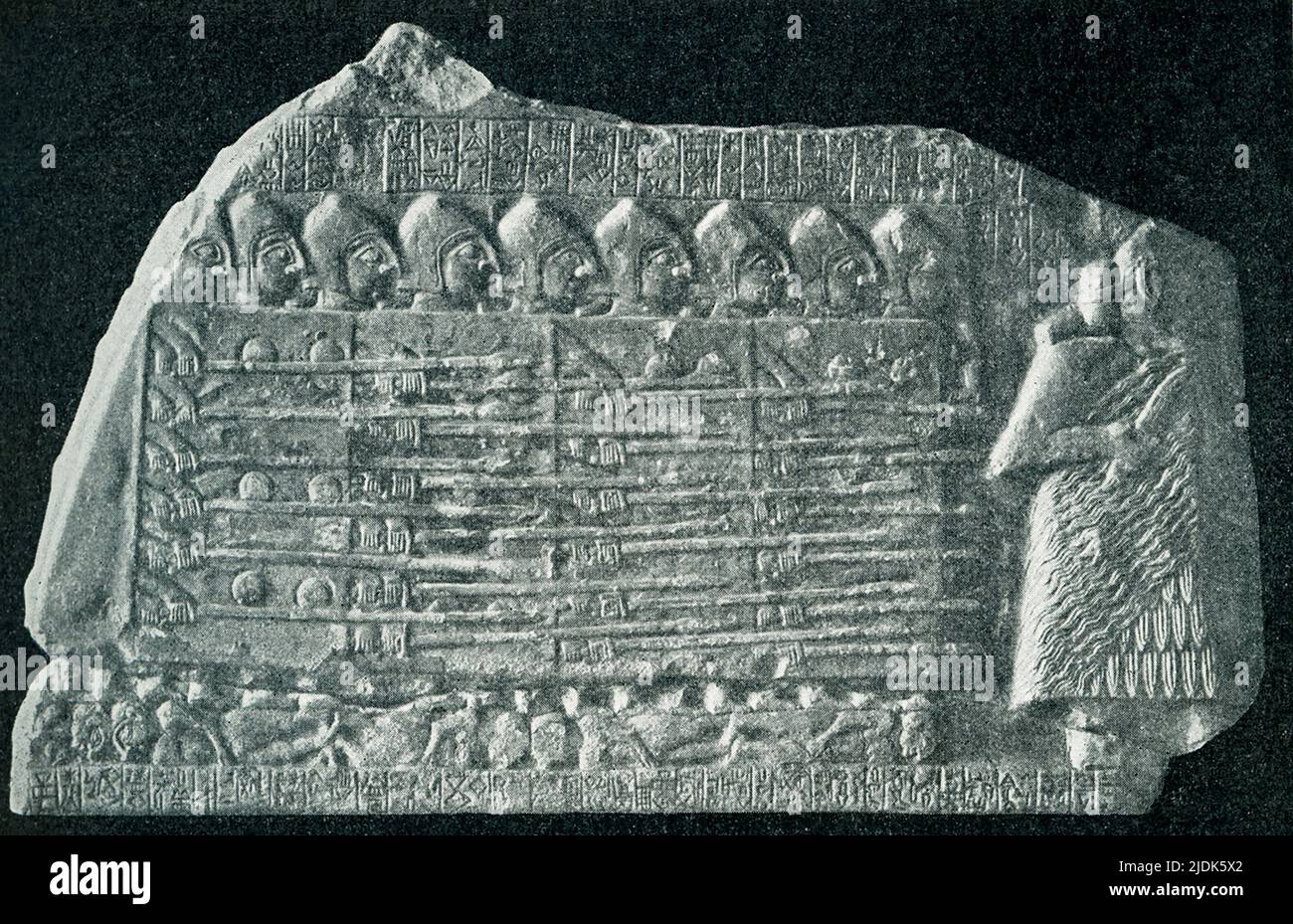 This 1910 image shows the Stele of Vultures was written by Lagash as war propaganda, so when interpreting the Stele, it is important to note that it is one-sided and inherently biased. Scenes are carved on both sides of the stele, with inscriptions filling in the negative space. Dated to between ca. 2600 and 2350 BC, it is a key piece of evidence in the history of warfare. The Stele originates from Tello (ancient Girsu) in Iraq and dates to the Early Dynastic III period. The stele was erected to celebrate the victory of the Sumerian city-state of Lagash, ruled by Eanatum, over its rival Umma. Stock Photohttps://www.alamy.com/image-license-details/?v=1https://www.alamy.com/this-1910-image-shows-the-stele-of-vultures-was-written-by-lagash-as-war-propaganda-so-when-interpreting-the-stele-it-is-important-to-note-that-it-is-one-sided-and-inherently-biased-scenes-are-carved-on-both-sides-of-the-stele-with-inscriptions-filling-in-the-negative-space-dated-to-between-ca-2600-and-2350-bc-it-is-a-key-piece-of-evidence-in-the-history-of-warfare-the-stele-originates-from-tello-ancient-girsu-in-iraq-and-dates-to-the-early-dynastic-iii-period-the-stele-was-erected-to-celebrate-the-victory-of-the-sumerian-city-state-of-lagash-ruled-by-eanatum-over-its-rival-umma-image473092202.html
This 1910 image shows the Stele of Vultures was written by Lagash as war propaganda, so when interpreting the Stele, it is important to note that it is one-sided and inherently biased. Scenes are carved on both sides of the stele, with inscriptions filling in the negative space. Dated to between ca. 2600 and 2350 BC, it is a key piece of evidence in the history of warfare. The Stele originates from Tello (ancient Girsu) in Iraq and dates to the Early Dynastic III period. The stele was erected to celebrate the victory of the Sumerian city-state of Lagash, ruled by Eanatum, over its rival Umma. Stock Photohttps://www.alamy.com/image-license-details/?v=1https://www.alamy.com/this-1910-image-shows-the-stele-of-vultures-was-written-by-lagash-as-war-propaganda-so-when-interpreting-the-stele-it-is-important-to-note-that-it-is-one-sided-and-inherently-biased-scenes-are-carved-on-both-sides-of-the-stele-with-inscriptions-filling-in-the-negative-space-dated-to-between-ca-2600-and-2350-bc-it-is-a-key-piece-of-evidence-in-the-history-of-warfare-the-stele-originates-from-tello-ancient-girsu-in-iraq-and-dates-to-the-early-dynastic-iii-period-the-stele-was-erected-to-celebrate-the-victory-of-the-sumerian-city-state-of-lagash-ruled-by-eanatum-over-its-rival-umma-image473092202.htmlRF2JDK5X2–This 1910 image shows the Stele of Vultures was written by Lagash as war propaganda, so when interpreting the Stele, it is important to note that it is one-sided and inherently biased. Scenes are carved on both sides of the stele, with inscriptions filling in the negative space. Dated to between ca. 2600 and 2350 BC, it is a key piece of evidence in the history of warfare. The Stele originates from Tello (ancient Girsu) in Iraq and dates to the Early Dynastic III period. The stele was erected to celebrate the victory of the Sumerian city-state of Lagash, ruled by Eanatum, over its rival Umma.
 Small Beak Spouted Pitcher Early Bronze Age 3rd Millennium BC Antalya Bolgesi Region Turkey Turkish Pottery Stock Photohttps://www.alamy.com/image-license-details/?v=1https://www.alamy.com/stock-photo-small-beak-spouted-pitcher-early-bronze-age-3rd-millennium-bc-antalya-37953296.html
Small Beak Spouted Pitcher Early Bronze Age 3rd Millennium BC Antalya Bolgesi Region Turkey Turkish Pottery Stock Photohttps://www.alamy.com/image-license-details/?v=1https://www.alamy.com/stock-photo-small-beak-spouted-pitcher-early-bronze-age-3rd-millennium-bc-antalya-37953296.htmlRMC5MWPT–Small Beak Spouted Pitcher Early Bronze Age 3rd Millennium BC Antalya Bolgesi Region Turkey Turkish Pottery
 Tazza, 3rd millennium BC. South East Asia, Thailand, Ban Chiang, Neolithic period. Reddish earthenware with painted and incised decoration; overall: 9.2 x 7.4 cm (3 5/8 x 2 15/16 in Stock Photohttps://www.alamy.com/image-license-details/?v=1https://www.alamy.com/tazza-3rd-millennium-bc-south-east-asia-thailand-ban-chiang-neolithic-period-reddish-earthenware-with-painted-and-incised-decoration-overall-92-x-74-cm-3-58-x-2-1516-in-image240459142.html
Tazza, 3rd millennium BC. South East Asia, Thailand, Ban Chiang, Neolithic period. Reddish earthenware with painted and incised decoration; overall: 9.2 x 7.4 cm (3 5/8 x 2 15/16 in Stock Photohttps://www.alamy.com/image-license-details/?v=1https://www.alamy.com/tazza-3rd-millennium-bc-south-east-asia-thailand-ban-chiang-neolithic-period-reddish-earthenware-with-painted-and-incised-decoration-overall-92-x-74-cm-3-58-x-2-1516-in-image240459142.htmlRMRY5T2E–Tazza, 3rd millennium BC. South East Asia, Thailand, Ban Chiang, Neolithic period. Reddish earthenware with painted and incised decoration; overall: 9.2 x 7.4 cm (3 5/8 x 2 15/16 in
 The site of Babylon, Al Hillah Iraq. Babylon, city-state of ancient Mesopotamia, founded early in the 3rd millennium BC. Stock Photohttps://www.alamy.com/image-license-details/?v=1https://www.alamy.com/stock-photo-the-site-of-babylon-al-hillah-iraq-babylon-city-state-of-ancient-mesopotamia-57364476.html
The site of Babylon, Al Hillah Iraq. Babylon, city-state of ancient Mesopotamia, founded early in the 3rd millennium BC. Stock Photohttps://www.alamy.com/image-license-details/?v=1https://www.alamy.com/stock-photo-the-site-of-babylon-al-hillah-iraq-babylon-city-state-of-ancient-mesopotamia-57364476.htmlRMD994Y8–The site of Babylon, Al Hillah Iraq. Babylon, city-state of ancient Mesopotamia, founded early in the 3rd millennium BC.